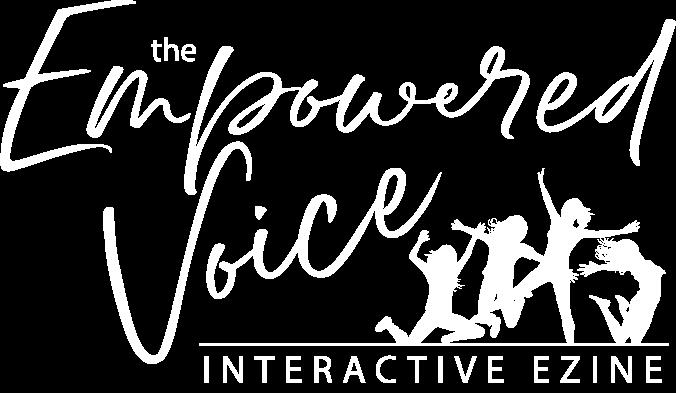
INTERACTIVE EZINE | APRIL 25


INTERACTIVE EZINE | APRIL 25
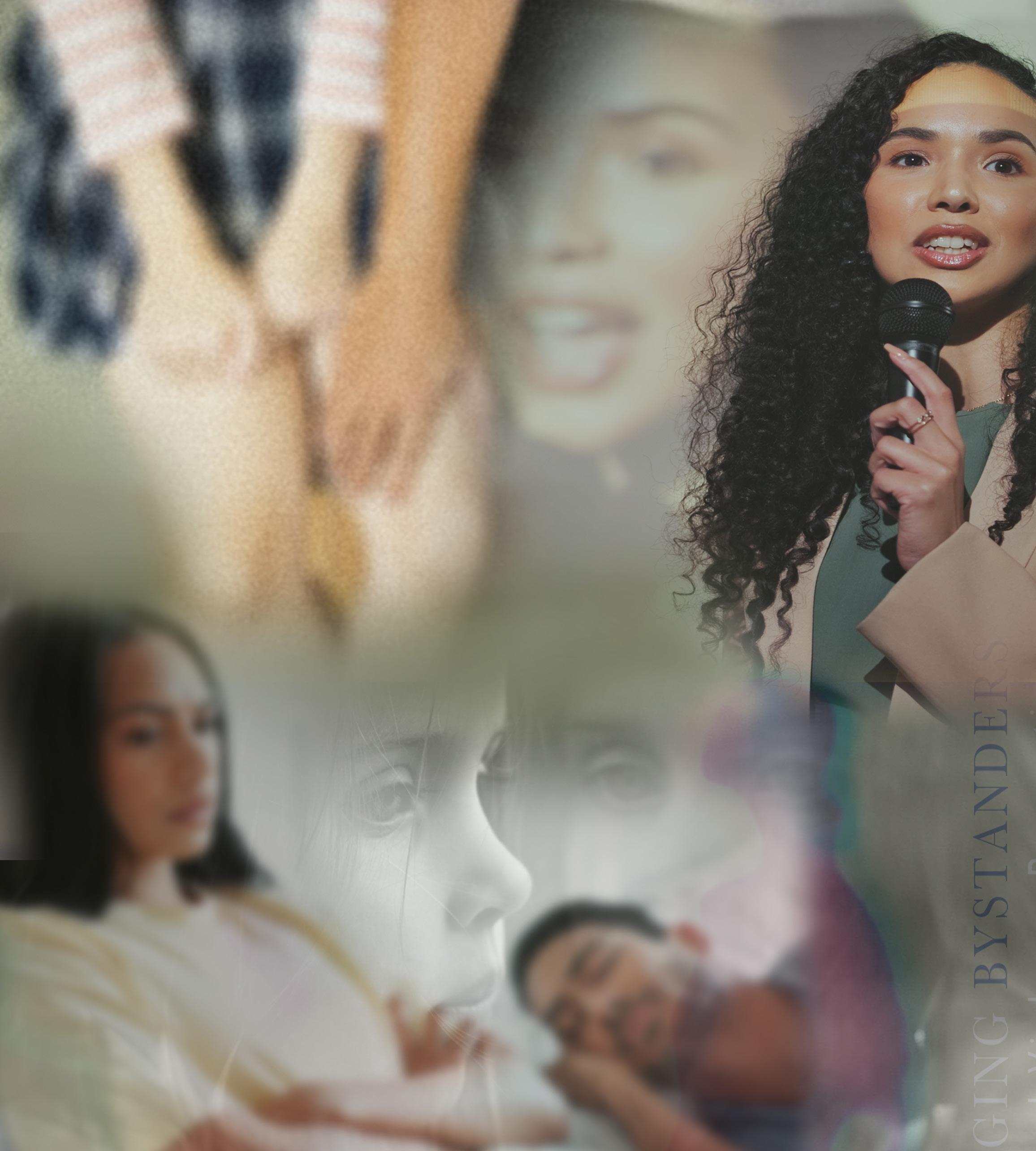
HOPE FOR A FUTURE
I BREATHE
TORNADO IN MY MIND, MY MOUTH FULL OF BEES
TALKING ABOUT CHILD
SEXUAL ABUSE
HEALING MY INNER CHILD, A BEAUTIFUL GIRL WHO LOVED TO CLIMB TREES
BREAKING THE CYCLE
BRAVE VOICES
FEMALE SEXUAL OFFENDERS
THE BUTTERFLY, THE SNAKE, AND THE BEE
THIS IS ME…HEALING
MY HEALING SPACE
GHAZAL ON HOW I AM (NOT) A SURVIVOR
BUILDING A NEW
SEXUAL BLUEPRINT
RESTORATIVE JUSTICE
RESILIENCE
by
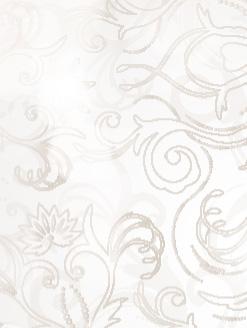
April 2025

CLAIRE O’LEARY Founder, Editor-in-Chief Creative Director
SHERYL BLAHNIK Copy Editor
DONNA BULATOWICZ
FEATHER BERKOWER
BRENDA CAVALLO
LAURA DAVIS
BETH MARER- GARCIA
CHERYLE GAIL
RACHEL GRANT
DONNA JENSON
BRINN LANGDALE
GLORIA MASTERS
CLAIRE O’LEARY
SHIRKYDRA ROBERTS
KARO SKA
JOAN TABACHNICK
KELLY WALLACE
BABS WALTERS
HOLLIS WILDER
TOMO SAITO
®2025 THE EMPOWERED VOICE, VOICES HEARD ALL RIGHTS RESERVED

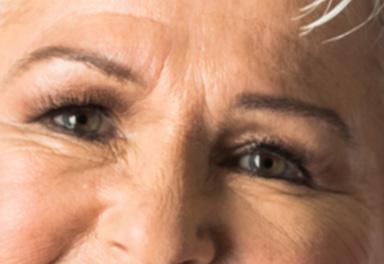

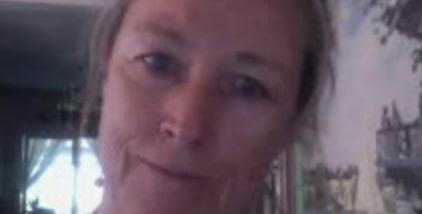

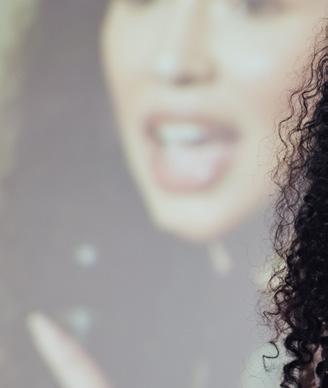


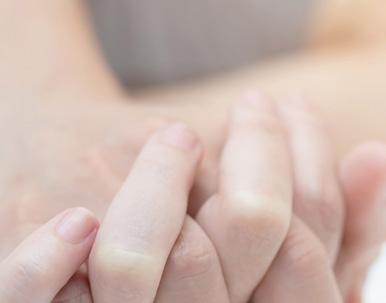
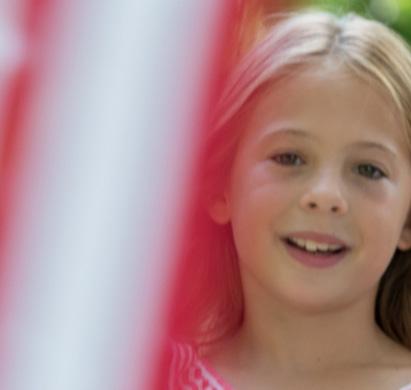

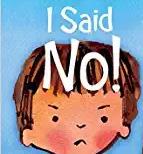

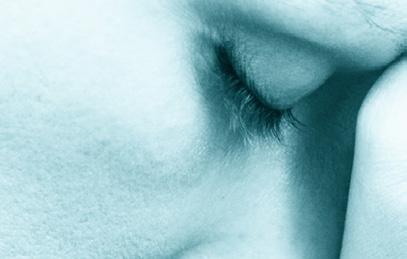
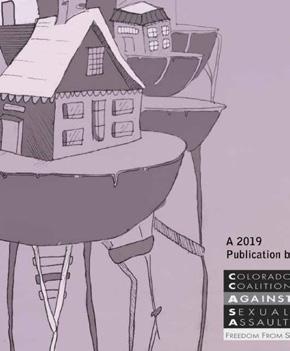
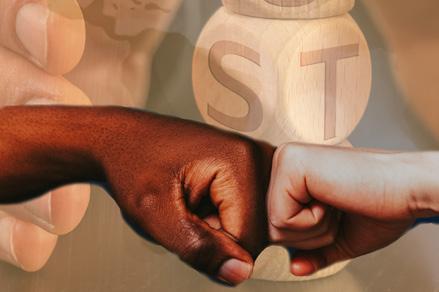

I awaken in the dark
Cold and clammy
Shook up from a dream
I can’t remember
I can’t shake the feeling
The fear
The sense of foreboding
I lay there in the darkness
Wondering
What shook me so?
I look at my phone
Ugh! 3:30
And I feel wide awake
I lay there waiting
I toss
I turn
I’m hot
I’m cold
At 4:30 I get up
Make coffee
Pour Over
I turn on the electric kettle
I heat my cup and brewer under hot running water
The sound, like soft falling rain to my broken ears, awakens my senses
By Anonymous
I take my brown paper filter from the cupboard
Place it in the ceramic … brewer
Add coffee
Slowly I pour the hot water into the grounds
Letting the water spill out slowly from center in an ever expanding outward spiral
I watch
As the water seeps down
Ever so slowly
I think of the nearby canyons
Created by water seeping into the cracks between rocks
Ever so slowly
My mind calms
My breathing slows I watch I breathe
I’m safe
I add cream
The coffee slides down
My throat
The warmth soothing I breathe
I sip
I breathe
By Claire O’Leary
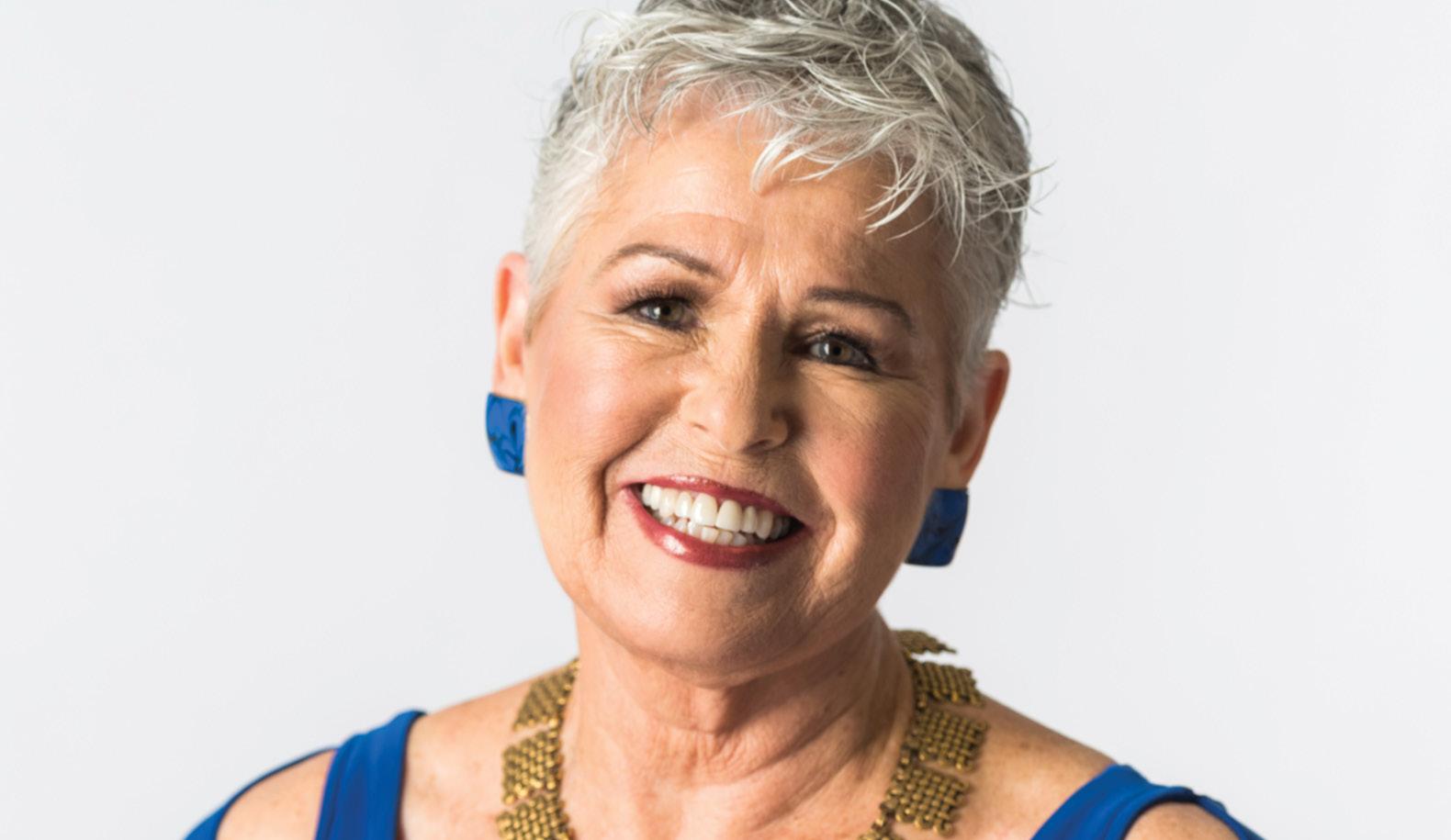
As the articles begin to pour in, it becomes clear that our focus this month is around advocacy and prevention.
We all have the same end goal, to end sexual abuse of all kinds
It’s Sexual Abuse Awareness Month after all and Child Abuse Awareness Month as well, when all us advocates speak up about the different kinds of incest and child sexual abuse (I/CSA), ways for each of us to heal and how to protect our children; especially since we were not protected.
We begin with a healing moment of poetry, I Breathe, then move into Talking about Child Sexual Abuse Can Help End Child Sexual Abuse by published author, Joan Tabachnick , who discusses getting real to end abuse. Featured in this issue is Brave Voices with multiple interviews by Cheryle Gail and others in Breaking The Cycle Through Awareness. We learn how much more common female to female abuse is than we were aware in Female Sexual Offenders by Donna Bulatowicz . A poem expressing trauma beyond I/CSA in This is me… HEALING, by Claire O’Leary (me).
Our Building Resilience section holds more articles than ever with our ongoing contributor Rachel Grant addressing an all too common theme with survivors in Building a New Sexual
Blueprint. Another frequent contributor, Donna Bulatowicz shares her experience with getting justice in Restorative Justice. Another published author, Gloria Masters joins us for the first time with Resilience
The Resources section is stronger than ever with almost two pages of new books and online resources. The new resources are highlighted with ** to make them easier to find in case you’ve “seen it all before.” You’ll find memoirs , books for advocacy, teens, young adults along with kids , parents , and adult survivors , with links to online resources
Share your wisdom and your stories with me at Claire@ClaireOLeary.com.
View Past Issues of Voices Heard
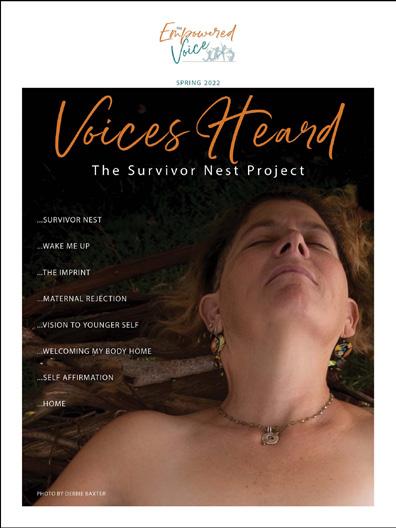
The one and only printed issue of Voices Heard (thus far) is available for purchase at a discount (April only) for only $20 . It would make a lovely gift for another survivor or those associated with survivors. Check it out REACH OUT ANY TIME!
“
…Advocates speak up about the different kinds of incest and child sexual abuse … ways for each of us to heal and how to protect our children…
By Joan Tabachnick
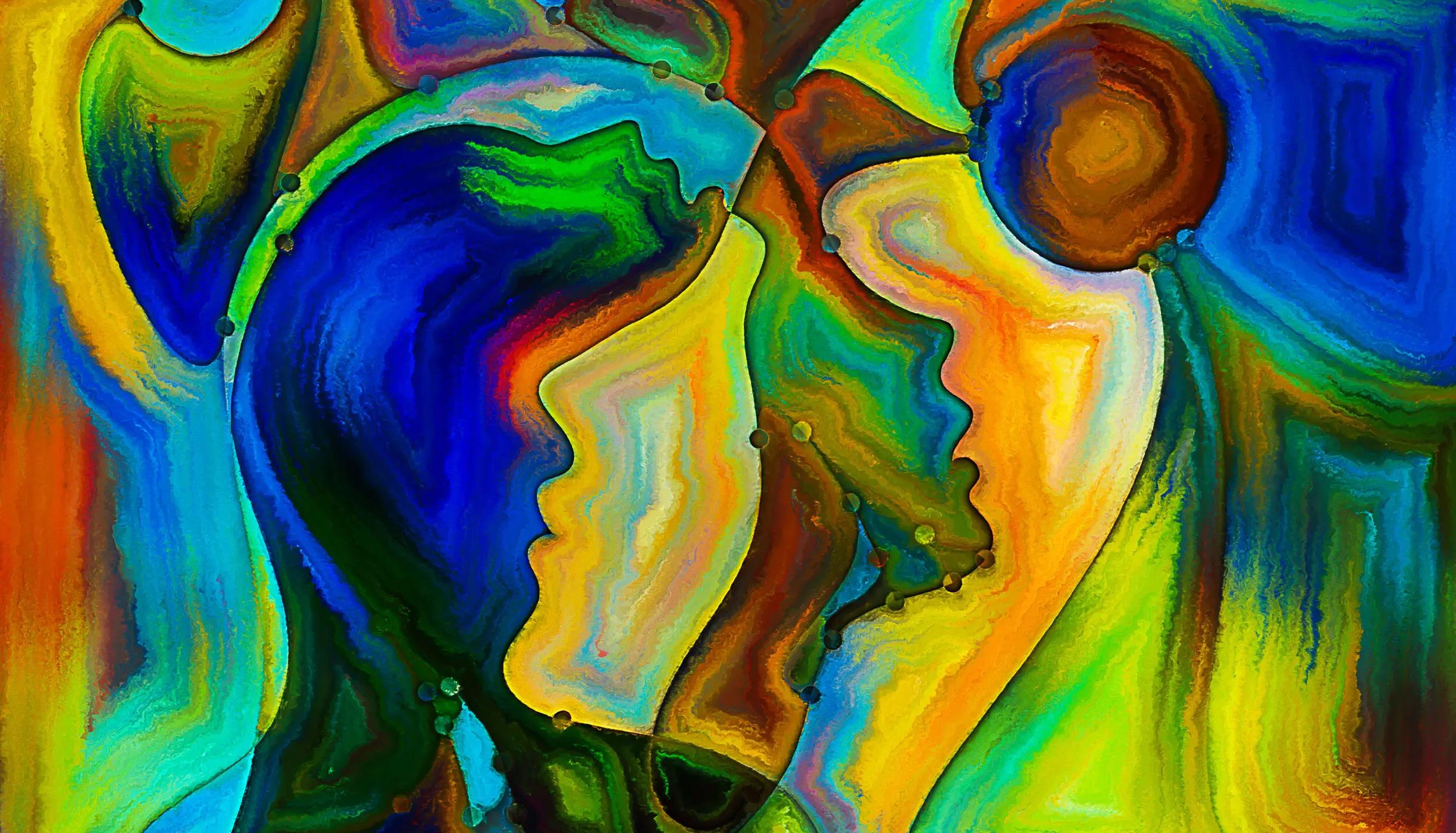
“ However, prevention means being real about the problem as it is and being willing to develop a range of solutions that aren’t going to be simple, neat fixes.
Child sexual abuse is preventable, according to Joan Tabachnick, a longtime leader in the effort to stop the exploitation of children. But addressing the problem will require families and communities to actively engage in uncomfortable conversations.
INTERVIEW CONDUCTED AND EDITED BY TED O’CALLAHAN
Previously published in Yale Insights, Ideas from the Yale School of Management. September 10, 2024
Q: What do people need to understand about child sexual abuse?
For many years, we ignored child sexual abuse. When I started working in this field, more than 30 years ago, there weren’t stories in the newspaper. There was nothing on television news. There wasn’t even Law & Order: Special Victims Unit.
If it hadn’t been for survivors speaking out, I don’t think we ever would’ve broken the silence. Their determination and courage to keep speaking until they were listened to was phenomenal. That changed everything.
Many people assume child sexual abuse is inevitable. I firmly believe it is preventable. However, prevention means being real about the problem as it is and being willing to develop a range of solutions that aren’t going to be simple, neat fixes.
We’ve broken the silence, but we haven’t really learned to talk about sexual abuse yet. That’s the next step for this work.
Q: What do you mean?
If we collectively were willing to talk about this very difficult subject and see clearly both the scope of child sexual abuse and the impact it has, we would have large-scale investment in care for survivors and in prevention so there wouldn’t be more victims.
Many people assume child sexual abuse is inevitable. I firmly believe it is preventable. However, prevention means being real about the problem as it is and being willing to develop a range of solutions that aren’t going to be simple, neat fixes.
Most of us know someone who has been harmed by sexual violence, whether we realize it or not. As survivors speak out, more and more of us become aware of that truth. Yet, we aren’t willing to talk about the fact that if you know someone who has been abused, you likely know someone who has committed sexual abuse, since child sexual abuse usually occurs within families.
The examples that come to mind when people think about child sexual abusers are our worst fears—people like Larry Nassar, who sexually abused hundreds of girls as the team doctor for U.S. national women’s gymnastics. It’s important to acknowledge that people like that exist. They need to be arrested and removed from society to stop them from causing further harm. However, when we fixate on the most extreme instances, it keeps us from seeing the majority of the abuse that is happening. Recent research found that 70% of children who have been sexually abused were abused by another, often older, child. And it’s estimated that the majority of youth who perpetrate abuse were traumatized themselves.
A child who has been abused and acts out that abuse on another child is different from someone who has carried out predatory behavior for decades. If you grew up in a household without boundaries, it’s hard to know what is and isn’t acceptable behavior. We can’t just arrest our way out of this, especially when we are talking about children and teens. We need different tools for responding to those very different situations.
Q: Does treatment work?
Only in recent decades have we begun looking at preventing problematic sexual behaviors in children and youth. This opportunity for prevention was largely ignored until quite recently. And there is hope, the research shows that most children or teens will not reoffend sexually—the recidivism rate for children and youth is lower than 5%.
That’s for when the abuse has been reported, and it was possible to intervene early in the young person’s development. There’s a lot more we need to understand, and more research is needed because we know children will always be making mistakes and sometimes the mistakes can cause tremendous harm to someone else; we need to be able to support both the child that has been harmed and the child that has caused the harm.
There are a number of ways to consider accountability. First, it’s estimated that 90% of abuse is not reported. There’s no accountability there.
Second, there needs to be less onus on survivors to be the only ones speaking up. We all need to be responsible. We can recognize that when a child has been sexually abused, everyone surrounding that child is also harmed. It’s not the same as what happens to the child, but there is harm to the families, friends, and communities around the child and the adult, teen, or child who harmed them. All of us are affected. So, we all need to take more responsibility.
“
A child who has been abused and acts out that abuse on another child is different from someone who has carried out predatory behavior for decades. ... We need different tools for responding to those very different situations.
9
“
It’s really important to never tell a child or their family that they will be damaged forever. If you or your child has been sexually abused, your life may be forever changed, but it doesn’t mean that you are always living in that harm.
Early on in doing this work, I interviewed convicted sex offenders in prison. This is something I learned at Yale SOM. If I wanted to understand all possible audiences for abuse prevention messages, I needed to talk with them to learn what they would want to know, who they would listen to, and so much more. It was a radical idea at the time but grounded in basic marketing.
I remember going to a maximum-security prison in New York, sitting at a metal table in a room with a small, barred window and prison green walls. The man sitting across from me was warm and affable. He said that, to him, it was obvious that he was sexually abusing young boys but nobody in his family, nobody in his circle of friends, and nobody at work ever asked him about it. He said, “I felt it was tacit permission.”
We need to make clear there is no tacit permission. The men I spoke with said they chose children who were unlikely to disclose what was happening to them . Rather than blaming children for not reporting, we can help them by looking more closely at what’s happening around us. I’m not saying being vigilant at every moment, but if there’s something that you are concerned about, ask a question, step in to set a boundary. That’s a path to accountability.
Another model for both treatment and accountability was developed by Hollow Water, a First Nation program in Canada. A member of the First Nation who has sexually abused someone in the community is given a choice of either going through the criminal justice system or a restorative justice program in their tribal community. The program includes a victim’s circle where the harm doer listens to the impact of what they did on the adult, adolescent, or child as well as the impact on every member of the community. Some people choose prison over that difficult work. But Hollow Water was developed because this community believed that offenders returned from jail without having learned anything and too often offended again.
Restorative justice asks three questions: who has been harmed, what was the harm, and what can be done to repair that harm. Hollow Water seeks to provide healing to the person harmed. It seeks to have offenders take responsibility for what they’ve done and the harm they’ve caused. And it seeks to maintain ongoing accountability in the person who harmed through being held within the community—accepting them but not their harmful behaviors.
Having alternatives to our criminal justice system makes so much sense when we’re talking about families. But that requires a real shift in how we think about accountability.
Q: What do we know about the impact of child sexual abuse on survivors?
Research shows that sexual abuse impacts people differently. It is trauma. It is devastating. But people can heal. It’s really important to never tell a child or their family that they will be damaged forever. If you or your child has been sexually abused, your life may be forever changed, but it doesn’t mean that you are always living in that harm.
While we need to work on prevention that targets everyone, where I find the most promise is how we prevent the development of these behaviors in children and youth. That means not only teaching a child that no one has the right to touch you, but also that you don’t have the right to touch someone else.
A lot depends on what other supports a child has. Protective factors like love and support mitigate some of the impact of the abuse.
We know that if we do address abuse, there’s reason for hope for both the people who have been harmed and the people who have done the harm. I think that’s a really important piece that we’ve learned over these last 30 years.
Q: What else would you point to as things we’ve learned?
Again, we’ve gotten better at recognizing that sexual abuse is an issue. We have a long way to go, but we’ve gotten better supporting survivors. And in the last ten years, it has become clear that perpetration prevention is a critical piece of this puzzle that has been
missing. It’s what I care most about. I’m proud that over my career, I’ve been able to shift the dial a little bit to where prevention, particularly preventing the perpetration of child sexual abuse, is now part of the conversation.
While we need to work on prevention that targets everyone, where I find the most promise is how we prevent the development of these behaviors in children and youth. With changing social norms and devices allowing kids access to pornography, we need to talk with children about boundaries at a very early age.
That means not only teaching a child that no one has the right to touch you, but also that you don’t have the right to touch someone else. It means talking about healthy relationships and eventually about the importance of consent. Teaching about healthy relationships, boundaries, and consent are all concepts key to perpetration prevention.
In public health, we talk about green-, yellow-, and red-light behaviors. Green-light behaviors are appropriate and healthy. Yellow-light behaviors are a concern—not abuse, not reportable, but they need to be addressed. It’s important to talk about what’s concerning. Kids are going to make mistakes. We need to be able to have a non-shame-based response, so yellow-light behaviors are recognized as something that isn’t OK and needs to be corrected, apologized for, and not repeated. And having green- and yellow-light conversations can make it easier to know, “That was a red light. We need to report it.”
Q: When people are concerned or are trying to have conversations that they aren’t quite sure how to approach, what can they do?
There are resources people can find online. One I know well, because I helped to start the organization, is Stop It Now. If someone’s breaking boundaries or sees that someone is crossing the line for them or their child, Stop It Now has a helpline where anyone can call to learn how to have a “I’m concerned about how you’re acting around my child” conversation. People talk about it being hard to speak truth to power. I believe speaking truth to someone you love is even harder. Shifting the way we set boundaries can be invaluable. For example, if Uncle Henry is tickling your child and they say stop, rather than saying, “Oh, Uncle Henry doesn’t mean anything by that,” it can be an opportunity to step in and say, “Uncle Henry, clearly my child has just said, ‘Stop’ three times. We are teaching our child it’s OK to say no. Can you please respect boundaries? ” It’s modeling it for your child. And you’re also telling Uncle Henry, here’s a clear boundary around the family.
Q: What if that conversation doesn’t go well or concerns aren’t alleviated?
I remember one woman who called the helpline to say, “This is what I’m seeing.” She called back again and again as she was learning more and more. Eventually she knew enough to make a report, which is a very hard thing to do.
When people are sure sexual abuse is happening, most will say something. But child sexual abuse is something that’s done behind closed doors. And so you’re probably not 100% sure what’s happening. What if you are wrong and by acting you lose the person who creates income for your family, and your whole family is shamed and vilified?
“
’People talk about it being hard to speak truth to power. I believe speaking truth to someone you love is even harder.
Shifting the way we set boundaries can be invaluable.
“ It gave me chills. It really would’ve been a nice, easy answer to say, “I’ve learned my lesson. I will never do this again.” I wanted him to say it. And the audience very clearly wanted him to say it. But his answer challenges us all to stay engaged.
If your only option is to call in the police and child protective services, and if you are certain that will destroy your family, weighing that against not being sure what’s going on—it’s a huge barrier. I have a lot of compassion for how scary that can be. That’s why being able to ask questions, get support and education, is valuable.
Q: Stop It Now also fields calls from people who are abusers or are worried about their thoughts and feelings towards children.
Fran Henry founded Stop It Now. She is a survivor of child sexual abuse. She has discussed publicly that she was abused by her father. That led her to understand that it’s putting too much on a child to ask them to report their own family member. It would have helped her if her father would have taken responsibility.
We can’t depend on abusers reporting themselves, but the first person to call the helpline said, “I’m a sex offender. I need help.” There are people out there who know what they’re doing is wrong, but don’t know where to turn. If we want to stop child sexual abuse, why wouldn’t we make it possible for abusers to get support? Why wouldn’t we help keep potential abusers from starting?
We need to have both accountability and compassion. You can’t expect someone to take responsibility if you don’t have compassion. But compassion without accountability doesn’t help end sexual abuse. It doesn’t create safety, doesn’t allow the survivor the opportunity to heal. Still, it’s very hard for us to think about compassion and accountability together. It’s antithetical to how we typically think about addressing sexual abuse.
Q: It’s hard to hear that we should have compassion for someone who has done something horrible. It’s hard to hear that a solution is going to be uncomfortable and ongoing in the sense that it might be more effective for an offender to be held in the community rather than shunned.
Some of my best advocacy work has come from the intensity of feeling self-righteous. But I’ve come to believe that as soon as I’m feeling self-righteous, I’m not on the right pathway to fully addressing the problem.
One of the more powerful things that I’ve done in my career was something called the Dialogue Project. We asked survivors of child sexual abuse to talk together with people who have caused harm about the need for prevention.
In preparing for these public events, a lot of people would say, “How can you have a survivor and offender sitting right next to each other? ” The sarcastic part of me would think, “For many families, that happens every day at breakfast. The difference is we’re talking about it.” But usually what I would say—which was equally true—was, “I think it’s really important to listen to each of these voices, listen to what we can learn, especially when we can hear them together.”
In many cases, what the dialogues did was help the audience work through their resistance around talking about child sexual abuse.
One of the men in the Dialogue Project had sexually abused young boys. He was asked if he would say, “I will never sexually abuse a child again.” He answered, “I don’t want to do it again. I don’t want to harm anybody. I don’t want to go back to prison. But I count on my friends and family to make sure I am following my safety plan and to confront me if I veer away from that. So, I won’t promise that I will never do this again because that lets everyone off the hook.”
It gave me chills. It really would’ve been a nice, easy answer to say, “I’ve learned my lesson. I will never do this again.” I wanted him to say it. And the audience very clearly wanted him to say it. But his answer challenges us all to stay engaged.
There are so many ways where changing the way we think and talk about the problem could open up new possibilities. When I started this work, people who worked with victims and people who worked with offenders were in completely different silos. Even today, I know of only two organizations in the country that work with both survivors and offenders in the same organization. There are absolutely circumstances where working with each group separately may be the most beneficial approach, but too often I think it’s for our professional comfort because clearly there are circumstances, especially within families, where breaking down the silos is crucial for moving forward.
Families don’t experience this in separate silos. Think about what it means for the parent who is shuttling one child who has been abused over here and another child who committed the abuse over there. In terms of the help and support they need, they deserve professionals who have experience working with the whole family dynamic.
Q: How did you come to do this work?
After college, I worked on environmental issues. I quickly realized environmental policy isn’t decided on the latest scientific research; it’s based on whether or not a policy is economically feasible. I didn’t understand economics, so I decided to get an MBA. I wanted a program that would address the human aspect of the issues facing society. Yale SOM was the perfect blend of business and society.
After graduating, I returned to doing environmental work. When a project I was working on lost funding, I sought out Fran because the work she was doing in nonprofit consulting sounded interesting. She told me about consulting. But she also told me about her effort to launch Stop It Now. It was so clear that what she was trying to do could make a difference that I started volunteering. When we raised enough money, I became the second employee.
Q: Has your experience at Yale SOM shaped how you do the work?
I’ve run across very few people who have MBAs doing sexual violence work, but it has been an invaluable foundation. Budgets don’t scare me, but more importantly, I’m always thinking both strategically and tactically. We agree on the goal of ending child sexual abuse. How do we get there? What works? What do we need to have in place to make that happen? What audiences do we need to reach? The approach of thinking strategically and tactically got drilled into me at Yale SOM.
Additionally, because of the networks I had from Yale SOM, people have shared expertise and donated their time and skills. That has been a huge piece of completing numerous projects and was particularly important because sexual abuse prevention is not an area which is well-funded. It’s very hard to get people to donate to this kind of work. A $10,000 grant made a huge difference for Stop It Now and allowed us to start the first helpline for people at risk to sexually abuse and their friends and families. Another organization where I was the executive director, MASOC , the Massachusetts Society for a World Free of Sexual Harm by Youth, ran on $25,000 a year for over 15 years before state grants gave us a little more leeway. Because all these organizations are so lean, even the smallest donation can have a huge impact.
Q: How do you keep doing such challenging work without burning out?
You have to have a sense of hope, and I do. I am inspired by the resilience of people. I see the progress we have made. People are starting to understand that child sexual abuse can be prevented. The research shows that prevention is a smart investment. Now we just have to galvanize public opinion.

Joan Tabachnick brings over 30 years of experience developing educational materials and innovative sexual violence prevention programs for national, state and local organizations. Her primary focus is on preventing the perpetration of sexually harmful behaviors, particularly in adolescents and young adults. Joan developed the original programming and materials for Stop It Now!, was Executive Director of MASOC, and a fellow at US Department of Justice, SMART Office. She is continuing her consulting practice as well as her commitment to opening the door for healing and prevention for those at risk to cause harm.
Joan’s written work includes a National Sexual Violence Resource Center (NSRVC) publications titled “Engaging Bystanders in Sexual Violence Prevention,” and another titled “Family Reunification after Child Sexual Abuse,” through ATSA she co-authored “A Reasoned Approach: The Reshaping of Sex Offender Policy to Prevent Child Sexual Abuse” and most recently, “Safety Planning for Students Responsible for Sexual Misconduct ” through the Victim Rights Law Center, as well as numerous articles and book chapters. She has received a lifetime achievement award from ATSA, the Gail Burns Smith award through the NSVRC and the Points of Light award from the NAPN. Visit www.joantabachnick.com for more information. Many of her publications are available free as pdf’s
By Cheryle Gail
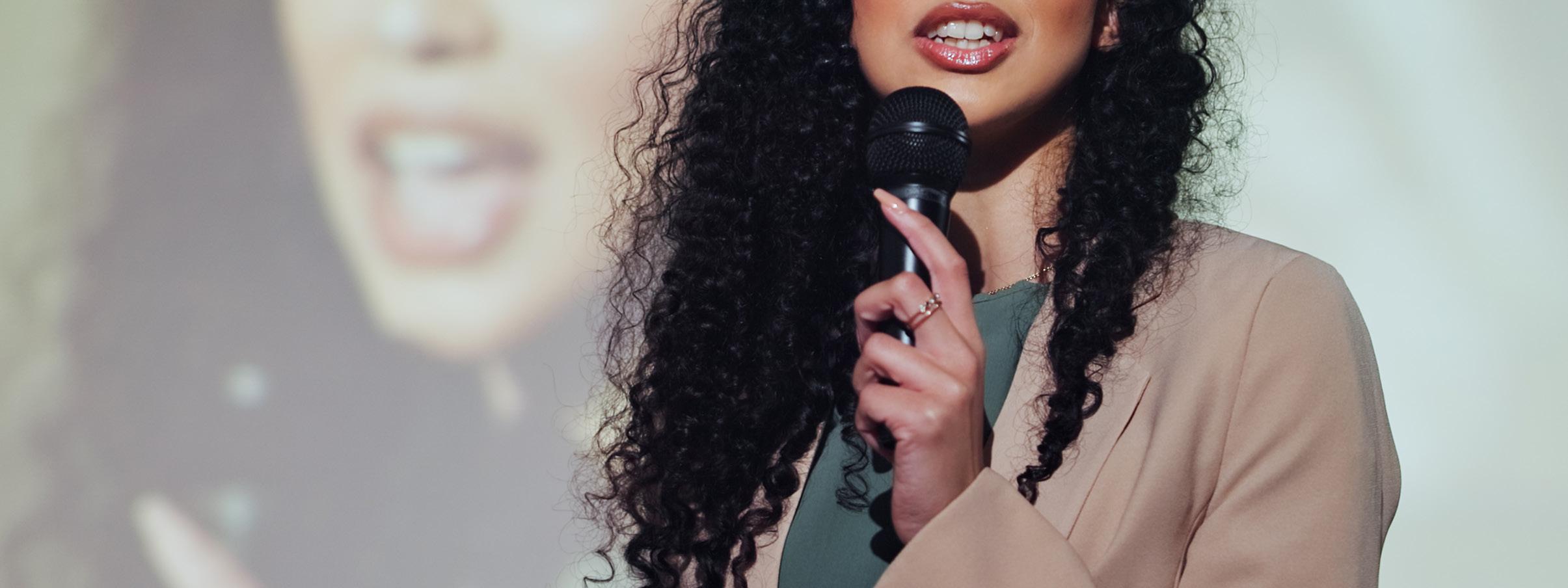
Cheryle Gail is the founder of Brave Voices, an initiative dedicated to breaking the silence that has allowed childhood sexual abuse to persist for generations.
“
These interviews are not just testimonies — they are historical records of a crisis hidden in plain sight.
Through Brave Voices, Cheryle creates space for survivors to share their lived experiences—unfiltered, unvarnished, and deeply necessary. Her work is rooted in the belief that by speaking openly about the realities of childhood sexual harm, society can finally confront its’ staggering prevalence and take responsibility for prevention.
Brave Voices hosts interviews with adult survivors through Archive StoryCorps, ensuring their lived experiences are permanently preserved in the Folk-life section of the Library of Congress. These interviews are not just testimonies—they are historical records of a crisis hidden in plain sight. While statistics suggest that one in three girls and one in five boys experience sexual harm before the age of 18, these numbers vastly underestimate the true scale of the crisis, as most survivors never report their abuse. Almost all the individuals interviewed through Brave Voices never
spoke up as children. Their silence was shaped by fear, shame, confusion, and a culture that refuses to see the truth—or to thoroughly care for and support the victims.
The inspiration for Brave Voices came after the murder of George Floyd. Though Cheryle never watched the video of the police officer’s knee on Floyd’s neck, she understood its‘ impact—how undeniable truth can force the world to change. In contrast, terms like “sexual abuse” or “sexual harm” often fail to convey the horror of what truly happens to a child. That’s why Brave Voices goes beyond labels. The project documents the precise realities: a grandfather who “loved” his grandchild, a trusted caregiver who crossed an unimaginable line, a mother unknowingly leaving her child alone with a predator. These lived experiences serve as evidence, undeniable and powerful, demanding acknowledgment and action.
Cheryle knows this work intimately because she, too, was harmed. Her abuser was her brother, ten years older, who had likely been harmed himself by a neighbor. His wife—who was present but complicit—had suffered abuse at the hands of four family members. It’s a cycle that has repeated
itself across generations, fueled by silence, ignorance, and shame. Cheryle believes that if open conversations about childhood sexual harm had been normalized, her brother and his wife might have sought help instead of numbing their pain with drugs and alcohol. Perhaps, in a world more willing to face this reality, her own abuse could have been prevented.
Determined to stop the cycle, Cheryle pursued education and healing. She earned an AA in Child Development and a BA in Early Childhood Education, dedicating her career to understanding childhood trauma and prevention. In 1988, she became a deep tissue therapeutic massage therapist, a practice that revealed firsthand the physical toll of childhood sexual harm.
Over decades of work, she observed patterns among survivors chronic jaw pain, migraines, digestive disorders, anxiety clear evidence that trauma is stored in the body.
Brave Voices amplifies the lived experiences of those who have endured sexual harm, shedding light on its devastating emotional, relational, and physical consequences. But its’ mission is not only to document the past—it is to change the future. The key to prevention lies in education and responsibility. Adults must stop relying on children to protect themselves. We tell kids to “say no” or “run,” but that is not enough— it has never been enough. The responsibility is on us, the adults, to ensure that no child is ever placed in a position where they must defend themselves against harm.
Brave Voices is a call to action. It urges parents to ask real questions, like:
• What safeguards does my child’s school or daycare have in place to prevent one-on-one adult-child interactions?
• Who is allowed to be alone with my child?
• How do I educate my child without making them responsible for their own safety?
The reality is that 12-year-old boys are the most common perpetrators of sexual harm against younger children. This means that babysitting arrangements, play-dates, and sleepovers require more awareness than many adults realize. It’s time to face these uncomfortable truths—not with fear, but with knowledge and action.
Brave Voices is built on the belief that when adults normalize discussions about childhood sexual abuse prevention, predators lose their power. When a child hears adults openly discussing this reality, they understand that they, too, can speak up. Silence has always been the greatest weapon of abusers. Breaking that silence is the most powerful act of protection.
And so, Brave Voices continues its’ mission: to document, to expose, and to empower.
Anybody can interview anybody through the Brave Voices community page on Archive StoryCorps, ensuring that every survivor’s lived experience becomes part of the historical record. Through these testimonies, we learn what childhood sexual harm looks like, how it happens, and how we can stop it.
For Cheryle, this is more than a mission. It is a personal reckoning, a refusal to let future generations suffer in the same silence she once endured. Brave Voices exists so that, one day, no child will have to live in the aftermath of sexual harm.
In the following pages you will find some of the Brave Voices interviews through Archive StoryCorps. All interviews are by Cheryle Gail unless noted.

Cheryle has been given many nick names over her life:
Princess Peaches, Moon Beam, Hug Ambassador To The World, and Gypsy Grandma. All describe an aspect of her true nature as a Lover Of Life!
When not providing Therapeutic Massage to her clients of 36 years, she is off traveling the world, gardening, hiking the highest mountains she can find, ballroom dancing and most recently learning Argentine Tango.
Keep up with Cheryle’s work through BraveVoices.org
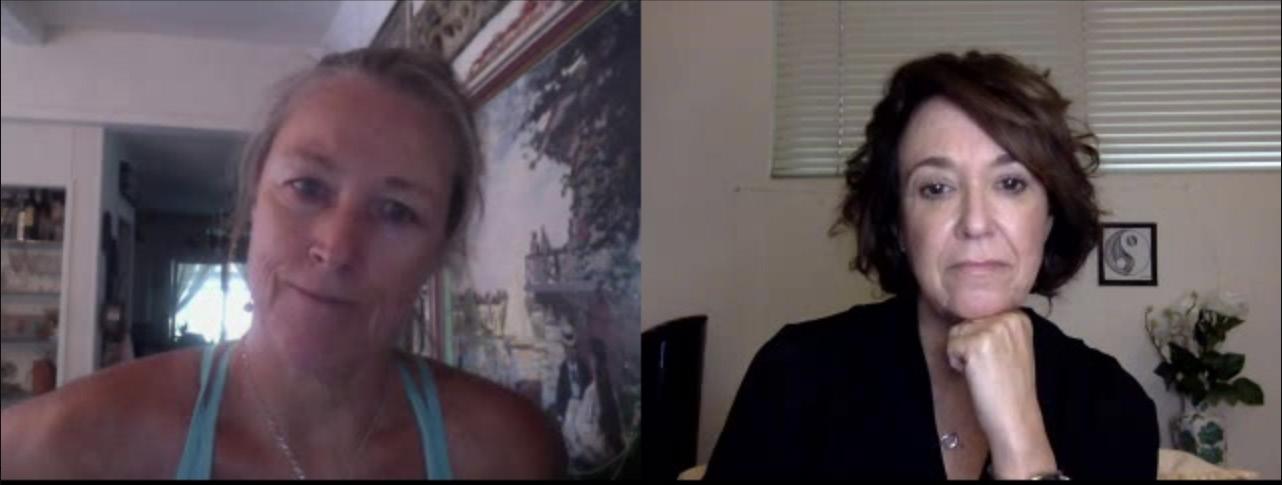
BREAKING THE CYCLE OF SILENCE
Cheryle Gail is interviewed by Beth Marer- Garcia, (my “sidekick/cheerleader/co-collaborator/inspiration) for Brave Voices. Cheryle shares her experience of childhood sexual abuse in order to break the cycle of silence that perpetuates children from continuing to be harmed.
Interview by Beth Marer-Garcia
Recorded August 3, 2020 • 43:39 minutes

CHERYLE GAIL SPEAKS OUT
Through Brave Voices, Cheryle creates space for survivors to share their lived experiences—unfiltered, unvarnished, and deeply necessary.
Cheryle Gail, speaks out about her own experience of child sexual abuse and creating Brave Voices.
Interview by Babs Walters
Recorded December 11, 2024 • 50:16 minutes
FEATHER BERKOWER
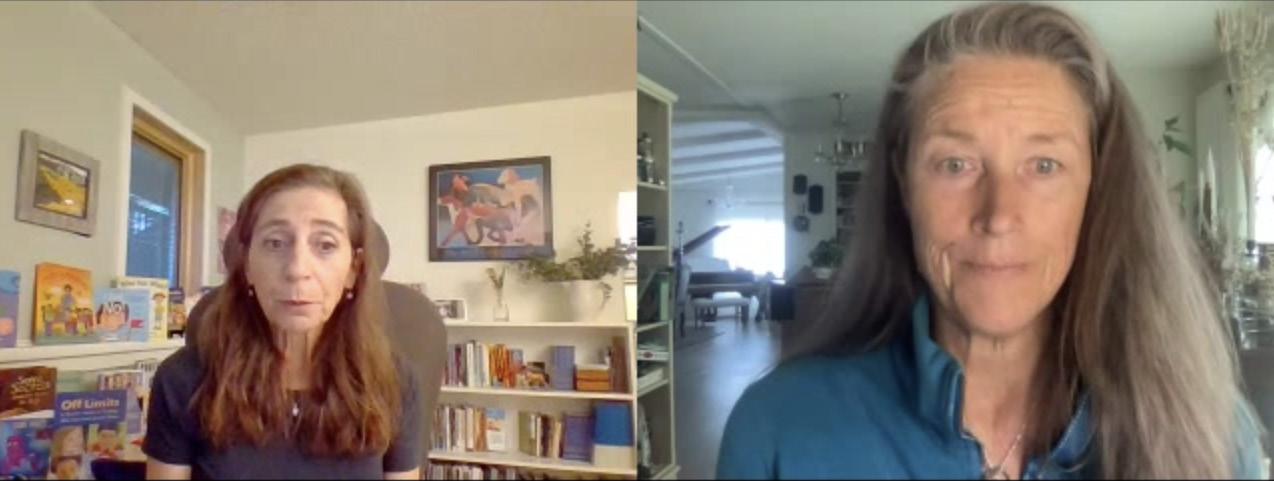
TEACHING PARENTS HOW TO PREVENT THEIR CHILD FROM BEING HARMED SEXUALLY. Feather Berkower, author, advocate and member of Incest Aware, provides prevention education for parents, caregivers and youth organization administration and staff. Feather discuses prevention and body safety rules.
Recorded June 8, 2021 • 50:16 minutes
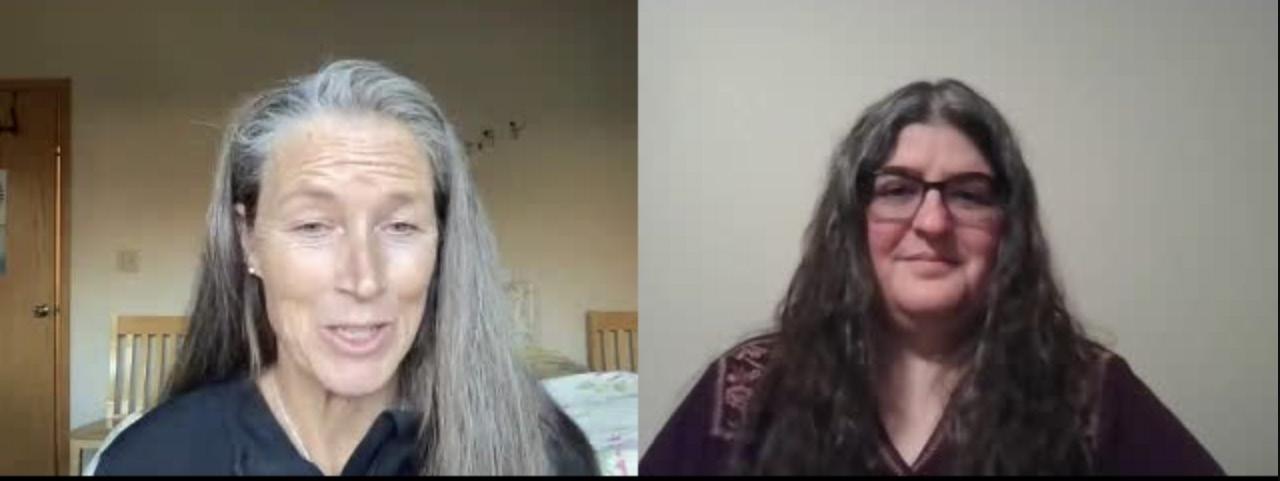
TRUST IN ONE’S SELF- EVEN WHEN YOUR VOICE SHAKES! Dr. Donna Bulatowicz lives in the beautiful state of Montana. She studies and advocates for inclusive children’s literature as well as sexual abuse education and prevention. Donna shares about being groomed then harmed by her female school teacher.
Recorded December 5, 2023 • 39:34 minutes
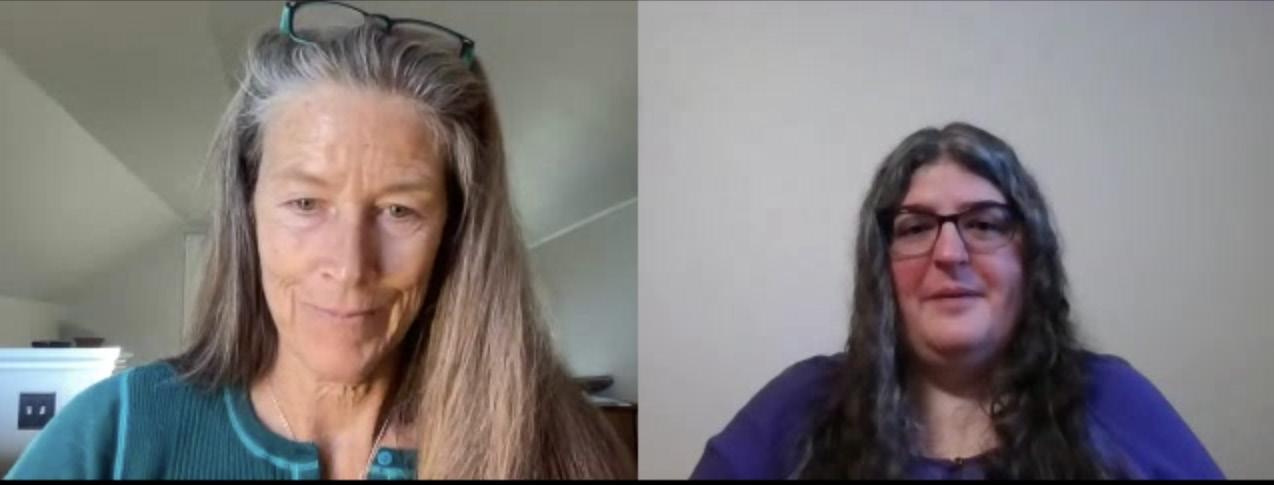
SPEAKING UP TAKES COURAGE
Dr. Donna Bulatowicz lives in the beautiful state of Montana. She studies and advocates for inclusive children’s literature as well as sexual abuse education and prevention. Donna discusses educating teachers about prevention, having an open door policy, volunteers in the class room, and how to ask kids,”tell me more.”
Recorded December 11, 2023 • 36:12 minutes
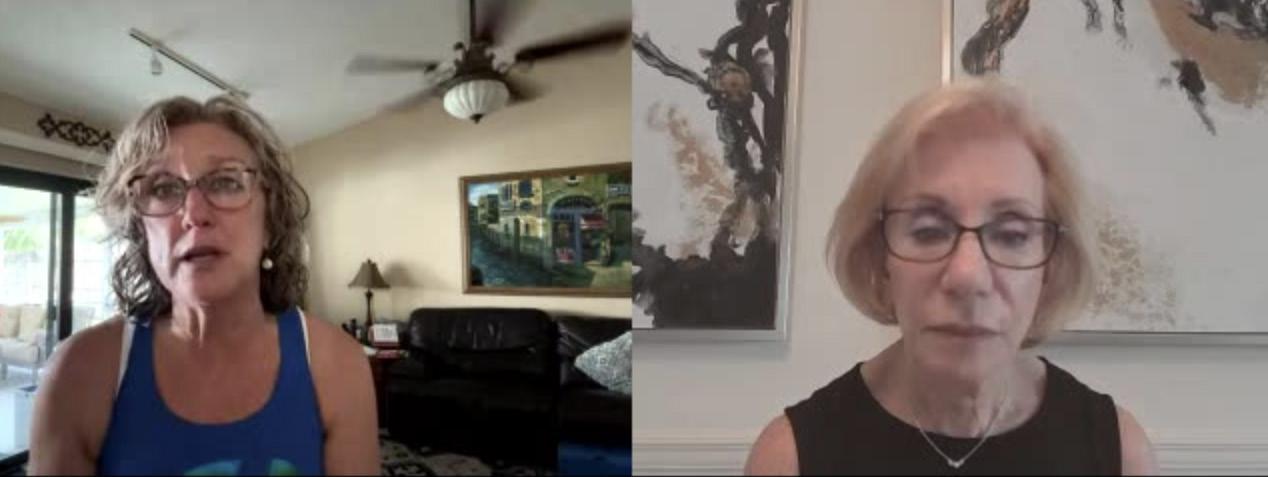
MY FIRST HERO IS MY SISTER MARCIA CROW.
A younger sister honors her older sister’s memory of abuse at Christmas time. Brave Voices gives survivors the opportunity to speak out.
Interview by Babs Walters
Recorded December 19, 2024 • 33:49 minutes
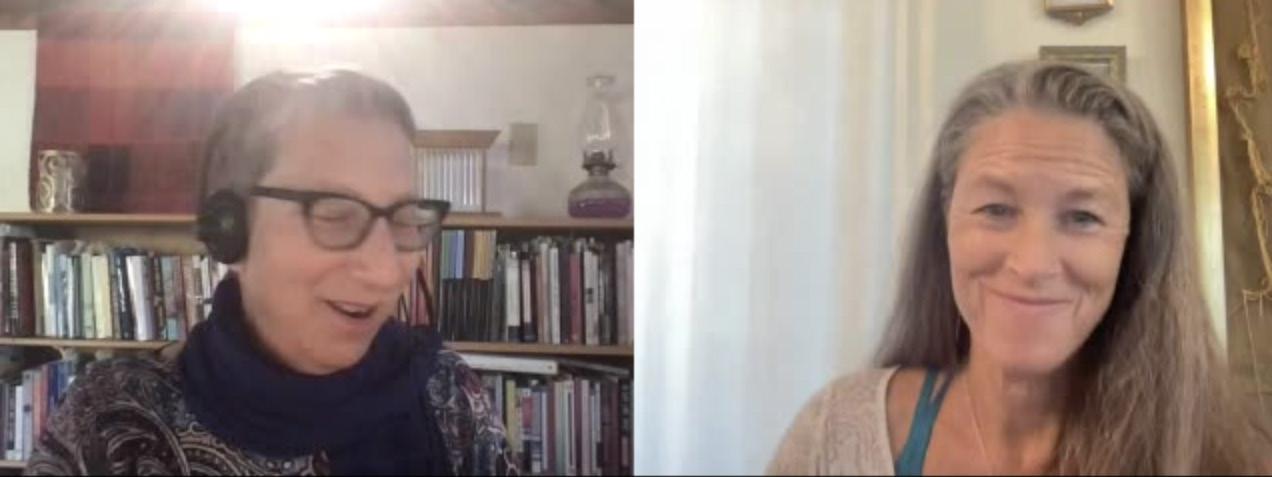
THE COURAGE TO HEAL
Laura Davis is a lifelong learner. She looks back on a life of writing through the process of CSA and connection—the challenges, healing with her mother, and emotional growth. She speaks on being a mother, as well as breaking the cycle of abuse by allowing children to have emotions and articulate them, respecting boundaries, and not being emotionally invasive.
Recorded May 18, 20211 • 49:29 minutes
GRANT
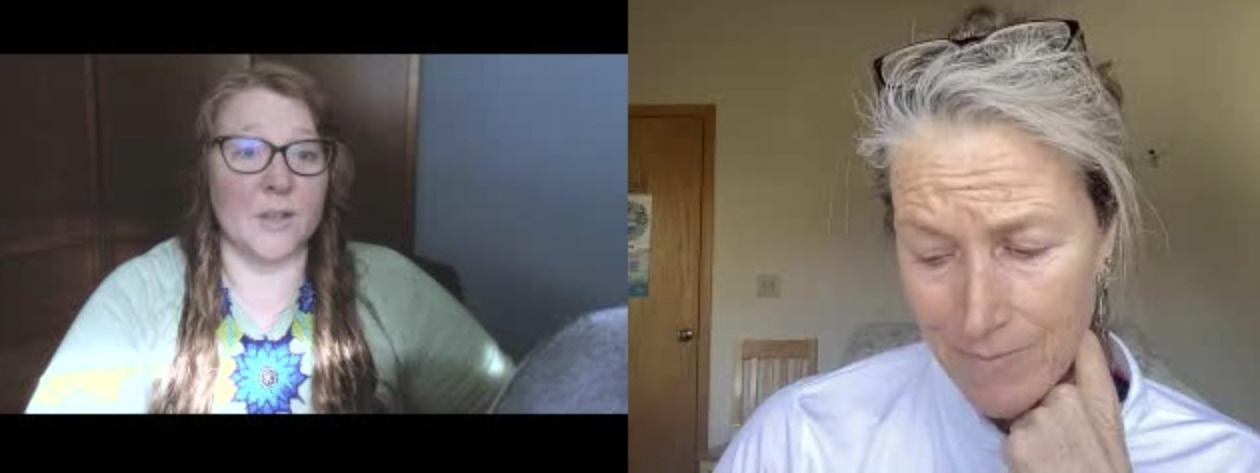
TRAUMA IS NOT A LIFE SENTENCE!
Rachel Grant, founder of Rachel Grant Coaching and member of Incest Aware works with survivors of childhood sexual abuse to help them let go of the pain of abuse and finally feel normal. Rachel explains how hope inspires action.
January 8, 2024 • 38:17 minutes
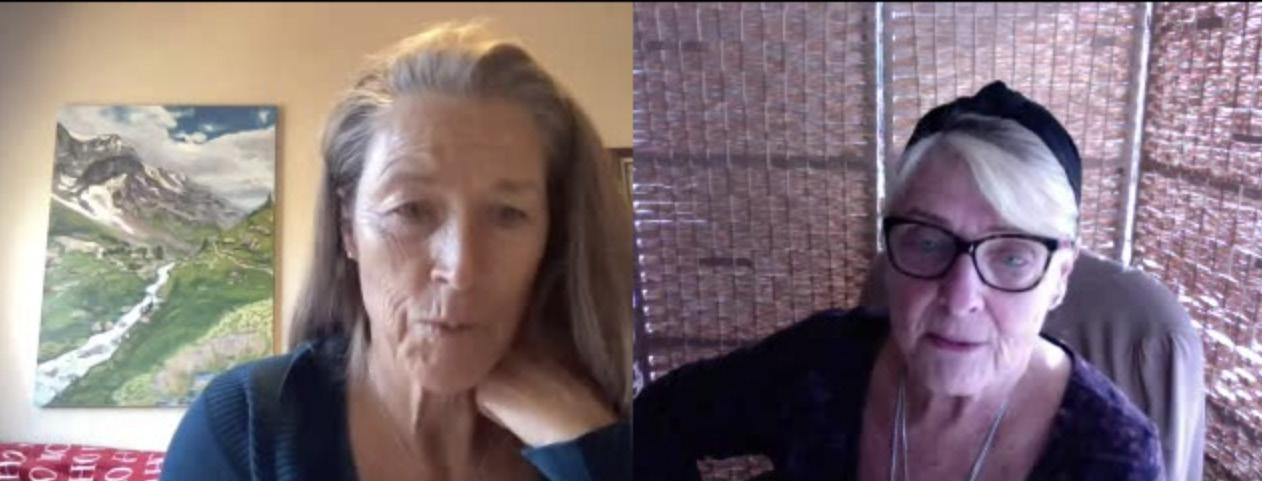
Donna Jenson, author of Healing My Life; From Incest to Joy and founder of TimeToTell.org, and Cheryle Gail share the journey of moving through being harmed to being an adult who ‘Breaks The Silence’ that has perpetuated childhood sexual abuse for generations.
Recorded November 27, 2023 • 39:39 minutes
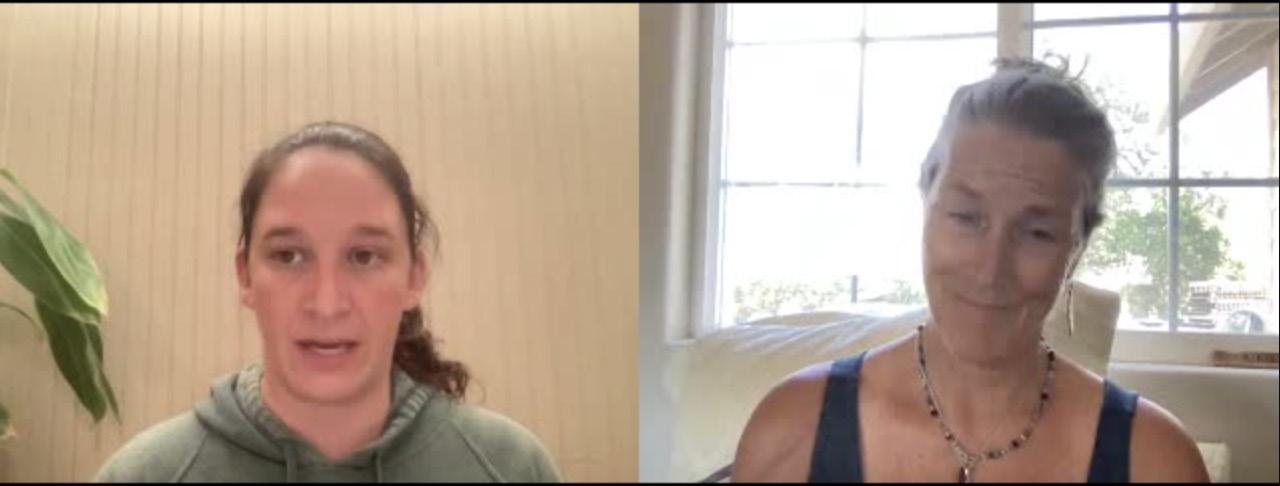
Join Brinn Langdale, a trauma survivor turned licensed therapist, wholistic coach, speaker and writer, as she explains why everything you do makes absolute perfect sense. With a wide background in mental health, physical well-being, and holistic wisdom, Brinn takes a whole-you approach to healing, starting with the different parts of yourself like your Inner Critic, Inner Child and Adult-self. Contact Brinn
Recorded July 10, 2024 • 33:38 minutes
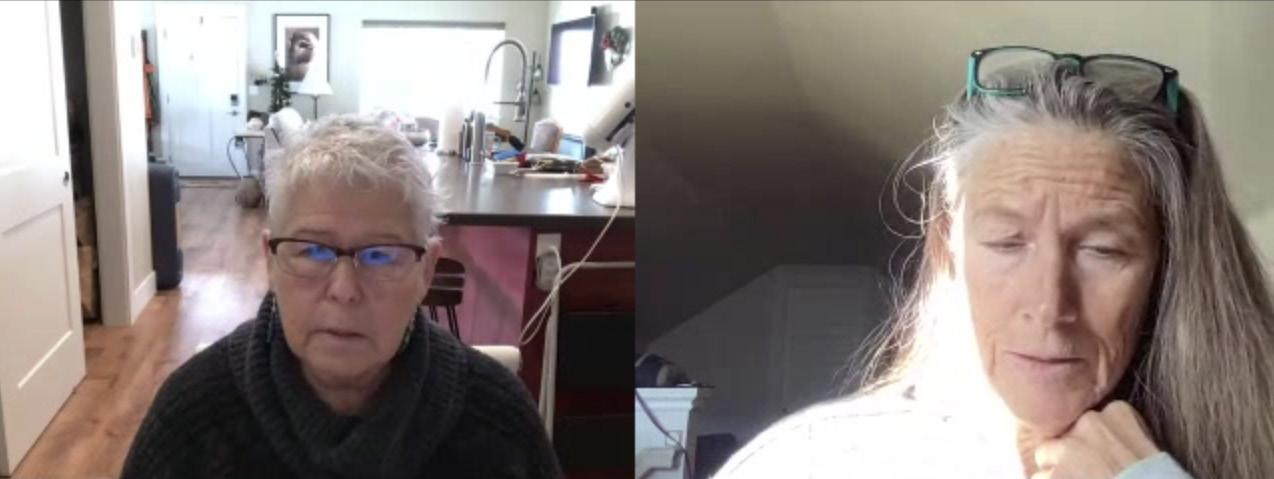
Claire O’Leary is founder of The Empowered Voice (Traveling Art Exhibit & Symposium) and Voices Heard, the interactive e-Zine that empowers survivors to shatter the silence of their sexual abuse which helps them heal and help others heal through sharing their stories. Claire shares about being an incest survivor at age 5 by her uncle and again at age 16 by her father. Listen as Claire tells how she changed from being a survivor to a thriving activist, advocate and founder of Voices Heard eZine.
Recorded December 11, 2023 • 40:04 minutes
ROBERTS, PART ONE
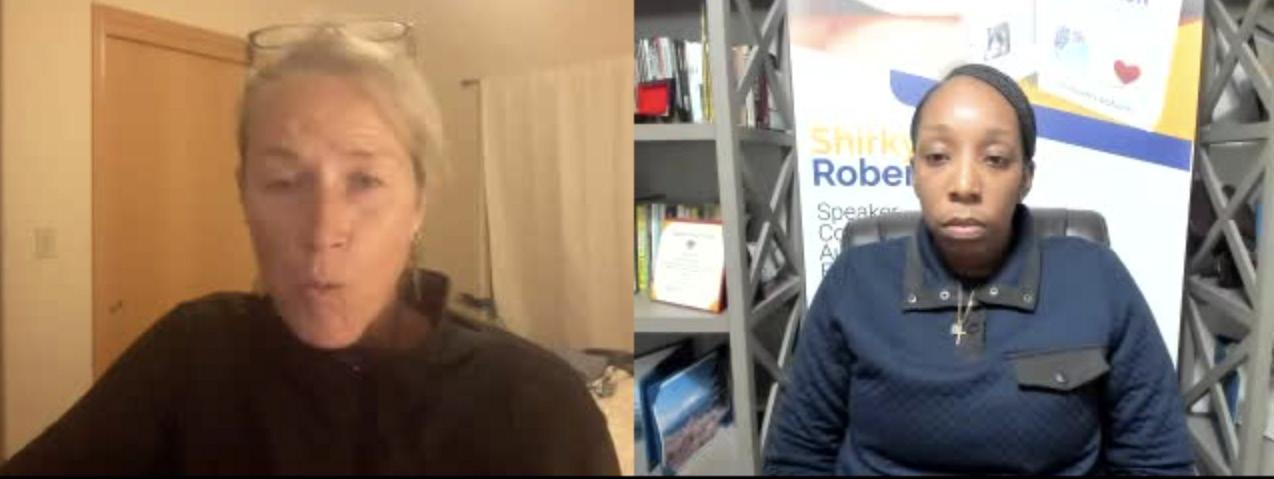
STAND UP ALONG SIDE US
Shirkydra Roberts is the founder and CEO of Impact, Aspire, Motivate Enterprises (I.A.M.E.). She was raised in a single-family home with her mother and two siblings;. She is a Motivational Speaker, Life Transformation Coach, #METOO Advocate, and Published Author. She is also serving as an Engineering Officer in the United States Navy. Shirkydra shares her experience of childhood sexual trauma, the aftermath, and recovery with the help of her Lord & Savior.
Recorded December 5, 2023 • 39:34 minutes
SHIRKYDRA ROBERTS, PART TWO
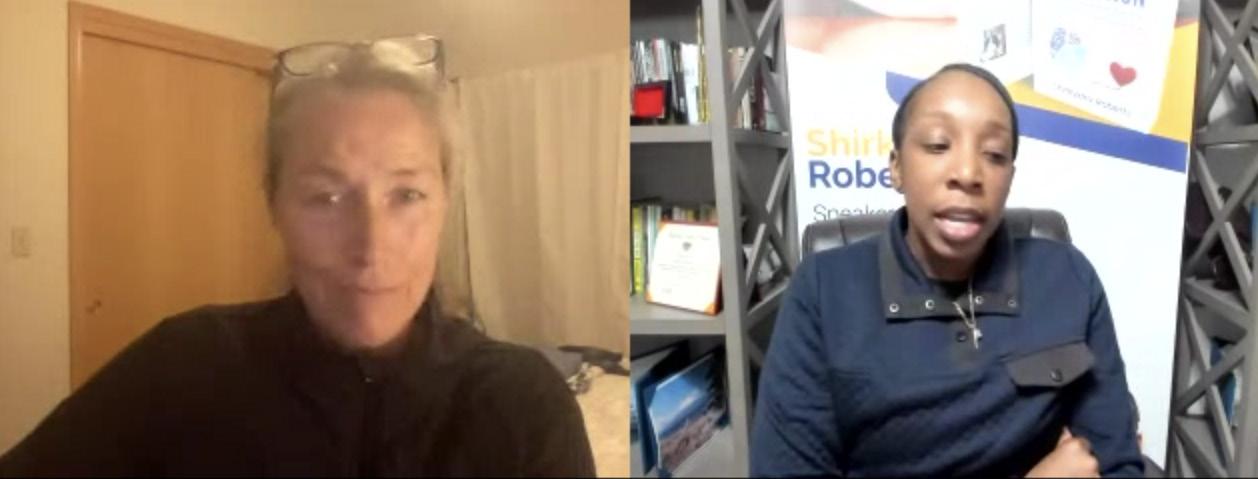
TALKING WITH THOSE WHO HARMED HER
Shirkydra Roberts is the founder and CEO of Impact, Aspire, Motivate Enterprises (I.A.M.E.). She was raised in a single-family home with her mother and two siblings;. She is a Motivational Speaker, Life Transformation Coach, #METOO Advocate, and Published Author. She is also serving as an Engineering Officer in the United States Navy. Shirkydra shares the process of talking with those who harmed her, as well as her spiritual and cognitive therapy.
Recorded December 3, 2023 • 35:09 minutes

NORMALIZING THE CONVERSATION
Kelly Wallace is the host of the Recognize Our Power podcast, where she interviews survivors of sexual trauma about their stories and healing journeys. She’s also at work on a memoir, about her own experience as an adult survivor of childhood sexual abuse. Kelly talks about generational childhood sexual abuse, alcoholism, recognizing our power and court proceedings.
Recorded December 18, 2023 • 39:59 minutes
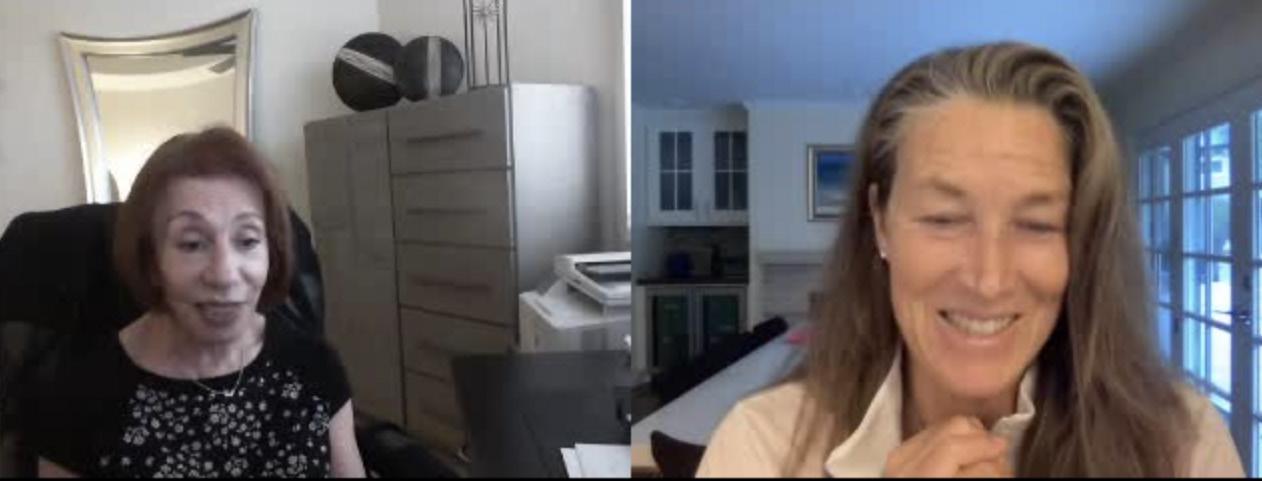
LISTEN, BELIEVE AND ENCOURAGE THEM TO STAY STRONG.
Babs’ Walters speaks on surviving a childhood of physical, emotional and sexual violence by her Jewish Father.
Recorded January 11, 2024 • 40:05 minutes
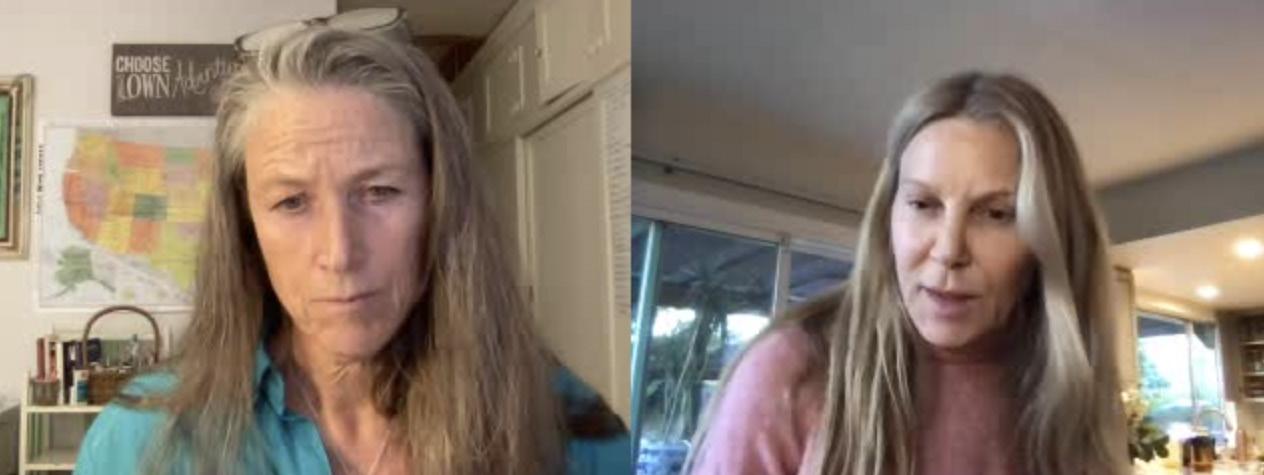
Hollis Wilder shares her journey of uncovering and discovering herself through the gift of forgiveness and setting herself and her mother free.
Recorded December 5, 2023 • 39:34 minutes
“
Donna Bulatowicz
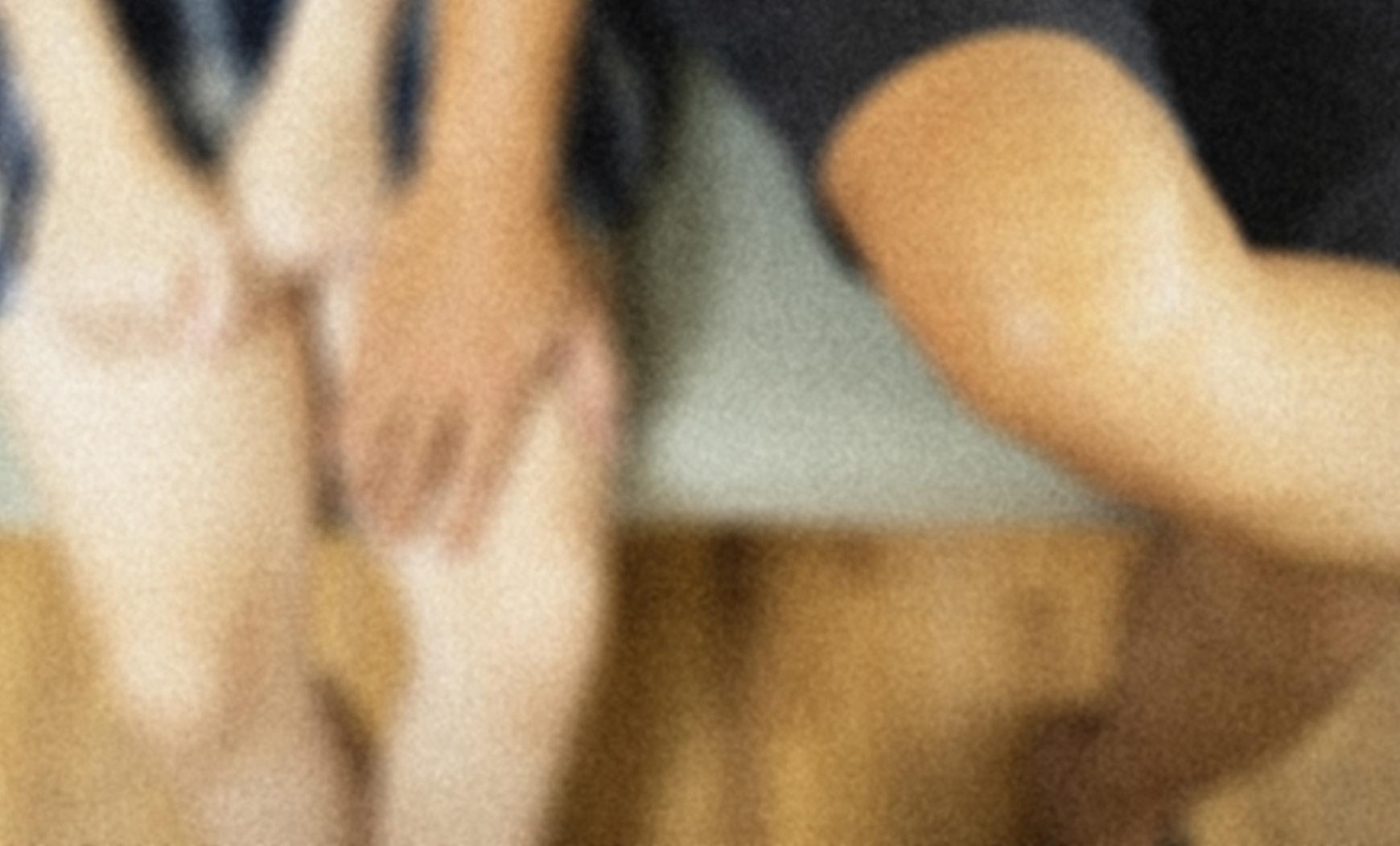
The lack of compassion towards survivors of female pedophiles and the diminishment of the damage done adds another layer of harm and silences victims.
I spent years trying to become a ghost. I thought if I couldn’t be seen, no one would hurt me again. I didn’t want anyone to know about the sexual abuse. People often made fun of me or claimed that I wasn’t actually abused because a woman raped me.
Society seems to struggle to understand that women can abuse children and that it’s harmful. If one looks at the comment sections in articles about women teachers abusing boys, one will usually see twisted comments about the abuse. There tend to be many responses that act as though the abuse is non-traumatizing, when the opposite is true. Comments on articles about women teachers who abuse girls are similarly harmful and gross. Of course, not every comment is disgustingly supportive of sexual abuse. But there are a higher percentage of those types of comments than in articles about men who abuse children.
The lack of compassion towards survivors of female pedophiles and the diminishment of the damage done adds another layer of harm and silences victims. Unconscious
biases about women not being capable of sexual offenses or that abuse done by women doesn’t “count” can lead to shoddy investigations, reluctance to bring charges, and more. Thus, few female pedophiles are charged, let alone convicted.
Statistics about the prevalence of this type of abuser are difficult to pin down. Surveys of victims show there are far more women who sexually abuse children than most people realize, but those surveys don’t usually factor into official estimates. Official estimates vary. Some claim that 2% of child molesters are women, while other estimates are 20% or more. Most estimates acknowledge that the actual percentage is likely higher than reported. Studies note that survivors of female predators tend to report at a lower rate than survivors of male predators
Additionally, there is a lack of representation in the literature about female survivors of female perpetrators. I searched—often in vain—for others. As a teen, I spent a lot of time in the library getting frustrated that I couldn’t find a single book about sexual abuse that even mentioned victims like me—a girl who was molested by a woman.
For most of my life, I’ve felt alone.
The few stories I could find with women predators were about boy victims. After a few decades, I gave up. I figured mine was an isolated case, and no one would ever understand what I went through or think it mattered. Thus, I did my best to pretend what she did to me wasn’t bad, harmful, etc. The pain of no representation anywhere haunted and hurt me. It silenced me almost as much as the abuser and her minions did
When I started my healing journey in August 2022, I desperately needed to know I wasn’t alone. I started searching again through books, studies, etc. I quickly became discouraged, as the books I had access to and the initial studies I located mentioned male victims only. Even resources curated by other survivors excluded female survivors of female sex offenders.
A few months into my healing work, I read about another woman who’d been sexually abused by a woman when she was a little girl. Then I saw another story. And another. I wasn’t alone!
The sadness that others suffered like I had warred with the inexpressible relief at seeing that I wasn’t the only one. I wasn’t invisible.
Others would understand. I felt as though I had emerged from a dim cave and people were truly seeing me and confirming that I existed, that I mattered, and that they believed me. It was life-alerting.
Unfortunately, we are often still erased. Even people who are part of the sexual abuse survivor community unintentionally exclude us. For instance, a survivor shared their podcast episode about a male survivor of a male abuser and stated how they have episodes about every type of sexual abuse. I eagerly asked for a link to one about a female survivor of a female abuser. I thought I would finally hear another podcast by someone
like me, and I couldn’t wait. Instead, that person gave me a handful of links that I had submitted to them when I noticed their extensive resource list excluded us. That stung and frustrated me. It was another way we were being erased, albeit unintentionally. Impact matters more than intention, though.
It’s painful to not have representation until I find or create resources. It’s harmful to exclude any survivors, no matter one’s intention.
I’ve found that those to whom I provide resources tend to not look for additional resources of their own or even post about this type of abuse. Thus, the resources just stay there, unpromoted and unaugmented. That adds an additional layer of hurt, as it sends a message that despite what they may say, they don’t care much about inclusion of all survivors. Actions speak louder than words.
In books about healing from childhood sexual abuse, we survivors of female-tofemale abuse are often barely mentioned or entirely excluded. For example, I read a book for survivors that talks about males abusing females, males abusing males, and females abusing males. Females abusing females are never mentioned, as though we don’t exist. That’s rather common. When Dr. Zetta Elliott talked about representation in children’s literature, she mentioned that she “had to dream myself into existence ” in the books she read as a child. I must do the same in most resources for sexual abuse survivors.
This is true for peer-reviewed research as well. Most studies focus on male pedophiles. Numerous studies center female and male victims of male pedophiles or male victims of female pedophiles. Many neglect to mention that females can victimize females also. This pattern repeats and sends a message that female survivors only matter when a male abused them.
“ Instead, that person gave me a handful of links that I had submitted to them when I noticed their extensive resource list excluded us.
“ Due to the dismissive and invalidating attitudes of many regarding these types of abuse, I didn’t even realize that something that I experienced as a child was sexual abuse until about two years ago
In addition to outright erasure, people tend to diminish the impact of being sexually abused by a female. I’ve been told that I’m “lucky” to be abused by a female. The person usually explains how it “doesn’t really count,” “isn’t real abuse,” etc. Males abused by females typically hear similar things.
Why does our society act as though the impact of sexual abuse is less when a female abuses a child? None of us are lucky to be victims. All sexual abuse counts, and all of it is damaging and horrifying.
These messages create a space that makes it even more challenging for survivors of women abusers to speak about their abuse. Memories of past attempts that were met with ridicule, indifference, or even “you’re lucky,” silence us. Lack of resources add another layer of hurt. Survivors often doubt themselves and/or unconsciously deny the harm caused as is. When society reinforces that message and adds that the abuse “didn’t count” or “wasn’t abuse” it causes additional damage. All survivors should all be included in resources.
Due to the dismissive and invalidating attitudes of many regarding these types of abuse, I didn’t even realize that something that I experienced as a child was sexual abuse until about two years ago. One of my female childhood friends threatened me into letting her touch me. This continued off and on for most of our elementary years. She had more power than I, but she was a bit younger. I learned that it counts, and I finally read a story from another survivor of something similar. I wasn’t as isolated as I felt.
The relief about not being alone is huge. It’s validation that one exists, that one is seen and heard. It facilitates healing, eases
burdens, helps erase denial, builds selfesteem, and assists with self-compassion.
When the predominant story of abuse focuses on men or boy perpetrators, that allows women or girls to get away with it. It allows them to do things in full view of other adults that no one blinks at.
My upper elementary teacher adjusted my clothes a lot. Her hands were on me basically anytime she ventured near. She kissed me several times a day. She cuddled me on her lap, held me in her arms, and more. All of these are inappropriate for a teacher to do with a student.
Yet other teachers saw her as motherly toward me. However, I’m sure they would have intervened if they saw a male teacher kiss me, pick me up, follow me into the same bathroom stall, or put their hands in my skirt to fix my tights. She played up the image of being “motherly,” telling me in front of other adults that I was her little girl, that she wished she was my mom, and more. On a few field trips, she pretended that I was her daughter.
She also got away with the sexual abuse because of her gender. The police told me a woman wouldn’t molest a girl. The child psychologist had never had a patient who was molested by a woman. My abuser had numerous enablers who didn’t believe she would sexually abuse a girl because she had a husband, was a pillar of the community, had sons, etc. They helped her retaliate against me, and she wielded the “poor, fragile, prudish woman ” stereotype to her advantage.
The halo effect helped her get away with her crimes as well.
People at the time tended to believe teachers were more upstanding and moral than others. They believed women wouldn’t abuse children. So many projected their biases onto her, and she manipulated that by creating sociopathic facades that allowed her to molest not only me and get away with it, but little girls after me. She always got away with her felonies because she preyed on people’s stereotypes, relied on the halo effect, and was extremely calculating and manipulative; she was a socially skilled pedophile.
I’d like to think that things have changed. But I’m still often a lone voice asking for someone to include those of us abused by girls and women. Other survivors and survivor groups unintentionally exclude us. And children are too frequently disbelieved, especially when it’s a female who abused them.
Elevating the voices of those of us who are usually excluded would make a difference. Auditing one’s resource lists and checking for inclusion of not just all genders abused by all genders, but also for representations of BIPOC, LGBTQ+ people, religious and nonreligious people, disabled people, and more .
Purposeful inclusion makes a powerful impact.
Additionally, advocacy centers, researchers, trainers, and more can examine the representation of people in trainings, brochures, research, books, etc., and make specific changes to be more inclusive.
All survivors deserve to see people like themselves included. It takes purposeful effort and time to ensure authentic, robust inclusion, and it’s worth it.
As we change the views of what survivors and perpetrators look like, we make it more likely that victims will come forward, that police and others won’t dismiss cases based on gender, and that survivors will feel seen and supported. Most importantly, we create a safer world for children.
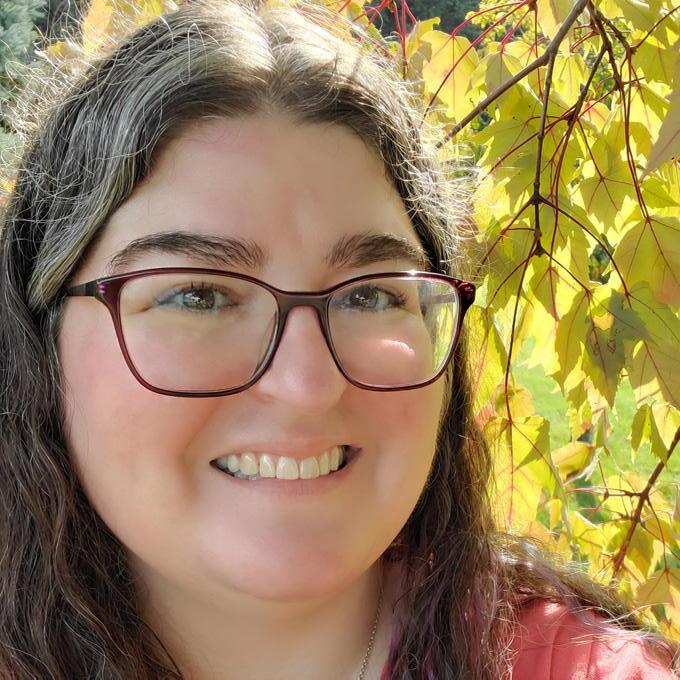
Dr. Donna Bulatowicz has recently moved to the beautiful state of Maryland to be closer to family. She studies and advocates for inclusive children’s literature as well as sexual abuse prevention. She is a former chair of the Charlotte Huck Award for Outstanding Fiction for Children and a former president of the Montana Association of Teachers of English Language Arts (MATELA). Dr. Bulatowicz has created and given sexual abuse prevention trainings for teachers and other school officials.
You can reach Donna on her Facebook page, or email Donna.
“ Additionally, advocacy centers, researchers, trainers, and more can examine the representation of people in trainings, brochures, research, books, etc., and make specific changes to be more inclusive.
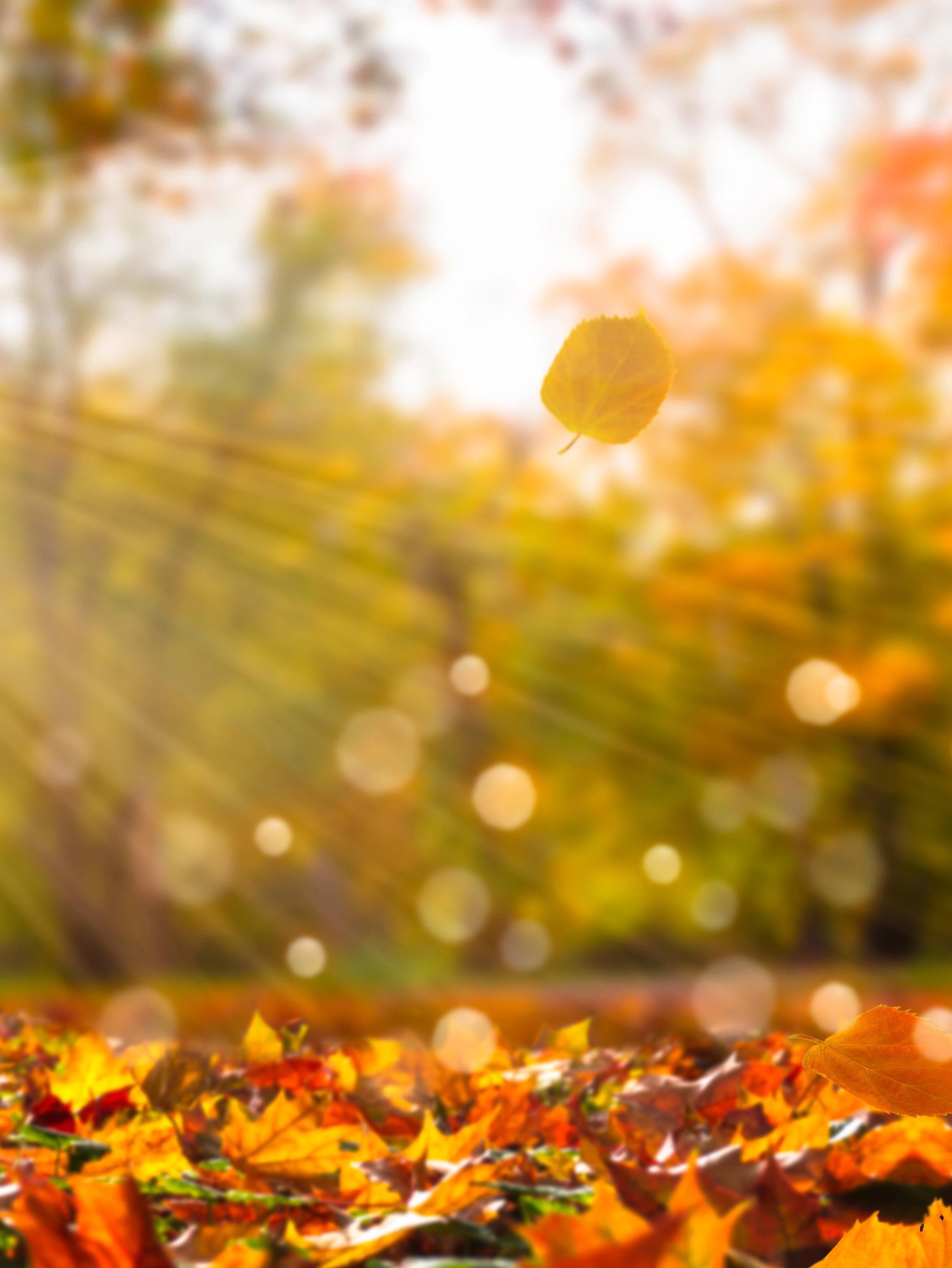
By Claire O’Leary
It’s a lifelong thing you know, healing.
Like layers of an onion, I’m fond of saying
Not that I invented that phrase I adopted it after years of hearing it from friends, my therapist, everywhere it seemed.
First there was anger
A deep seething, burning feeling that would rise
I’d push it down
Anger wasn’t pretty
It wasn’t fit for a pretty little girl to show that emotion
But it was there nevertheless
Like a bottomless pit
No, a volcano
It bubbled, gurgled, boiled until… It exploded.
It was little stuff really
That shouldn’t have set me off
The toilet paper roll was on backwards
The butter was hard…
It wouldn’t spread easily on my toast
And…it made my toast cold
Who wanted to eat cold toast.
I’D BLOW
Like a volcano, I felt it in my stomach
Still do as I write.
A hard ball of …
What?
Tar
Yes, tar
Black coal
Wet, yet hard
Hot, yet cold
In the pit of my stomach
It stays there hot, burning, seething
Waiting for its’ moment.
I couldn’t say that!
Couldn’t contradict
Couldn’t share my opinion
Couldn’t disagree
That wasn’t proper for a pretty little girl
Like me
I should sit
Legs crossed
Tidy
Holding it in
Like holding in your pee or more
(No wonder I was constipated)
It was unnatural
I was a little girl
Meant to run, play, ride bikes
Throw snowballs
Eat mud cakes
Not just sit on the couch
Looking pretty
Hold it. Hold it. Hold it.
BLOW!
Don’t tell your mother
She’ll be …
Sad?
Mad?
Disappointed?
Heartbroken?
Who was I to break my mother’s heart.
Besides, what would she do?
Leave?
She had 6 kids
No job
Didn’t speak English well
She couldn’t take care of herself
Let alone 6 kids
Well 5 really the eldest was married now.
Still what would she do?
What could she do?
Besides, I still loved him right? Right?
Did I?
Sometimes yes.
Other times, there was hate.
Anger, No,
RAGE!
That seething, roiling pit of tar in my stomach.
I should be happy right?
I had a husband who loved me. Did he?
A beautiful little girl.
Who was sweet and lovely. Oooh when she hugged me it was the best feeling in the world.
But when she clung to my leg while I was fixing dinner
When she needed me most
A SWAT!
It was just a little tap right?
It was over her diaper so it didn’t hurt right?
Right!
But looking back…
Did I hurt her?
She was crying.
She needed me.
Needed my love
My attention
And I was too busy…
Doing what I was taught
Taking care of my family
My husband.
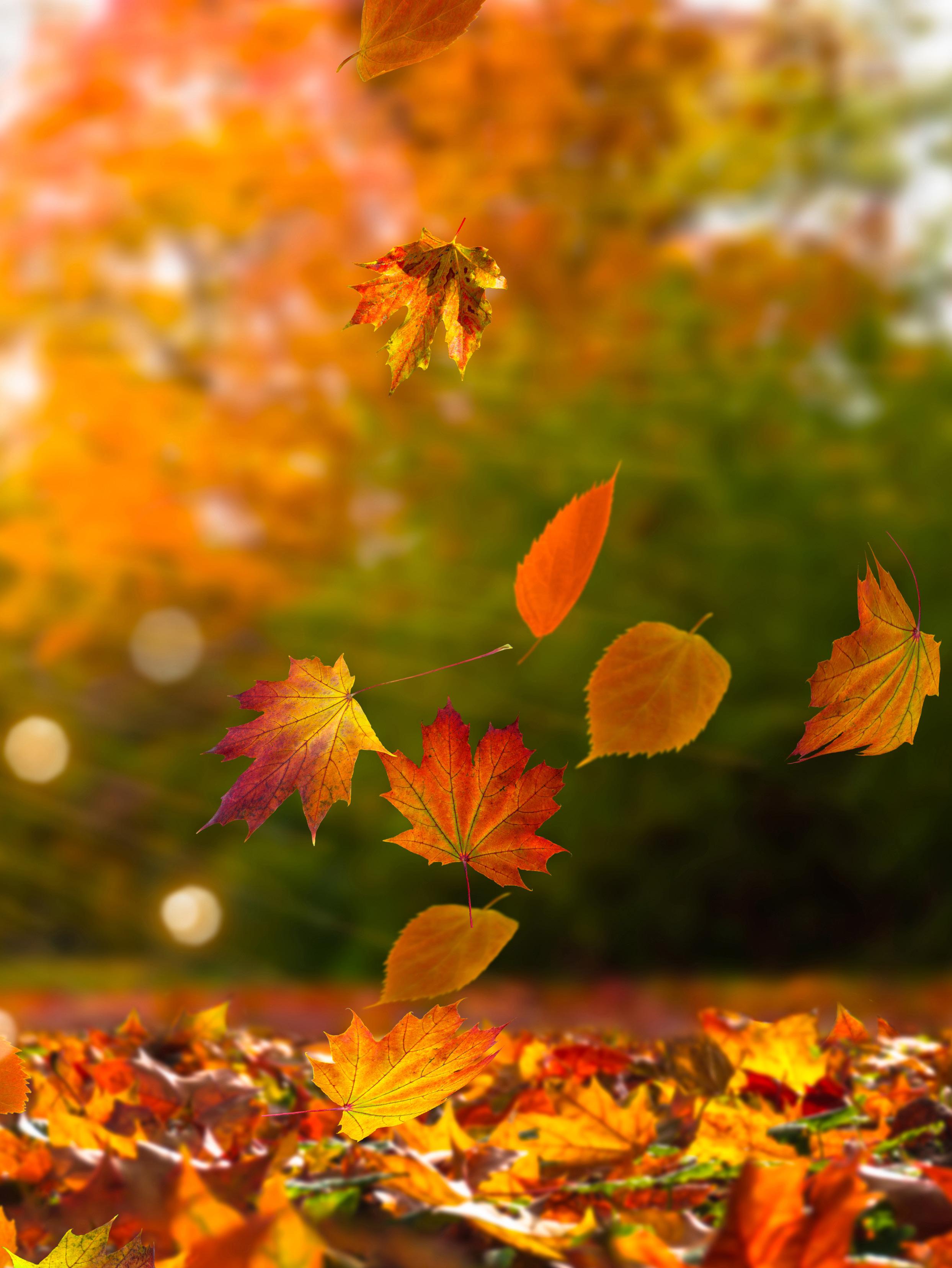
That was my job right?
Get dinner on the table, Take care of everyone?
What about first hugging my child? What about me?
That came later.
After the divorce. After the seething. After the cheating. Not his. Mine. After the explosion. After knowing.
This wasn’t love…
Oh, how long I’d been thinking about that. How long I’d been holding it in. Seething.
Roiling.
Waiting…
TO BLOW!
To realize that wasn’t love.
Love doesn’t include Wanting to share your wife with others Wanting to watch.
How many times had I said no! How many years?
Until I said yes. And it was over. Done.
Or was it?
Another year
More silence. More seething. More cheating…
And then… the separation.
The fire. The devastation.
The loss.
The knowing.
The moment when he said he’d keep her, my daughter. She was only two.
I may have lost my temper I may have been ready for a break When I said…
Yes, take her with you while I think While I play.
While I breathe. While I be…
Be what?
Be who?
I didn’t know.
I wouldn’t know for years to come.
But when he said he’d take her from me. I knew.
That would never happen.
That I loved her more than life itself.
That what he said was love,
Was NOT!
Someone who loves you doesn’t say that to you
After you’ve stood outside your home
Standing for hours watching the flames
Engulf your home
Your clothes
Your memories
Everything you thought you loved.
You can’t take my daughter too!
The anger, the rage roiled within.
I said nothing..
But I was strengthened by that rage Plotting Planning
And very shortly after.
I never looked back
Never regretted my decision.
Sure, I missed my things I still now, over 50 years later think about the losses at times
But with the strain, the stress, the pressure of not being me gone I became kinder
Mostly I became happier
More loving
Never another swat.
I learned how to love my child
How to express it.
And in time I learned to love myself.
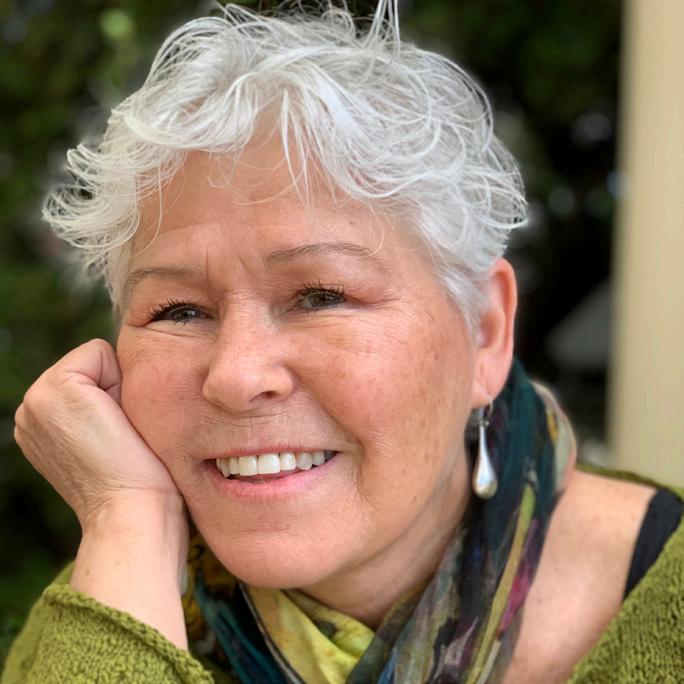
Claire O’Leary is founder of The Empowered Voice (Traveling Art Exhibit & Symposium) and Voices Heard, the interactive e-Zine that empowers survivors to shatter the silence of their sexual abuse which helps them heal and help others heal through sharing their stories.
She lives in Donnelly, Idaho with her husband, and enjoys being a mother and grandmother. Claire’s a CSA (incest) survivor, an avid reader, meditates and dances her heart out any time she can.
She’s an advocate, speaker, and mentor.
By Karo Ska

i don’t want sexual abuse to define me, so i am not a survivor. but i can’t deny who i am and what is a survivor, if not someone who dares to heal, who dares to do the painful work of stitching themselves whole to survive, threading the needle’s eye through a tiny opening, needing patience and steady hands. yes, i am a survivor of what tore me apart, of what tried to unspool me, of what didn’t succeed. no, i am not a survivor because i am more than my hemmed holes, i am more than what my step-father did. other survivors, they get me, like they know the pain of my body not being my body. i claim survivor
to not feel alone, to know where i belong. maybe the search for i am ends at we are survivors meaning we are ready to kick down the door and smash the windows of silence that keep survivors trapped — thinking it’s our fault, if only we hadn’t done x or wore y or said z, when really we need a culture of consent where intimacy is not performed with the lights off, but under the full moon of our yes’s — orgasms howling with our consent, where our sexuality is fluid like a river, whether it’s flooding or trickling … we honor it all with our names — survivors or not.

By Rachel Grant
“ But the bottom line is to reclaim or claim first our bodies. We have to actually be in these bodies in order to have healthy, wonderful, fulfilling, live sex.

Getty
As we begin to explore this topic, I want to acknowledge first that sex is multifaceted and layered.
It has everything to do with the actual mechanics of sex, like how your vagina, penis, clit works, what feels good, what turns you on; fantasies, kinks, the emotional connection, navigating things like dissociation and triggering during sex, all of the layers of feelings—so uh, there’s no way we can cover it all in one article.
Therefore, what we are going to do today is focus on one major theme.
And for some of you it might actually feel better to think of it as Claiming – depending on how you land on certain things.
But the bottom line is to reclaim or claim first our bodies. We have to actually be in these bodies in order to have healthy, wonderful, fulfilling, live sex.
And there is reclaiming your actual sexuality. Like I own that, and what I desire
and what I want are in the realm of mine. It’s not as constructed by society or media or religion or your parents or the abuse. But it is constructed through choice and ownership.
The first place we always start is messaging —belief systems.
What does it mean for our introduction to our sexual self to be a violation? What message does that send to our body, our spirit, our core sense of who we are? How can we feel good or safe in a body that we may associate with shame, pain, objectification, violence?
So through the various experiences you’ve had, what has developed is a blueprint for your sexuality and your relationship to your body. We are going to work with this by thinking about the messages you received or experiences you had that then translate to lessons learned (your current sexual blueprint).
Identify One Message/False/Limiting Belief: (e.g. my partner’s pleasure comes before mine)
“ The first step to take toward reclaiming our sex life is to distinguish or separate the sex that occurred during the abuse from the sex of our adult life.
Where did I learn that? (e.g. abuse, movies, being taught to put others first)
Therefore I…(e.g. would always focus on my partner’s pleasure and back-burner my own).
New blueprint to challenge the old message: (e.g. I deserve to experience and prioritize my own pleasure).
Even if we were never physically touched, our understanding of and relationship to sex (our blueprint) was changed as a result of the abuse.
Below is a list of common responses to sex or sexual behaviors (adapted from Shelter from the Storm) that show up for people who have been abused.
• Unable to enjoy kissing
• Guilty or dirty feelings after sex or about sex
• Difficulty setting boundaries in sex
• Feeling guilty about the things you find pleasurable
• Inability to tolerate own body
• Dissociation from own body during sex
• Feeling of worthlessness if unable to provide sex
• Inability to look at a naked man or woman
• Phobic avoidance of genitals
• Effort to make life better with sex
• Avoidance of sexual activity
• Compulsive sexual behavior
• Sexual acting out
• Lack of sexual desire
• Feeling of being caught during sex
• Fear of letting go during sex or stopping yourself from feeling pleasure
• Crying during or after sex
• Feeling of being good only for sex
• Lack of sensitivity in a part of your body
• Difficulty with or inability to achieve orgasm
• Inability to have drug- or alcohol-free sex
• Desire to make partner responsible for sex
• Preoccupation with other concerns during sex
• Eagerness for sex to be over
• Feeling of having to perform during sex
• Inability to ask for sexual needs to be met
• Anger during or after sex
• Aversion to touching oneself
• Inability to be playful during sex
• Very strict rules for how sex should be
Some of these responses and behaviors may require the help of a trained professional to overcome (e.g., dissociation). Yet the majority are the outcome of one very powerful false belief, “If sex did not exist, I wouldn’t be in this mess in the first place !” In short, sex is bad. The critical error here is that we are blaming sex instead of the abuser for what happened.
As a result, we continue to connect what we experienced at the hands of our abuser with the experiences we are now having as adults. The touch of a lover is experienced as if it is the touch of the abuser. Words of seduction seem to be spoken in the same voice as the abuser.
However, there is a huge difference between our abuser and our lover, and a huge difference between the sex that occurred with the abuser and the sex that is occurring with our lover. The first step to take toward reclaiming our sex life is to distinguish or separate the sex that occurred during the abuse from the sex of our adult life. Let’s explore this a bit more:
When you were abused, you were experiencing sex out of____________________.
Example: Fear, obligation, forced submission
One very major thing was missing: consent.
Our abuser never gave us a choice; sex occurred out of obligation and service to the abuser’s desires. However, it is an error to continue thinking of sex as something we have to do or should do, that it is all about
33
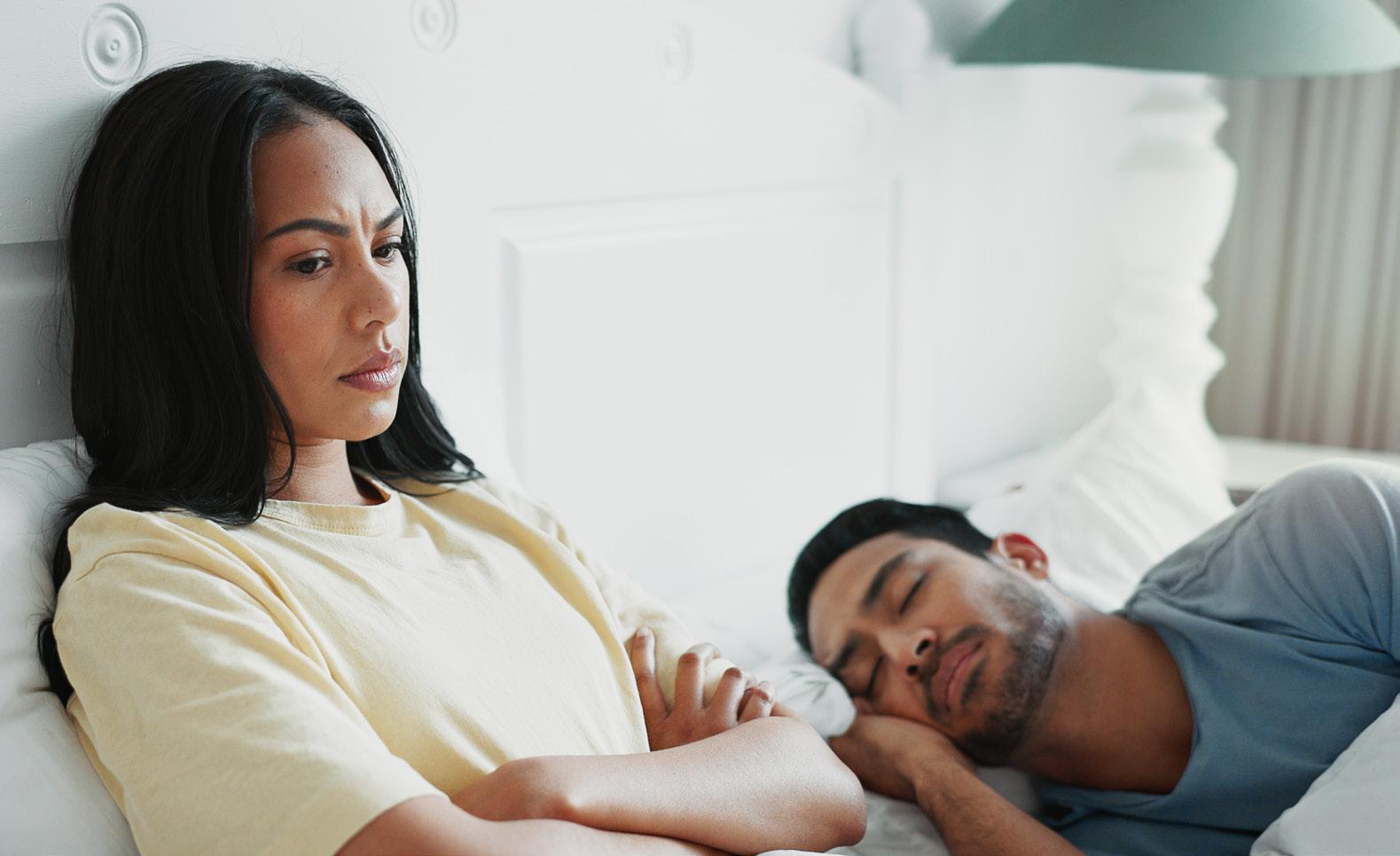
the other person, that we have no choice about it. We are adults now and we have the right to choose!
Right now, we might be choosing to avoid sex, hate sex, or fake enjoyment of sex. Yet we have the opportunity and the right to make different choices. Our lovers are not our abuser(s). We do not have to have sex with them out of obligation or for the sole purpose of meeting their needs.
If there is a part of our body that we do not like to have touched, we can ask our lover not to touch us there. Or we can choose to separate the touch that is occurring now from the touch that occurred then and give up the error of thinking that it is all the same!
Furthermore, we need to give up the lie that our sexual preferences are a result of abuse and therefore dysfunctional. If you like kinky sex, then this is what you prefer. If you like quiet, slow sex, then this is what you prefer. If you are a straight man who enjoys fantasizing about men, then this is what you prefer.
It is your choice. Period.
A client whose abuser had performed oral sex on her was struggling to engage in
this act with her boyfriend. We spent quite some time doing the work to separate the experience she had with the abuser from her current, present-day relationship. When she was ready, she agreed to spend as much time as she needed looking at her boyfriend to ground herself in the present and saying her declaration—“It is my choice ”—before asking him to go down on her. She decided to make a clear request as to which areas were “off limits” and that she only wanted it to last five minutes. A few months later, she happily reported, “I can’t believe it! I chose to ask him go down on me for a half hour, and I felt so present and relaxed.”
If you don’t receive anything else offered here today – please be sure to hear this, because if we continue to have sex out of obligation – we are re-traumatizing ourselves. And if we are going into a place of trauma, then we have to disconnect from our body because the only way to show up for something that feels traumatizing is to not be fully in the body. And so we get more and more separated from our self, our pleasure (which is what we like), our desire (which is what we want).
“ If you don’t receive anything else offered here today – please be sure to hear this, because if we continue to have sex out of obligation – we are re-traumatizing ourselves.
So a critical first step in reclaiming our body and sexuality is to make a strong commitment to not having sex out of obligation.
Now, how about reclaiming our sexuality —what do we want to do with these fabulous bodies?! And what do we want to experience? And to get to that, we first need to update our definitions, beliefs, our rules of engagement about sex and to start choosing what we want…building a new sexual blueprint.
I want ...
• Relationships to be…
• Intimacy to be…
• Desire (what I want) to be…
• Pleasure (what I like) to be…
• Sex to be…
What you’ve just done is begin to name what it is you really want this area of your life to look like and feel like. And so, when you’re thinking about the choices you’re making—are they aligning with this? Are they generating this? Are you creating space for this? Are you getting that?
It’s also important to know that studies have shown that neglect, trauma, and abuse impacts two hormones in the brain that relate to sexuality: vasopressin and oxytocin.
Trauma causes an enhanced production of the stress hormone vasopressin, which leads to a decrease in feelings of safety and an increase in anxiety, defensiveness and fear—major buzz kills when it comes to sex.
To reduce vasopressin, we must reduce stress and activation.
Oxytocin plays a critical role in affiliative love and maintaining monogamous relationships. It is also triggers climax and release.
If we have a decrease in the production of oxytocin, then we will have a diminished capacity for sexual fulfillment.
To increase oxytocin, you can do things such as:
1. Laughter
2. Hugging
3. Pet an animal
4. Say the word “love”
5. Do something exhilarating (roller coaster)
6. Take a hot bath
7. Share a meal
8. Give a gift
9. Make eye contact
What’s one way you’ll give yourself some oxytocin boost today?
Your sex life will not change overnight. I get that these are tough issues after all, being naked and engaged with another person is just about as vulnerable and intimate as it gets. You can, though, begin reclaiming sex as fun, exciting, satisfying, ridiculous, breathtaking, playful, erotic, kinky, fulfilling (add your own adjectives) by owning the fact that you get to choose when, with whom, and how.
By the way, if you are single, you actually get to choose the type of sex you have with yourself as well!
It is about choice not obligation!
Even if you aren’t single!
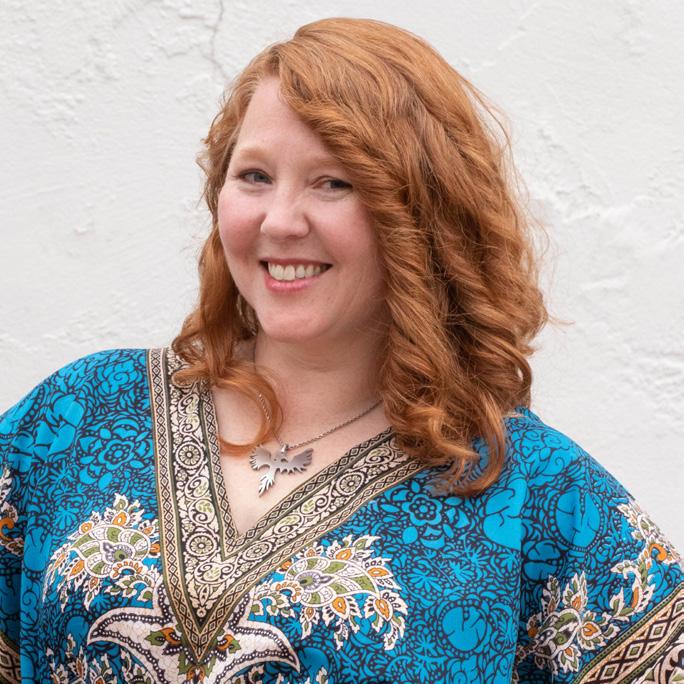
Rachel is the owner and founder of Rachel Grant Coaching and is a Sexual Abuse Recovery Coach. Rachel holds a Master of Arts in Counseling Psychology and is the author of Beyond Surviving: The Final Stage in Recovery from Sexual Abuse and Overcome the Fear of Abandonment. You can download both free on her website
She works with survivors of childhood sexual abuse to help them let go of the pain of abuse and finally feel normal.
Her program, Beyond Surviving , is specifically designed to change the way we think about and heal from abuse. She has successfully used this program to help her clients break free from the past and move on with their lives.
Reach Rachel here or on Facebook .
By Donna Bulatowicz
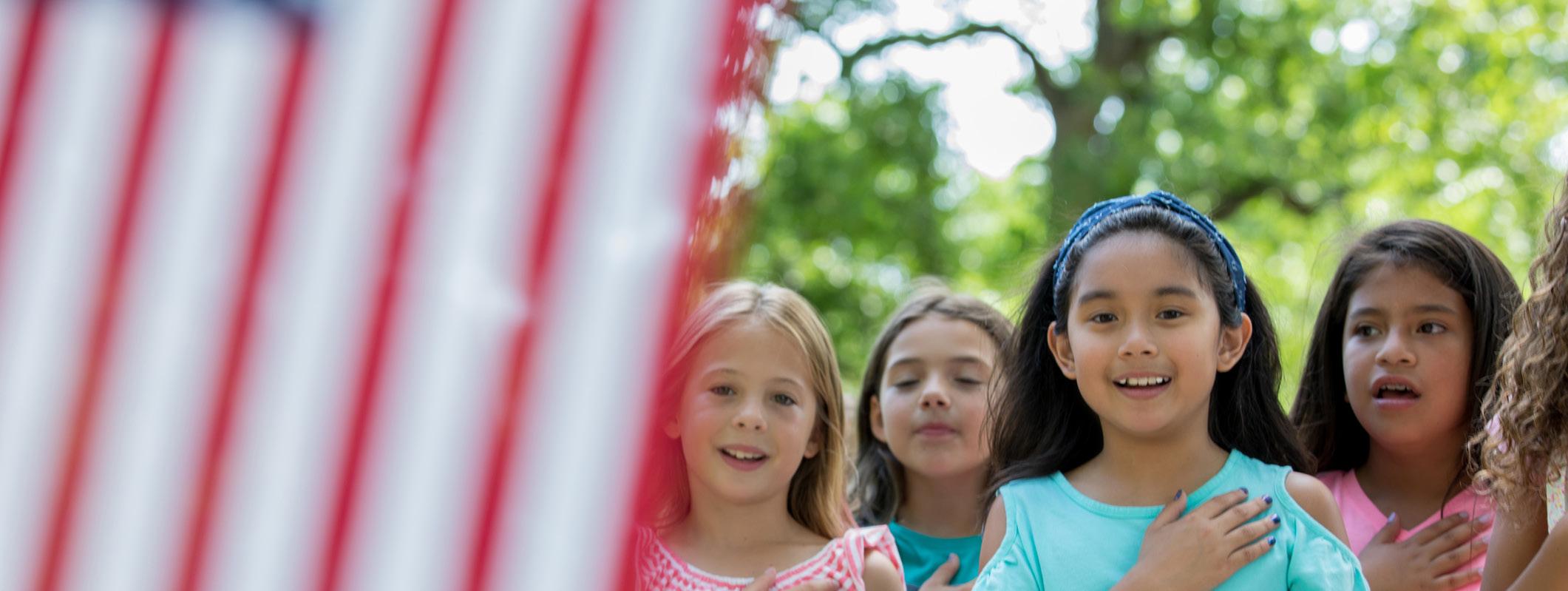
The Pledge of Allegiance claims our country has “liberty and justice for all,” yet that persists as an unrealized ideal. Justice remains elusive for many.
There is rarely justice for those who have been victimized, especially when perpetrators have more social power than their victims. Various tiers of “justice” support those who have majoritized identities and wealth while causing additional harm to those who have less power.
I learned to call it the injustice system as a child. After I told on my abuser, the police chose to support her and further traumatize me. They claimed that a woman wouldn’t molest a girl. The abuser had insinuated herself into many parts of the community, wrapping herself in a facade of dedicated volunteer, tireless advocate, devoted mom, loving spouse, and caring teacher. Thus, the police refused to believe someone they admired and liked could do so much evil, which is likely what she counted on when she carefully cultivated specific relationships and manipulated those in power.
She played on stereotypes, casting herself as an upstanding “traditional” heterosexual wife and mother. She
calculated which friendships would protect her and surrounded herself with enablers. She manipulated sympathies, the halo effect, and more, using her small stature and womanhood as insulation.
When she learned I told on her, she became enraged and sought revenge. She had a sadistic, vindictive streak and would stop at nothing to get back at someone she thought wronged her. She knew how to deny, attack, and reverse victim and offender (DARVO).
She painted a picture of me as a villain and herself as a poor, innocent victim. All the while, she fed off those enablers who rushed to her defense and refused to see the child in front of them. They chose to view me as a cruel, crazy criminal who lied about their beloved friend and family member and needed to pay. I lost out on honors and awards I’d earned, was emotionally and psychologically abused by adults, and had more trauma heaped on top of trauma until I prayed each night to never wake up.
She weaponized the injustice system against me as well. She knew how to play with power, social capital, and more. Teen girls, as a group, have numerous negative stereotypes, little power, and face numerous areas of oppression, especially when they belong to additional minoritized groups.
“ I learned to call it the injustice system as a child. After I told on my abuser, the police chose to support her and further traumatize me. They claimed that a woman wouldn’t molest a girl.
“
My deposition was an all-day, grueling, cruel affair. Her lawyers one of whom physically resembled her were just as vicious as she and refused me the comfort of having a parent present, even though I was underage.
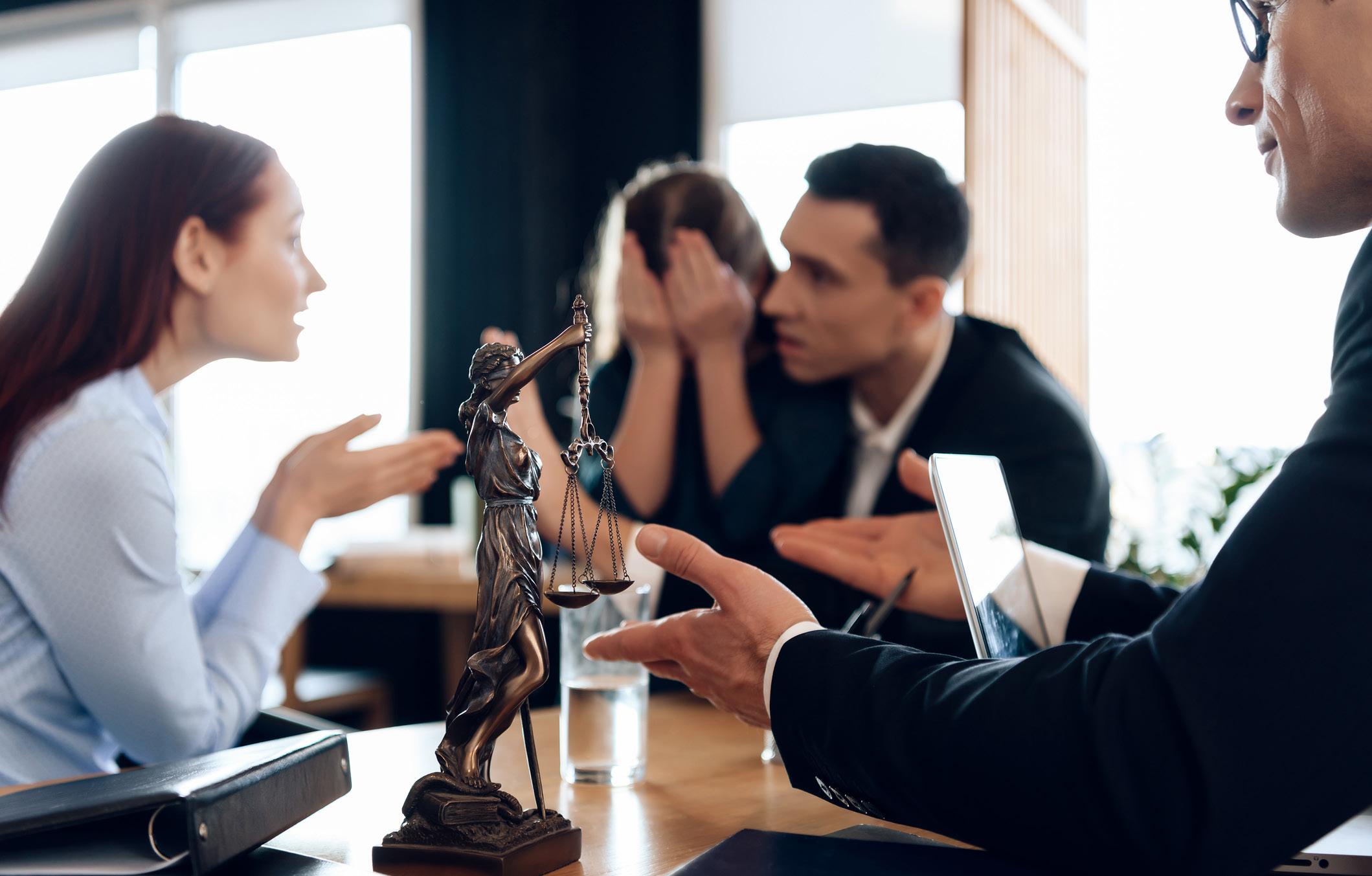
My abuser decimated my name and reputation.
She started with her class. When she returned from paid leave during the sham of an investigation, one of her students told me that she’d said that she had been gone because I’d lied about her, and they should let me know what they thought of me. Some of them took it as a mandate to bully me, though others felt sorry for me and believed me.
Next, she started passing around a paper about me to my teachers. I only read one during my senior year in high school, so I don’t know if all versions were the same, but it was vicious, defamatory, and full of false accusations. Again, she encouraged people to let me know how they felt about me.
A few years after I told on her, she sued my parents and me. She claimed I destroyed her reputation and told everyone she abused me. I’d told some people outside of the school counselor and police, like some friends and family members. The students who had been in class with me knew what they’d observed, and many of them realized later what had happened.
However, she told all her students I’d lied, which made word go around school among the students. The paper she passed out trashed me to teachers and staff. She also told various people she knew in the community that I’d lied, etc. The reason so many people knew is because she spread it around. Yet she sued me for the results of what she did, using the injustice system to drain finances, cause stress, and fake outraged innocence.
Yet her actions showed she was likely guilty. She did what many abusers do, down to threatening self-harm after I told. She would never have done what she pretended, but she got immense sympathy and compassion from her act, and she turned more people against a child.
My deposition was an all-day, grueling, cruel affair. Her lawyers—one of whom physically resembled her—were just as vicious as she and refused me the comfort of having a parent present, even though I was underage. They treated me like a criminal until I became fed up and decided to describe her identifying marks, which one of her lawyers stopped immediately and ordered stricken from the record. They took a break and quickly wrapped up questioning after that instead of making me come back another day.
She ended up dropping the lawsuit but would only do so if my parents paid their own legal fees. Not wanting to subject me to additional harm, they agreed.
I lost out on all chances for justice. She continued teaching elementary school until “enough” or “too many” little girls made the same complaints about “inappropriate behavior” as I, or that’s what I was told. She moved to teaching college, and she died without ever being honest or facing any accountability for her felonious actions.
My definition of justice has changed over the years. My distrust in the current system has grown as I’ve done research and learned more about it. Since the abuser is dead, she will never be found guilty or even face charges. Her victims have paid, and are paying the only prices for her criminal actions.
I only told on her to protect other little girls. For decades I felt like I failed, especially when people told me that they’d heard she victimized “several little girls.” These were people who didn’t know she’d abused me.
I have come to recognize that I didn’t fail. Adults failed me and the other little girls. They didn’t protect me from her, and even after I told, they didn’t protect others.
The school district never spoke to me or my classmates during their “investigation.” They
moved her to a school with more hiding places and to a younger grade level.
I had to reconsider justice in a way that didn’t blame me or rely on a problematic system.
I decided that my healing journey is a form of justice. Reclaiming my voice is justice. Helping adults better protect children from sexual abuse is justice. Speaking up is justice. Punishment isn’t required for me to receive justice.
I would like people to see her as she was, an unrepentant child molester who caused immense harm to the little girls she victimized. However, her family bears no responsibility for what she did, and they would be the ones paying a price if her true nature was revealed now. It won’t affect the dead pedophile at all, but it would impact younger members of her family who did not enable her or otherwise harm any of her victims.
Restorative justice typically brings together the person or people who have been harmed and the one(s) who caused the harm. All who participate should understand the process, and the harm doer(s) need to have genuine remorse and a desire to make amends in whatever way(s) work best for those they damaged.
I first read about restorative justice in educational spaces and children’s books. I
“ I know that I will be heard, and I can choose to pass if I’m not ready to share. I don’t have to struggle with sorting through competing, interrupting voices or the silencing of my voice.
“ Thanks to the Hidden Water circles, I’ve been able to learn about and practice self-advocacy as an autistic person.
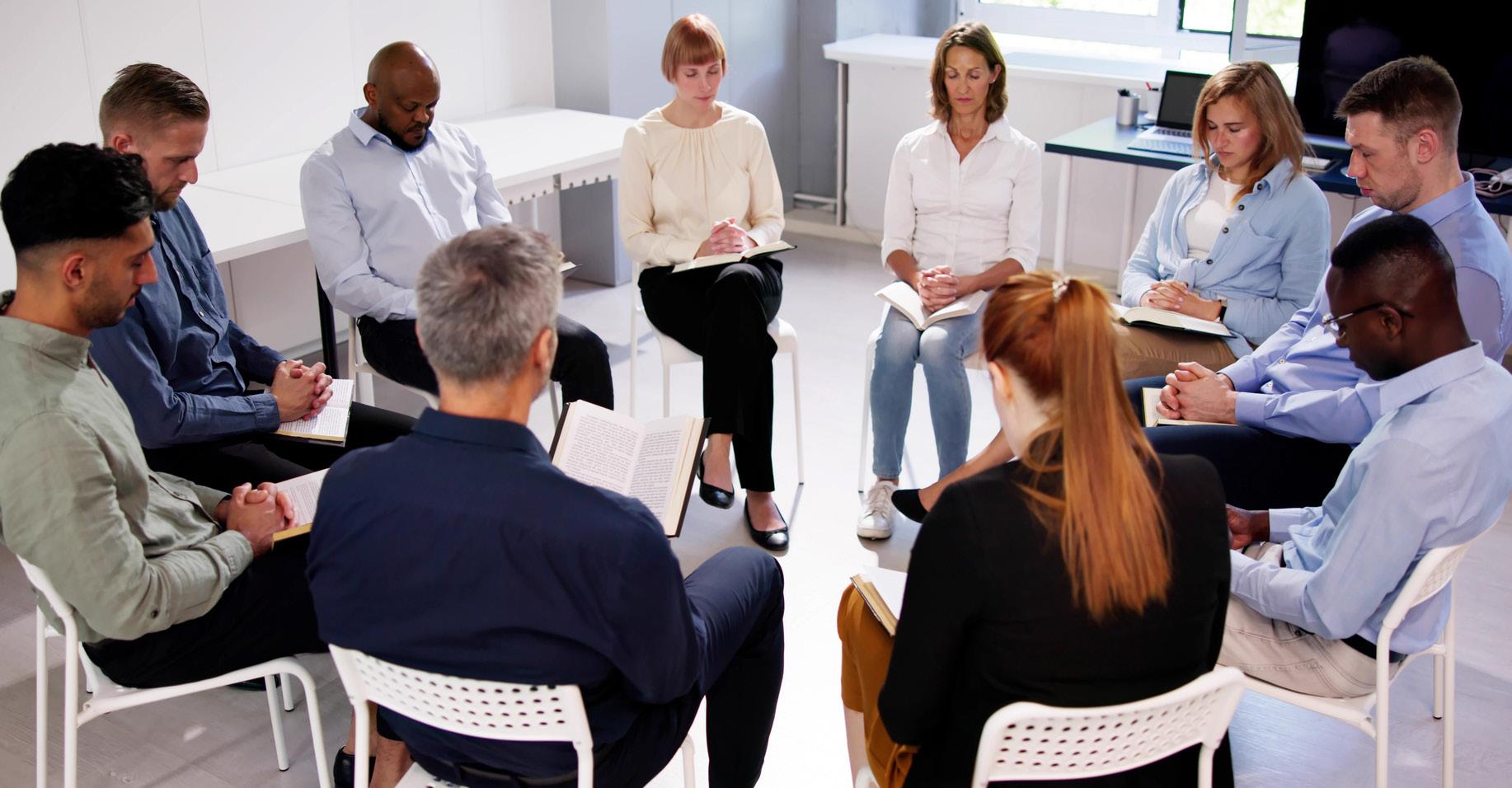
hadn’t practiced it, but the more I thought about it, the more I wished something had been available to me when I was going through all the trauma.
I decided to search for restorative justice and sexual abuse and came across Hidden Water. Hidden Water is an organization that leads four different colors of restorative justice circles twice a year. One circle is for survivors of childhood sexual abuse, one for loved ones, one for caregivers, and another for those who sexually abused children or teens. There are also circles for people who identify with more than one color.
Each circle has a small number of participants, including two circle keepers. They last for twelve weeks and are based on an Ojibwe community’s practices of restorative justice.
I first joined an affinity circle for LGBTQ2S+ survivors. I had no idea what to expect, but I immediately felt welcome. The circle keepers, other participants, and I co-created a space where all of us could speak about our experiences, healing journeys, and more. Knowing that I didn’t have to hide my lesbian identity helped me feel safer. The predictable format of circle helped also, especially with the speaking order.
In many meetings, I struggle with knowing
when and how to speak up. I’ve found allistic (individuals who do not identify as autistic) people in meetings tend to jump in, talk over each other, and more. I’m autistic and can’t always figure out how to do that. It feels disrespectful and disregulating to interrupt someone. Thus, my voice often goes unheard, and I typically feel drained, sad, and frustrated after meetings.
However, in the survivor circle, we have a speaking order. I know that I will be heard, and I can choose to pass if I’m not ready to share. I don’t have to struggle with sorting through competing, interrupting voices or the silencing of my voice. I t’s predictable, safe, and my nervous system can relax. It’s neurodiversity-affirming and honors all participants’ perspectives.
These circles are one of the few spaces where I’ve been included, welcomed, affirmed, and safe. The topics are emotional and challenging, yet I feel much less drained than in competitive spaces. I can be present with my whole self, and I don’t need to mask. I look forward to circle meetings.
In addition to acceptance and inclusion, the circles honor each person’s dignity and humanity. We all have experiences where we have caused harm, deliberately or inadvertently. People tend to want to be viewed as full humans, rather than as the worst or most harmful thing they’ve done. This includes abusers, and it can be a challenge to see beyond the evils of abuse.
I’ve made more progress in my healing journey since participating in circles. I have learned coping strategies from others. I’m not alone with some experiences and/or feelings that felt isolating previously. The other circle participants see and hear me, and I do the same with them.
Self-advocacy is an area in which I struggle. Not only is this common for abuse survivors, but I also didn’t know until several years ago that I’m autistic. I simply believed I was broken. Now I know my brain isn’t wired like an allistic brain. It’s different, not less than. My communication styles are valid also, as are my needs. I don’t have to harm or diminish myself to please others.
Thanks to the Hidden Water circles, I’ve been able to learn about and practice selfadvocacy as an autistic person. I know for the first time what it’s like to participate in a neurodiversity-affirming meeting where all people are valued and welcome. Speaking one’s truth is encouraged and all people’s innate dignity and light are honored.
If my abuser told me the truth, she experienced severe, ongoing abuse and neglect as a child. She deserved so much better than that, as all children do. I have found it easy to feel compassion for what she went through as a little girl.
But I also saw her as a monster for most of my life. I harbored intense anger toward her for all the harms she perpetrated and
orchestrated against me. I didn’t want to see her as anything other than the evil that she did.
Although I had started moving toward seeing more of her humanity and acknowledging that she did good as well as evil, the circles assisted me in making greater progress. She is more than the evil she chose to do, though of course, that colors her life.
Nothing can excuse the harms she chose to visit upon me and others. I have found greater understanding and explanations for why she was the way she was. I do not forgive her at this point, and I may never do so. However, since I now see her as a complex, complete person and not just a monster, I believe that if she had been able to be honest, accountable, and have true remorse, I would have benefited from a restorative justice practice with her.
I would have wanted her and her enablers to hear me, see me, and recognize the harms done. Amends that would benefit me would have included paying for everything I need to heal from the harms, acknowledgment of the harms, a sincere, genuine apology, and work done toward sexual abuse prevention.
My justice occurs through helping myself and others. Justice means protecting children and preventing abuse. True justice changes and heals those harmed as well as those who cause harm.
I find justice in healing, speaking up, integrity, selflove, advocacy, and more. I am moving from surviving to thriving, from silence to advocacy.
I am creating my own justice.

Dr. Donna Bulatowicz has recently moved to the beautiful state of Maryland to be closer to family. She studies and advocates for inclusive children’s literature as well as sexual abuse prevention. She is a former chair of the Charlotte Huck Award for Outstanding Fiction for Children and a former president of the Montana Association of Teachers of English Language Arts (MATELA). Dr. Bulatowicz has created and given sexual abuse prevention trainings for teachers and other school officials.
You can reach Donna on her Facebook page, or email Donna
By Gloria Masters
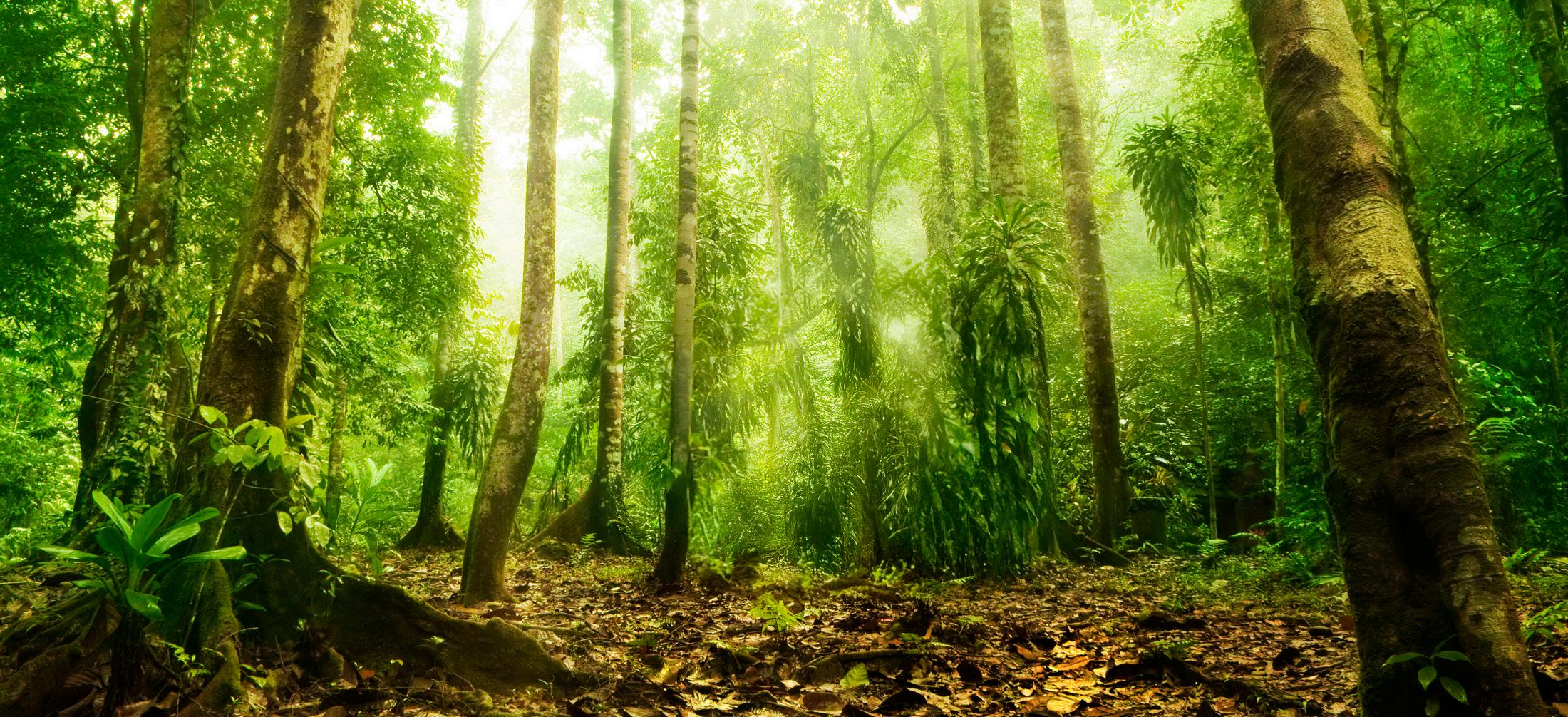
Resilience is seen as having strength in the face of hardship, being able to withstand the challenges that come our way with fortitude and determination. Sometimes this happens easily, sometimes not so much.
“
...The three core attributes of resilience as being Gratitude, Empathy and Mindfulness.
What we tend to struggle with are not the everyday challenges like the Internet going down or the hot water running out, it’s usually more personal than that and involves either ourselves or people we love suffering in some way.
Finding resilience can be difficult and alters depending on the situation. Some of us are always resilient, for others not often. Though much has been written on this, there are some takeaways that are useful when times feel hard.
I have been reading a book called The Resilience Project by Hugh Van Cuyleburg, where he cites the three core attributes of resilience as being Gratitude, Empathy and Mindfulness (GEM). He discovered this through working in India where he noticed the children were happy even in the face of abject poverty with no indication of that ever changing.
What he found were 3 core aspects being common themes among them: gratitude, empathy and mindfulness. This from children who had no power to change anything in their lives. It got me to thinking, if they can do that surely it’s possible for us to so as well?
The question becomes; how can we use this in our own lives to develop more resilience when things feel not just difficult but unsustainable?
The answer simply is: by practicing .
Feeling grateful is something we can all do; it may be that someone dropped your mail off to you personally. It could be that the sky had an amazing depth of blue you hadn’t seen earlier, or it may even be that someone in your life reflected what a wonderful person you really are. Ultimately, noticing it, and being grateful takes the focus off how hard life can be, which is where we typically send our thoughts.
The second attribute is empathy and seems more prevalent in some than others. Even in the face of hardship or disagreement, we have the opportunity to ‘see things from another’s view’. We don’t live their lives; we don’t experience what they do but having empathy for them certainly softens ‘our needing to be right’ stance. And it shows. How we feel is obvious to others and it costs us nothing to find a measure of empathy for them.
The 3rd aspect of resilience is mindfulness. This, too has been written about endlessly. Being in the moment with enjoyment and awareness is helpful to us, it calms down our central nervous system and helps us experience ‘what is’ instead of what isn’t. Some useful ways to practice this can be looking out from our desk or kitchen window and noticing what nature is doing. It may be in the gentle way the branches on the tree are swaying or the focus the birds give while pecking for food. Whatever we notice and give attention to, is mindfulness in action.
Resilience is a learned behaviour, one we are all capable of encompassing. We need to enjoy our lives, rather than endure them, and building our gratitude and empathy are big steps towards that.
How we feel is always important, what we do with it is more important. Being resilient is a big part of that. If we can’t change what is, we can only accept it. By resisting and pushing away at it, we only make it more difficult to manage.
If we could all start today though bringing more gratitude into our lives, we would find there is even more to be grateful for.
If we managed to find empathy for people and situations we are in, we would cope better.
If we could live in the moment instead of backtracking or constantly worrying about what lies ahead, I believe we would all feel more resilient. How resilient are you?
Would you like to be better at it?
Try the GEM technique and notice your resilience grow
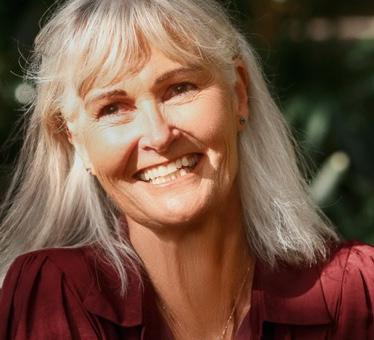
Gloria Masters was child sex trafficked for the first 16 years of her life.
Leased by her father, trained by her grandmother, she had no one willing or able to help her. Now an esteemed Author, Speaker and Founder: she is the woman behind the Global hand signal for under 16’s, released last year, to help resource children combat abuse and trafficking.
She is the founder of Handing the Shame Back foundation, a charity dedicated to adult survivors of child sexual abuse, alongside resourcing people on how to prevent CSA occurring. She is the host of the YouTube and podcast channel of the same name, now in over 90 countries; presenting interviews and resources designed exclusively for survivors.
She has written 3 books: On Angels Wings detailing her childhood, Flightpath to Healing; an experiential guide for adult survivors, and her third book; Keeping kids Safe; a roadmap for parents & teachers on how to protect children from grooming and sexual abuse.
You’ll find Gloria everywhere on social media at @handingtheshameback. You can also reach out to Gloria directly.

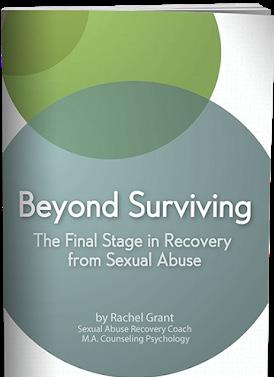
Beyond Surviving: The Final Stage in Recovery from Sexual Abuse by Rachel Grant.
Author Rachel Grant brings to the table a passionate belief that you do not have to remain trapped or confronted daily by the thoughts or behaviors that result from abuse. Through her own journey of recovery from sexual abuse, she has gained insight and understanding about what it takes to overcome abuse.
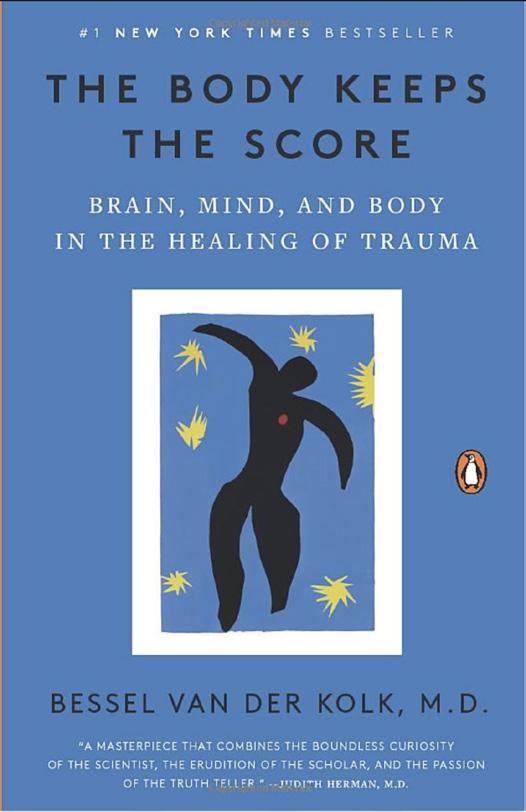
The Body Keeps the Score: Brain, Mind, and Body in the Healing of Trauma by Bessel van der Kolk M.D
Dr. Bessel van der Kolk, uses recent scientific advances to show how trauma literally reshapes both body and brain, compromising sufferers’ capacities for pleasure, engagement, self-control, and trust. He explores innovative treatments—from neurofeedback and meditation to sports, drama, and yoga—that offer new paths to
recovery by activating the brain’s natural neuroplasticity.

articulates incredibly complex child abuse grooming techniques/dynamics (ie. desensitizing physical contact, isolation from familial supports, love for perpetrators, disparity of social power), and somehow does it in an age-appropriate, non-threatening way. A brilliant, compelling, and inspiring resource for kids and those who love them.”

**Everyone Was Silent: A memoir by Diane Tarantini
Dina Martinelli grew up in a family where everyone was silent. And everyone kept secrets, including Dina.For over three decades, Dina Martinelli—now a young wife and mother—keeps quiet about what happened in her family all those years ago. She doesn’t disclose what her brother Jude did to her, and she doesn’t discuss her
lifelong relational war with her mother, Jean, due in part to Jean’s struggle with mental illness. But one day, Dina breaks her silence, and after that—with counseling and faith—her life gradually begins to improve. She even manages to forgive Jude for abusing her in multiple ways for years, until the day Jean reveals that Jude is abusing the next generation of the family. Can Dina convince the family that never protected her to speak out and act to stop Jude?
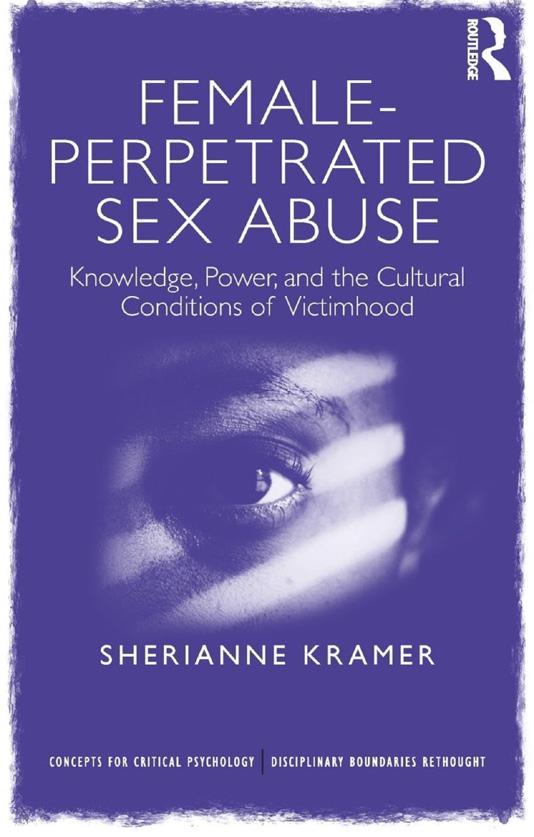
**Female-Perpetrated Sex Abuse (Concepts for Critical Psychology) 1st Edition, by Sherianne Kramer.
Female-Perpetrated Sex Abuse is a groundbreaking study into gender, sexuality and victimhood. It examines the cultural conditions of possibility for FSA victimhood as a means to advance contemporary critical understandings of the role of gender and sexuality as instruments of modern power. By tracing the historical and cultural conditions of the emergence of FSA broadly and FSA victimhood specifically, Kramer illustrates how deeply ingrained constructions of gender and sexuality both produce and constrain the possibilities for reporting, disclosing and self-identifying victimhood.

For everyone responsible for the well being of children, this book explains one of the hardest to detect threats to their safety. Female sex offenders have victimized an estimated two to three million people in the United States. As a society we find it nearly impossible to believe that females, usually seen as nurturing, are capable of sexual abuse. The result is that each year hundreds of thousands of youth are not protected, not believed, and not treated for the trauma associated with the abuse.
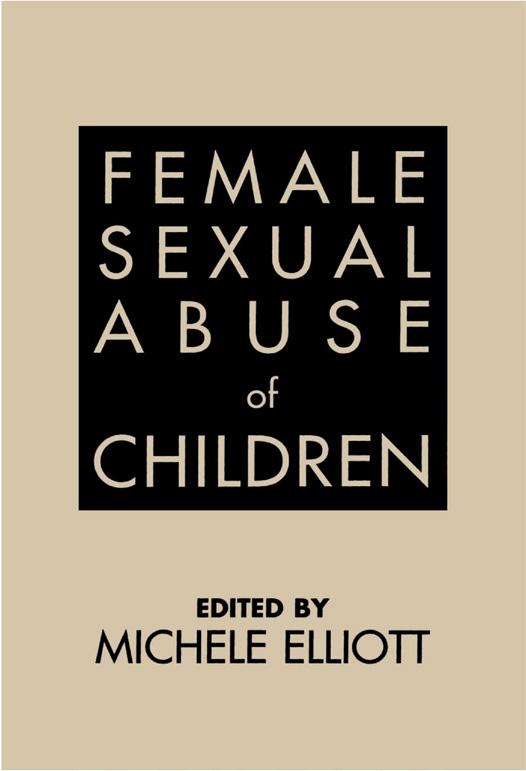
**Female Sexual Abuse of Children 1st Edition by Michele Elliott
This courageous and powerful book is a first step in addressing the secrecy, distress, anger, and
fear surrounding female sexual abuse of children. Refuting the rationales for our lack of attention to the problem and contradicting some commonly held beliefs about sexual abuse, it combines accounts from survivors with input from professionals working with both survivors and abusers.
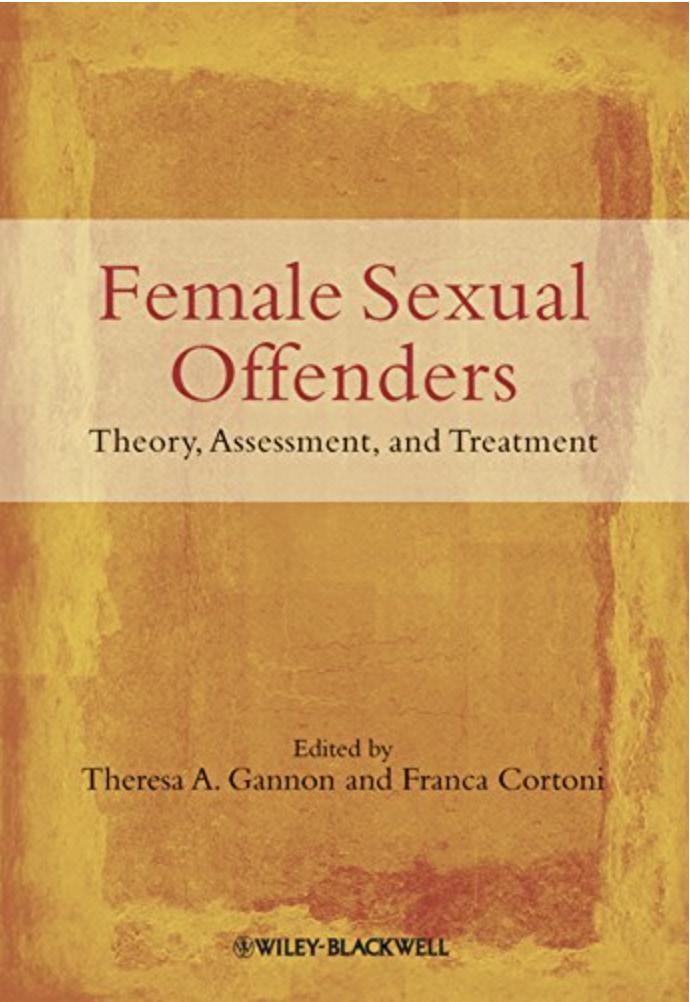
**Female Sexual Offenders: Theory, Assessment and Treatment 1st Edition, by Theresa A. Gannon (Editor), Franca Corton
Featuring a collection of essays by leading experts, Female Sexual Offenders: Theory, Assessment and Treatment is the first book to bring together current research, clinical assessment, and treatment techniques of female sexual offenders into one accessible volume.

**Female Sexual Predators: Understanding Them to Protect Our Children and Youths (Forensic Psychology) by Karen A. Duncan (Author).
This unprecedented look at female sexual predators explains why and how they prey on our children
and youths and what adults―and children and youths themselves― should understand to prevent victimization.
Karen A. Duncan helps adults be proactive so children will not fall prey to this violation.
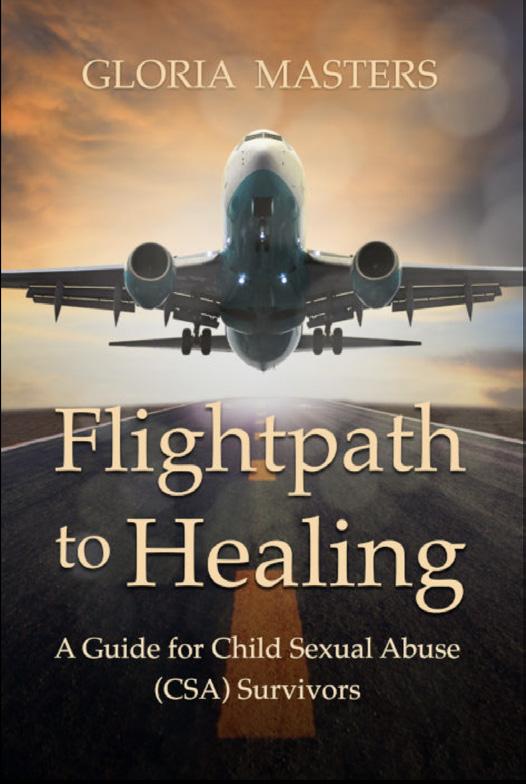
**Flightpath to Healing: A Guide for Child Sexual Abuse (CSA) Survivors by Gloria Masters.
To all Child Sexual Abuse (CSA) Survivors out there, this book is for you. Are you seeking support while navigating your way to recovery? Are you hoping for insight on reclaiming the life you should have had?
Do you want the freedom to finally shine your light in the world?
Look no further. This step by step guide includes excerpts, teachings and exercises you can try, to start rebuilding your way back to yourself. Beginning with where you are, it gently leads you to a more peaceful place of healing
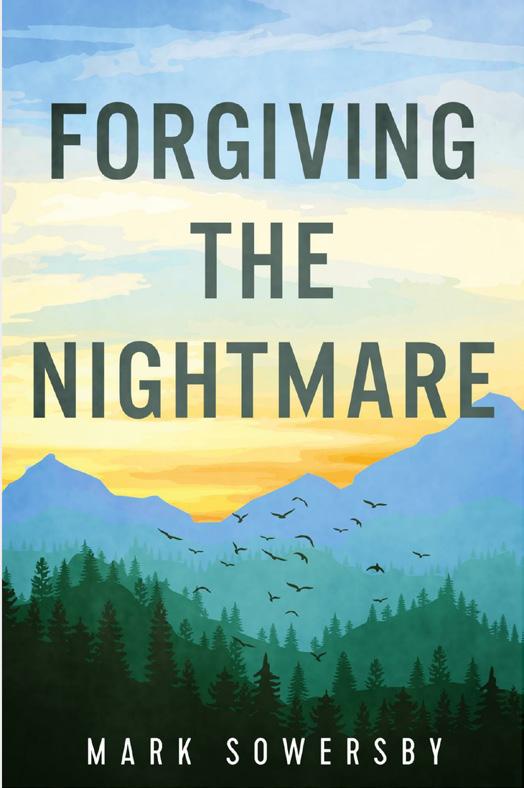
Forgiving The Nightmare, by Pastor Mark Sowersby begs the
questions “How do you forgive when you’ve been wounded deeply?” “How do you move past the pain that keeps you up at night, leaves you isolated, untrusting, and afraid? How can you possibly forgive them, especially when they don’t deserve forgiveness?”

Glorious Awakenings, My Journey of God’s Healing by Chris Cline is about her journey of God’s healing from sexual abuse. It shares the abuse and the path she took to heal – God redeeming the pieces of her that were broken emotionally, physically, spiritually, and sexually. Chris says “It is a beautiful story of how Jesus saved me – how my journey healed me and brought me to a closer relationship with God, Jesus and the Holy Spirit.”

Healing My Life: From Incest to Joy by Donna jenson.
A deeply personal story that explores the sexual violence Jenson endured at the hands of her father, the refusal of her family to acknowledge her pain, and a rocky escape as a teenager from the Midwest to start anew in sixtiesera California. Jenson writes with
her sense of humor firmly intact, reminding us that joy is possible in the face of great pain. Poignant, brave, and helpful, Healing My Life offers a much-needed testimony for anyone affected by childhood sexual abuse.
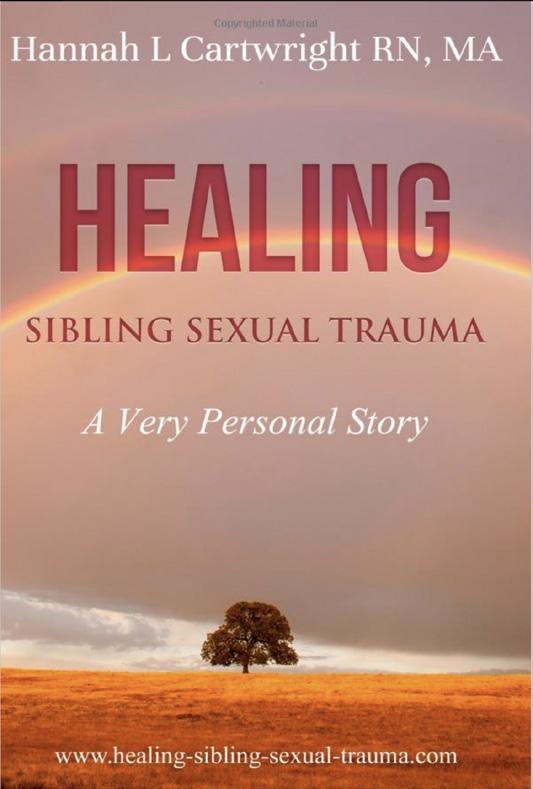
Healing Sibling Sexual Abuse: A Very Personal Story by Hannah Louise Cartwright RN, MA Memoir and self-help book for adult survivors of sibling sexual abuse written by a psychotherapist. Her book tells the personal story of recovering from sexual abuse at the hands of a sibling. Cartwright aims to help victims understand the impact sibling abuse has on survivors, provides tools to help them begin their healing journey and emphasizing that survivors can leave the past behind and build happy lives ahead.

Healing Steps by
A Gentle Path to Recovery for Survivors of Childhood Sexual Abuse is a step-by-step guide to healing from the deep pain of early sexual abuse. Such profound abuse touches the core of a woman’s being: in unwanted
memories, confusing feelings, distorted self-image, ongoing relationship struggles, and more. This frank and thorough book, written by a therapist who has herself survived sexual abuse, offers clear-eyed advice, stories of struggles and recovery, and exercises to guide you in y healing.
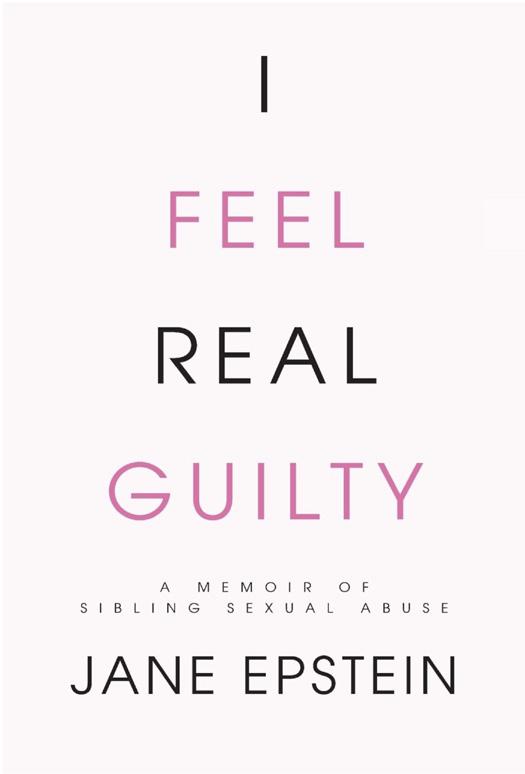
I Feel Real Guilty: A Memoir of Sibling Sexual Abuse by Jane Epstein
I’m sorry for what I did to you when you were younger
When Jane Epstein’s brother makes this confession, a tsunami of memories floods over her. She remembers the years of sexual abuse at his hands. The pain. The shame.
Suffering from trauma few talk about, Epstein searches for solace in strip clubs and hotel rooms. She finds love, loses it, and loves again. Years pass before she dares to dive into the depths of her past. Only then does she begin to heal.
It’s a call to arms, an invitation to survivors to speak out and reclaim their power.
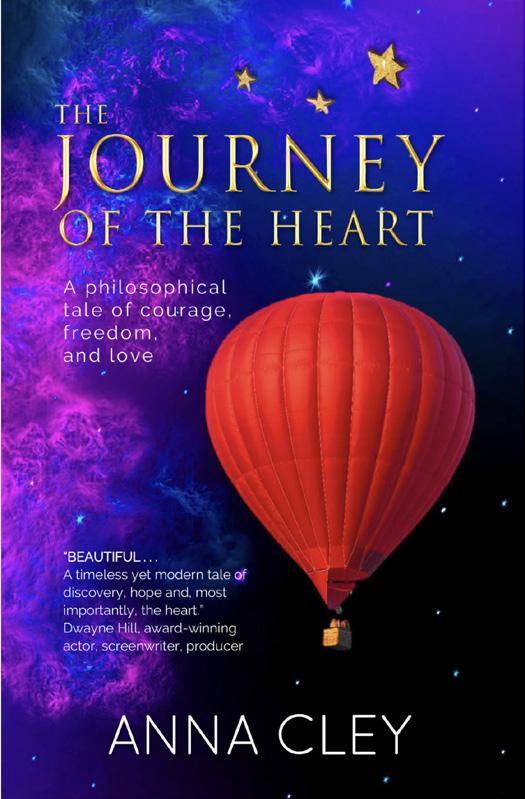
The Journey of the Heart by Anna Cley.
From floating boxes to lifesaving riddles to an enlightened mirror, The Journey of the Heart is a timeless tale that speaks to the inner child in us all.
The Journey of the Heart offers heartfelt assurance that no matter what circumstances we are born into, our future is ours to write.
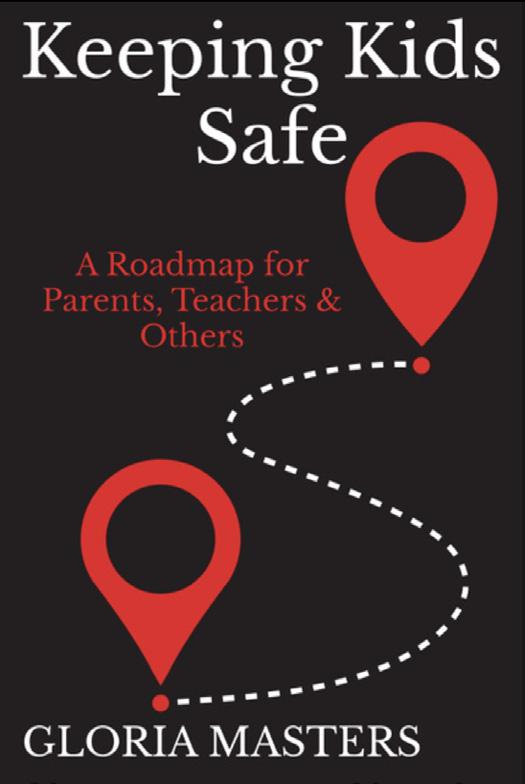
**Keeping Kids Safe: A Roadmap for Parents, Teachers & Others by Gloria Masters.
“Notice and trust children’s behavior, over their words: That is where the truth lies.”
Did you know that children are at risk of sexual abuse, now more than ever?
While your children are ‘playing on their laptops’ online grooming could be occurring.
Sexual abuse and grooming of children across the world are both frightening realities, and ways to manage this are desperately needed.
This road-map is for parents, teachers, grandparents, and frontline staff everywhere.
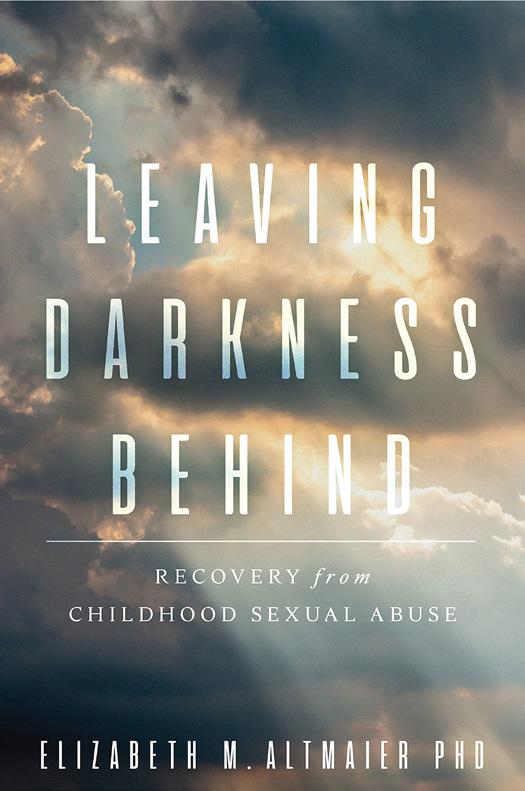
This book helps survivors find the road to recovery and learn healthy practices that will lead to thriving, not just surviving.
Survivors of childhood sexual abuse can begin a recovery journey informed by accurate understandings, not myths, and empowered by processes that help them thrive. Written for men and women by an author who is herself a survivor, this guide tells the truth about what complex trauma means for your physical and mental health.

Loving My Salt Drenched Bones by Karo Ska. Karo Ska delivers an ensemble of poetic magic in her highly anticipated book, loving my salt-drenched bones. Ska’s mastery of emotional and interpersonal subject matter takes the reader on a journey into the bright side of darkness filled with love, heartache, joy, and the poetic tone that only Ska can manifest.
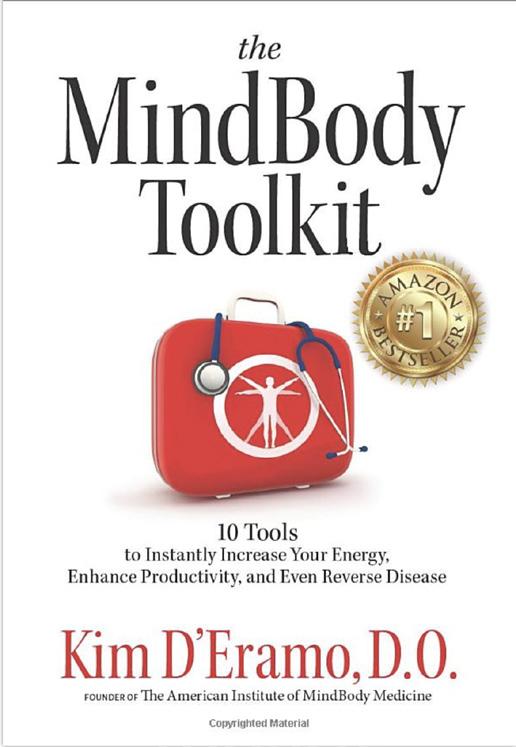
The MindBody Toolkit by Kim Deramo, D.O. Ten Tools to Instantly Increase Your Energy, Enhance Productivity, and Even Reverse Disease.
The MindBody Toolkit explains the science behind the mind-body connection and gives you 10 tools you can use anytime, anywhere to activate self-healing and awakening now!
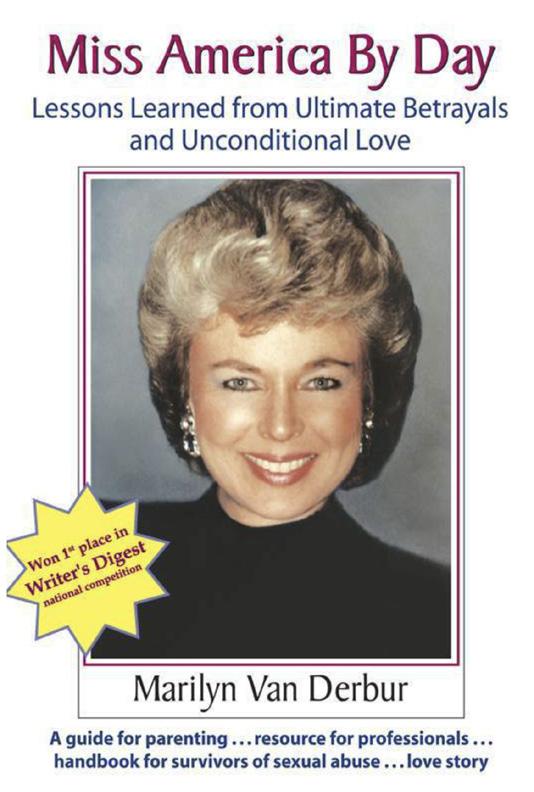
Van
tells the story of how she was sexually violated by her father from age 5 to age 18. She was 53 years old before she was able to speak the words in public: “I am an incest survivor.” Van Derbur describes in detail what specific “work” she did on her successful journey from victim to survivor.
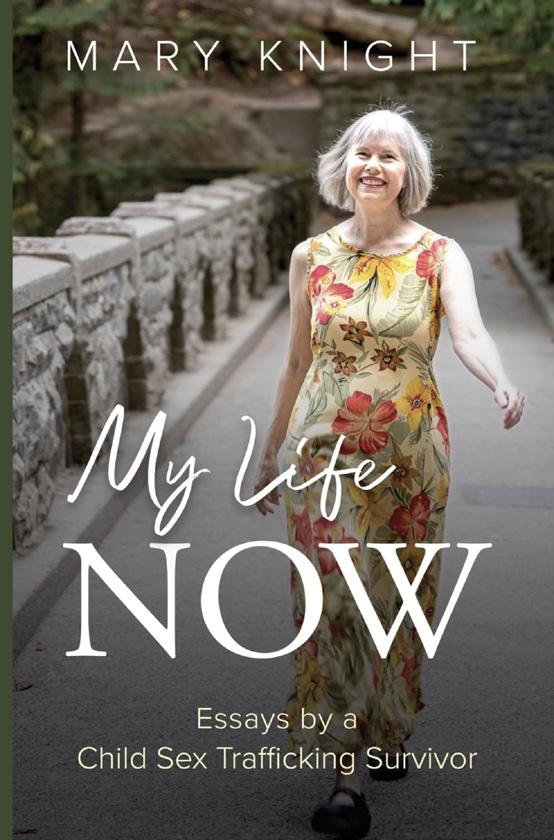
My Life Now: Essays by a Child Sex Trafficking Survivor by Mary Knight A unique survivor memoir. Essays that range from heartwarming to brutal. Individual trigger warnings (TW) allow readers to practice self-care. Washington State native Mary Knight, MSW, experienced various forms of child sex trafficking, sometimes in her own home. Her parents were her pimps. Knight’s current life is filled with safety, love, joy, and children. Happily married, she is a child advocate, a foster parent, and a grandmother.

Tanisha’s life changed before it began at the age of 5 or 6 years old when she was raped by a friend of the family and she wasn’t believed. The damage caused her to have to relearn how to walk. Her pain continued through adulthood before she could finally enjoy life.

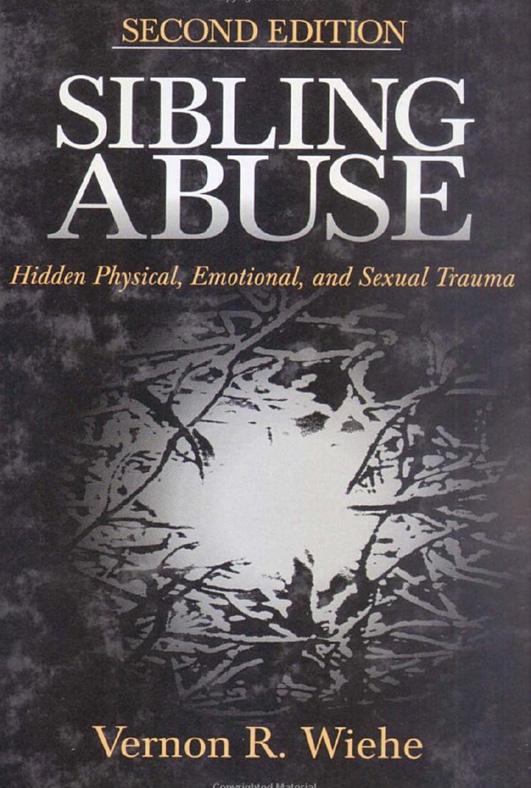
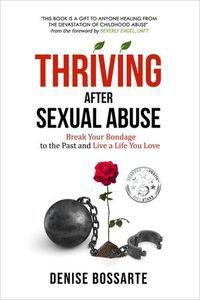
Thriving After Sexual Abuse: Break Your Bondage to the Past and Live a Life You Love by Denise Bossarte.
This extraordinary powerful story of Gloria’s journey from darkness into light is one of hope, resilience and the unrelenting power of the human spirit to survive.
It’s June 1960 and in middle-class suburban New Zealand, a child was born into sex slavery. For the first sixteen years of her life, Gloria suffered horrendous sexual, physical and psychological abuse at the hands of her father, with no one to protect her. Experienced through the eyes of a child, On Angels’ Wings will forever highlight the way we deal with child abuse, shining a light on this darkness, and challenging us not to assume that every child is safe. One voice speaking out is all it takes to save a life.
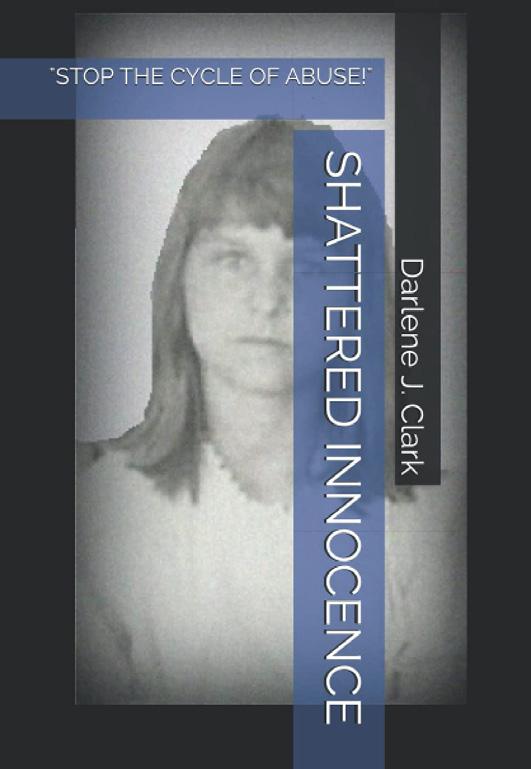
in the 1960’s, it was taboo to speak about this - especially the sexual abuse. “Shattered Innocence” takes us on Darlene’s journey of discovery and healing.
Often excused by parents as `kids will be kids’ behavior, sibling abuse remains largely unrecognized. Symptoms of such abuse and its devastating effects on victims go undetected, victims do not receive appropriate therapeutic intervention, and transgressors do not come to the attention of the courts.
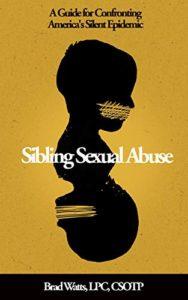
This book is written by a counselor who rehabilitates offenders. The author gives insight into sibling sexual abuse—the causes, the effects and the devastating statistics.
This book is an eloquent and empathetic self-development book laying out a blueprint for survivors to heal themselves. Bossarte writes with fierce candor as she shares her own traumatic experience with childhood sexual abuse.
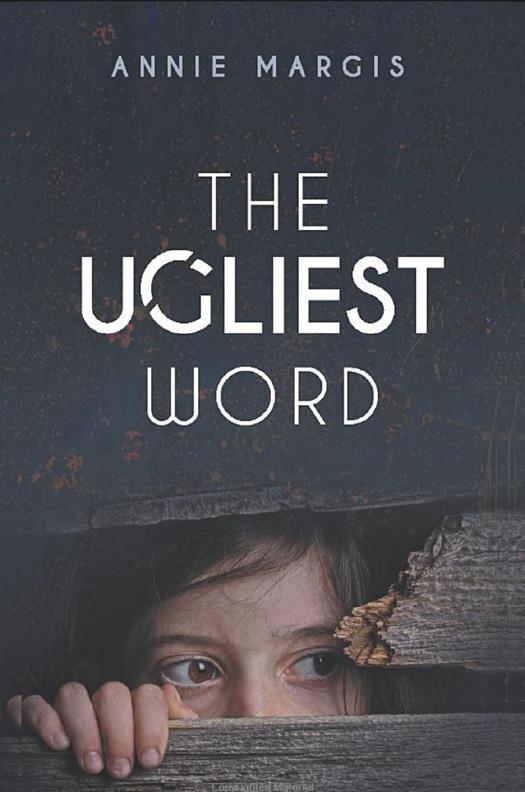
The Ugliest Word by Annie Margis tells the story of a little girl named Lark whose father is molesting her, as she navigates childhood, and the woman she becomes. An aspiring writer and artist, Lark’s spunk and creativity buoy her as the abuse progresses.
The Ugliest Word is for those who survived childhood incest and for everyone who loves a survivor, is friends with or works with one.
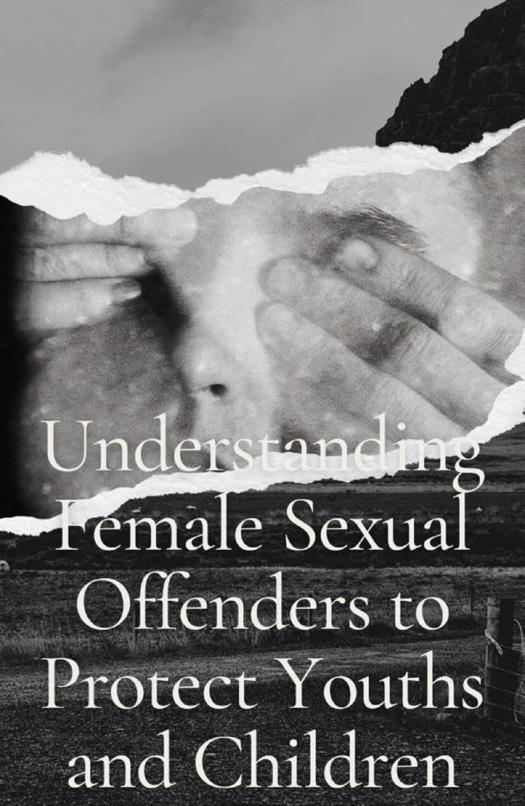
**Understanding Female Sexual Offenders to Protect Youths and Children by Whitney Ezeh
This book explains why and how female abusers prey on both youths and teens and how one can avoid them.
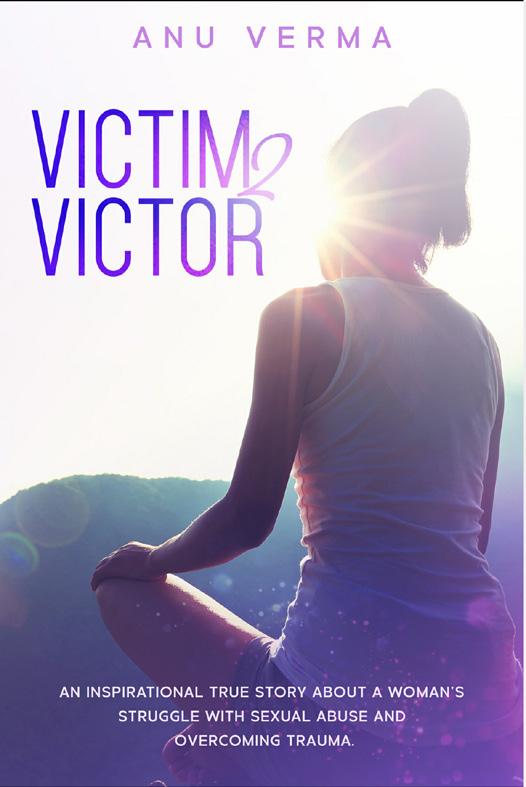
This inspiring and brutally honest memoir details the struggle for survival and the search for healing and happiness. Raised in abuse and navigating through consequences, a young, broken soul finds the strength to embark on a journey to reclaim her self-worth. Her inspiring journey is a lifelong struggle to find self-worth on the ruins of self-esteem.
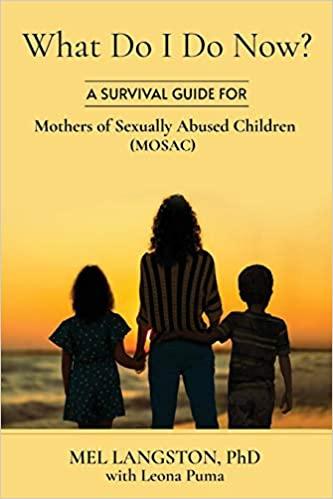
What Do I Do Now? A Survival Guide for Mothers of Sexually Abused Children (MOSAC) by Mel Langston PhD and Leona Puma.
What do I do now? is a mother’s cry after she learns her child has been sexually abused. A mother’s belief in her child’s disclosure and her active support and protection after disclosure are essential to recovery from the horror of sexual abuse.
FREE PUBLIC EDUCATION MATERIAL
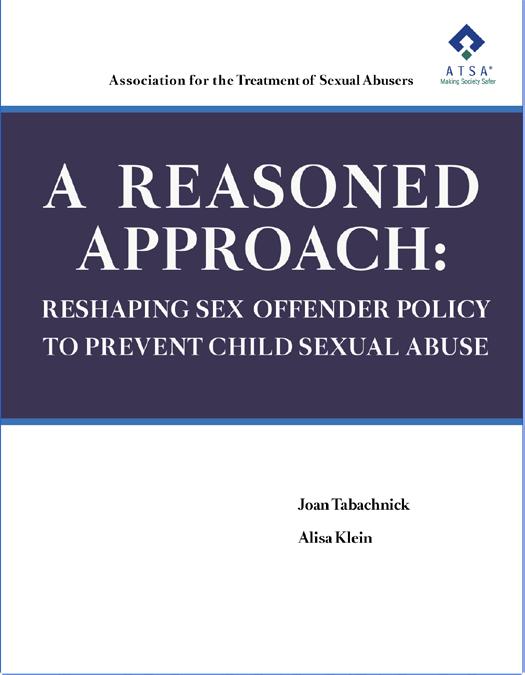
**A Reasoned Approach: Reshaping Sex Offender Policy to Prevent Child Sexual Abuse by Joan Tabachnick, and Alisa Klein.
Published in April 2011, provides an in-depth analysis of current sex offender policies and their impact on preventing child sexual abuse.
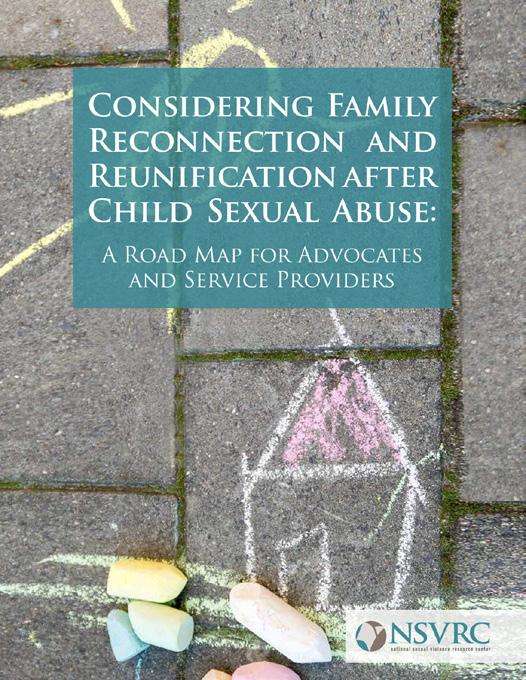
**Considering Family Reconnection and Reunification after Child Sexual Abuse: A Road Map for Advocates and Service Providers by Joan Tabachnick.
Few topics stir up such deeply emotional responses as the sexual abuse of a child. When we began talking about this guide we were met with a range of reactions from anger and fear to a deep appreciation for taking on a project that will provide a thoughtful examination of this important issue, sometimes from the very same people.
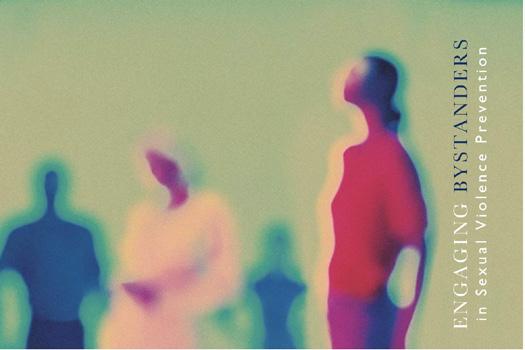
**Engaging Bystanders in Sexual Violence Prevention by Joan Tabachnick.
This booklet reviews the concept of bystander intervention and some factors that lead people to act. It considers who bystanders are and some circumstances that would motivate people to get involved.

**Let’s Talk, Adults Talking to Adults about Child Sexual Abuse by Stop It Now!.
Educational Brochure about talking with someone when you are concerned about their behaviors.

IF YOU OR SOMEONE YOU KNOW IS IN IMMEDIATE DANGER AND NEEDS MEDICAL ATTENTION, CALL 911.
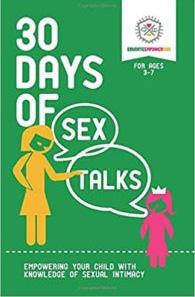
30 Days of Sex Talks for Ages 8-11: Empowering Your Child with Knowledge of Sexual Intimacy by Educate and Empower Kids. This is a series that helps you discuss sex education as a family. Having these talks with your child will establish a pattern of healthy conversations for the future. As you move through the discussions, these interactions will gain depth and your relationship will strengthen. Your child will become more comfortable talking to you about anything as he or she grows into the healthy, knowledgeable person he or she will become.
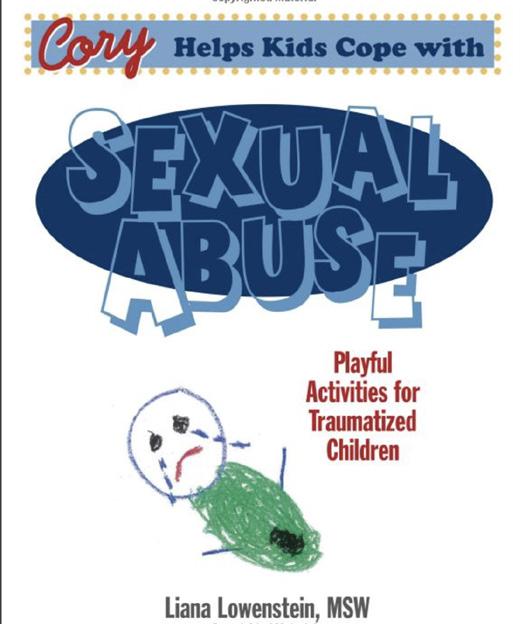
Cory Helps Kids Cope with Sexual Abuse First Edition by Liana Lowenstein This therapeutic story and collection of creative activities are designed to help children cope with sexual abuse and trauma. Therapeutic games, art, puppets, and other engaging techniques address the eight components of TF-CBT (TraumaFocused Cognitive Behavioral Therapy). Includes a reproducible
story, assessment and treatment activities, and detailed parent handouts. Geared to children aged 4 to 12.
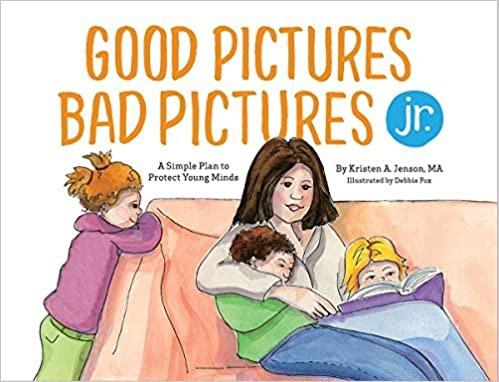
Good Pictures Bad Pictures Jr.: A Simple Plan to Protect Young Minds by Kristen A. Jenson (Author), Debbie Fox (Illustrator) It’s not if our kids come across pornography, it’s when. This is a great book for parents to read to kids about why pornography can be harmful.
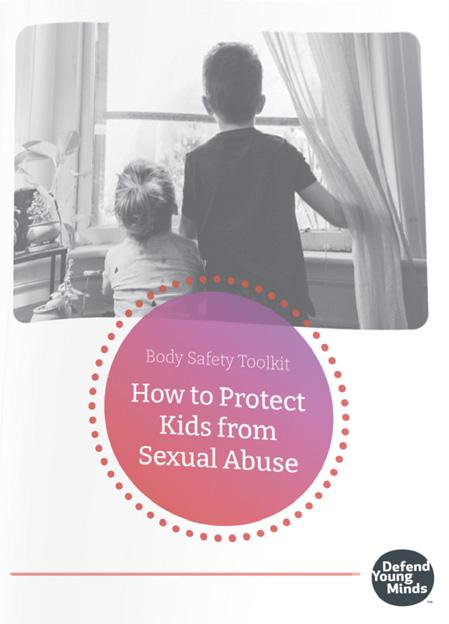
How to Protect Kids from Sexual Abuse Body Safety Toolkit by Defend Young Minds. For parents and professionals. Help your child create a body safety plan and learn to recognize and report 3 “red flag” situations to stay safe. Every child deserves to be empowered with self-defense!
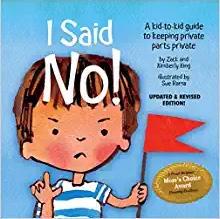
I Said No! A Kid-to-kid Guide to Keeping Private Parts Private by Kimberly King and Zack
King (Authors) and Sue Rama (Illustrator) Helping kids set healthy boundaries for their private parts can be a daunting and awkward task. Written from a kid’s point of view, I Said No! makes this task a lot easier.
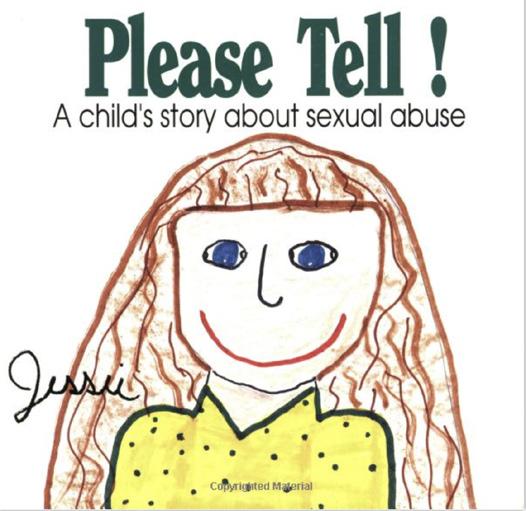
Please Tell: A Child’s Story About Sexual Abuse (Early Steps) by Jessie Written and illustrated by a young girl who was sexually molested by a family member, this book reaches out to other children in a way that no adult can, Jessie’s words carry the message, “It’s o.k. to tell; help can come when you tell.
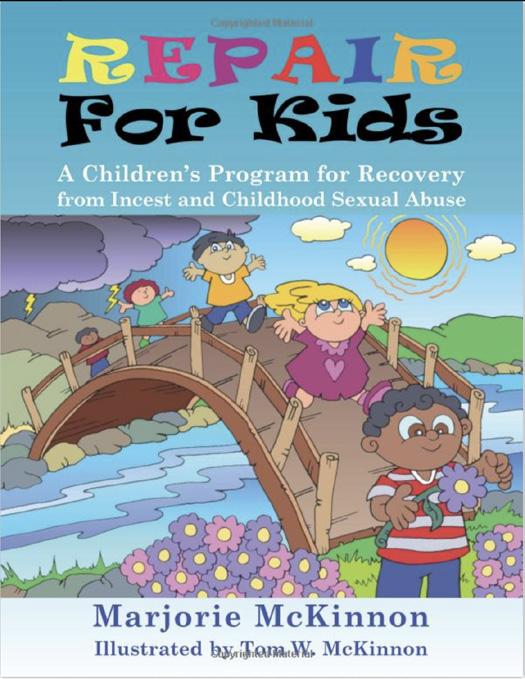
Repair for Kids: A Children’s Program for Recovery from Incest and Childhood Sexual Abuse by Margie McKinnon (Author), and Tom W. McKinnon (Illustrator) R.E.P.A.I.R is Recognition, Entry, Process, Awareness, Insight, and Rhythm. Enter a Six-Stage Program with your child to cross the Bridge of Recovery and make available a whole new world of hope.
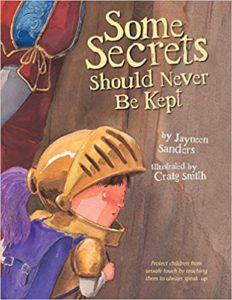
49 Some Secrets Should Never Be Kept by Jayneen Sanders (Author), and Craig Smith (Illustrator). A beautifully illustrated children’s picture book that sensitively broaches the subject of keeping children safe from inappropriate touch.
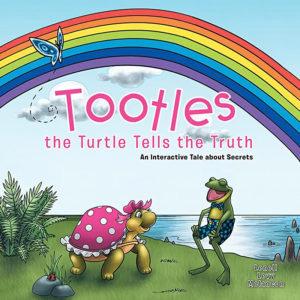
Tootles the Turtle Tells the Truth by Lenell Levy Melancon. This is a lovely book that playfully walks a child through a story about someone scaring a child into not telling. The characters ask interactive questions at the end of the book to engage readers in a candid discussion of good, bad and scary secrets.
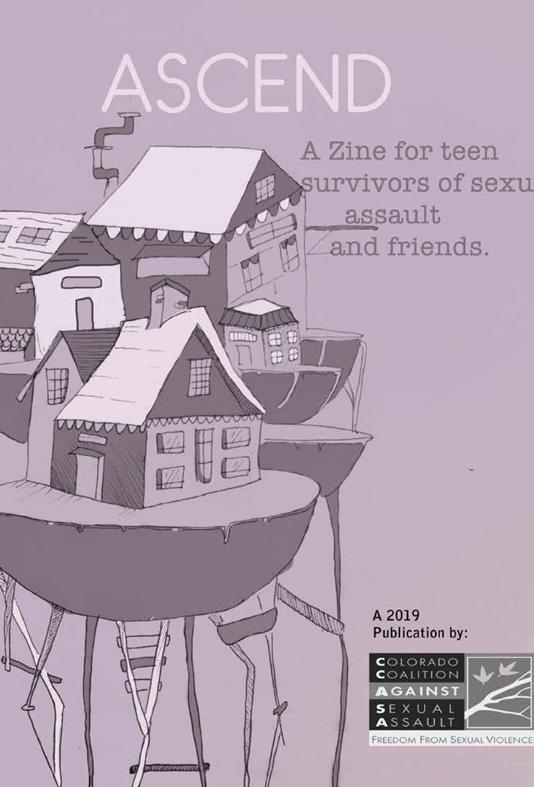
Ascend, a Zine for teen survivors of sexual assault and friends. Ascend supports young people who are survivors of sexual assault.

Caprice by Coe Booth, written with extreme sensitivity and honesty for middle-grade readers, is a painful but ultimately healing novel about finding support from your parents and friends, articulating your truth, and choosing your own path.
As Caprice tries to figure out her future, she is pulled back toward her past, and the abuse she endured from her uncle when she was little -- an abuse she’s never told anyone about.

From acclaimed author Kate Messner comes Chirp, the powerful story of a young girl with the courage to make her voice heard, set against the backdrop of a summertime mystery.
When Mia moves to Vermont the summer after seventh grade, she’s recovering from the broken arm she got falling off a balance beam. And packed away in the moving boxes under her clothes and gymnastics trophies is a secret she’d rather forget.
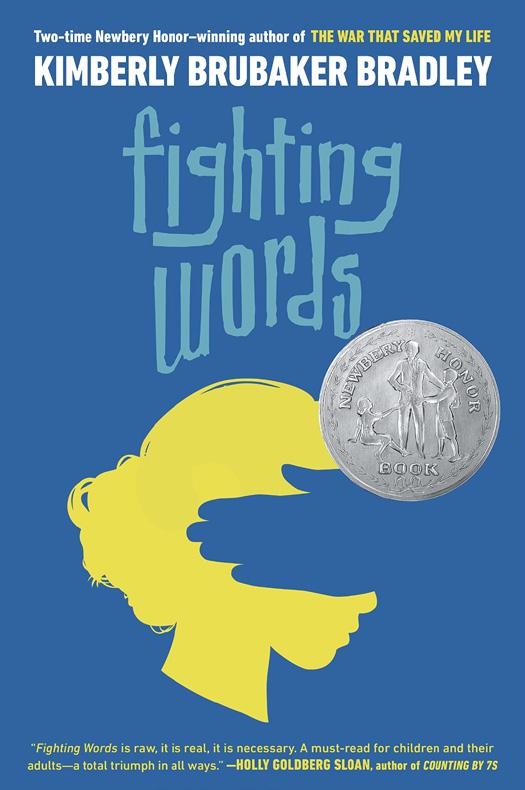
Fighting Words by Kimberly Brubaker Bradley In this powerful novel that explodes the stigma around child sexual abuse and leavens an intense tale with compassion and humor, Kimberly Brubaker Bradley tells a story about two sisters, linked by love and trauma, who must find their own voices before they can find their way back to each other.
Ten-year-old Della has always
had her older sister, Suki. When their mom went to prison, Della had Suki. When their mom’s boyfriend took them in, Della had Suki. When that same boyfriend did something so awful they had to run fast, Della had Suki. Suki is Della’s own wolf--her protector. But who has been protecting Suki? Della might get told off for swearing at school, but she has always known how to keep quiet where it counts. Then Suki tries to kill herself, and Della’s world turns so far upside down, it feels like it’s shaking her by the ankles. Maybe she’s been quiet about the wrong things. Maybe it’s time to be loud.

It Happened on Saturday by Sydney Dunlap. Thirteen-year-old Julia would much rather work with horses at the rescue barn than worry about things like dating and makeup. But when her BFF meets a boy at camp, Julia’s determined not to get left behind. After a makeover from her older sister, she posts a picture of herself online and gets a comment from Tyler a seemingly nice kid who lives across town. As they DM more and more, Julia’s sure that Tyler understands her in a way her family never has. Even better, their relationship earns her tons of attention at school. Then Julia finds out Tyler’s true plan…
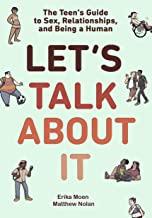
Let’s Talk About It by Erika Moen and Matthew Nolan. The Teen’s Guide to Sex, Relationships, and Being a Human. Inclusive, accessible and honest graphic novel guide to growing up, from gender and sexuality to consent and safe sex. Perfect for any teen starting to ask questions.

The Secrets We Keep by Cassie Gustofson In the vein of The Way I Used to Be and Kelly Loy Gilbert’s Conviction, this “exceedingly well-written, powerful, and suspenseful” young adult novel follows a girl’s struggle to reconcile friendship, sexual abuse, and the secrets we bury deep down inside to survive.
High school freshman Emma Clark harbors a secret—a secret so vile it could implode her whole world, a secret she’s managed to keep buried…until the day her best friend, Hannah, accuses Emma’s father of a heinous crime.
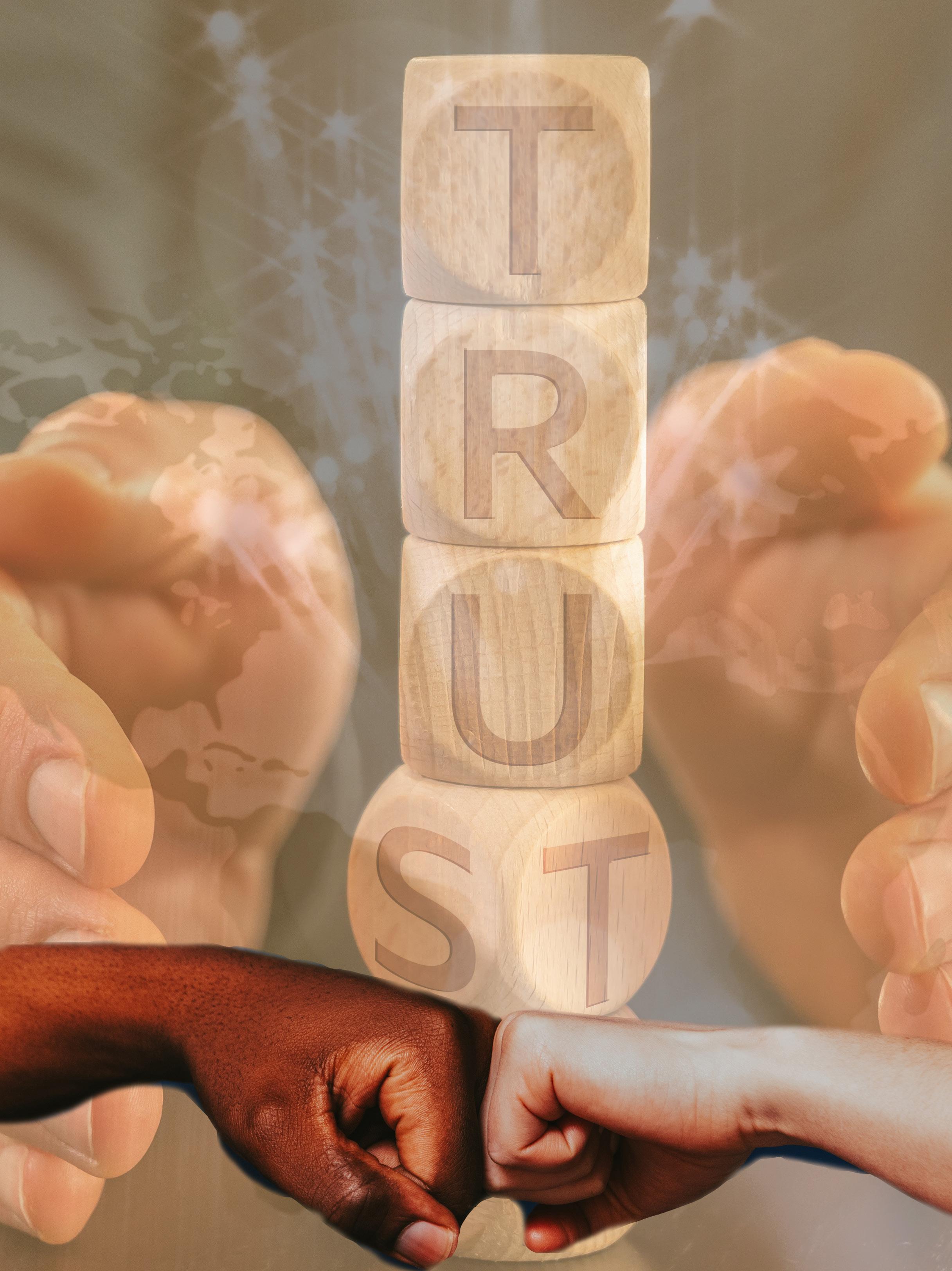
1 in 6 sponsors free anonymous chat-based support groups for male survivors of sexual abuse seeking a community of support. Sessions are offered Monday through Friday. These written chat (no audio or video) groups focus on education and mutual support for males and are facilitated by a counselor.
5Waves promoting Worldwide Awareness, Voice, Education, and Support around Sibling Sexual Trauma—child sexual abuse caused by a sibling.
Defend Young Minds We call it “digital self-defense.” Let our bestselling books, curriculum, guides and newsletter help you raise empowered, resilient, screensmart kids.
Exodus Cry is committed to abolishing sex trafficking and breaking the cycle of commercial sexual exploitation while assisting and empowering its victims.
** Enough Abuse is a citizen education and community mobilization initiative working to prevent child sexual abuse in our homes, schools, youth organizations and communities.
We are providing adults and communities with the knowledge and skills they need to put an end to the silence, and eventually, the epidemic of child sexual abuse.
Healing PTSD Naturally Kathryn Berg, of Lotus Homeopathy offers support on Facebook for people who suffer from PTSD to help them discover natural methods of dealing with PTSD, no matter what the cause. This group supports all trauma not only sexual abuse survivors.
HelpRoom Offered by 360 Communites an affiliate of RAIIN, HelpRoom is an anonymous online group chat option that allows members of the community who have been affected by sexual violence to connect with one another. Trained staff facilitate group discussions to ensure a safe environment for all visitors to discuss topics and experiences related to sexual violence.
Hidden Water Healing Circles meet weekly — either in-person or online — and are designed to enable participants to find the growing edge of their healing alongside others who have had similar experiences with childhood sexual abuse.
Incest AWARE is a group for those working to end incest and help survivors of incest abuse to heal.
Isurvive is an online abuse survivor support group. Their forums/chat rooms are open to adult survivors and their loved ones seeking to heal from all forms of abuse including sexual, physical, verbal, emotional and ritual.
Jane Epstein is a website and blog for sibling sexual abuse survivors.
The Lamplighter Movement is dedicated to recovery from incest and child sexual abuse. They have chapters located throughout the US that organize groups for survivors.
MASOC is the Massachusetts Society for a World Free of Sexual Harm by Youth. Since our founding in 1986, MASOC has provided education and training services to professionals; educated legislators on emerging issues; and coordinated efforts with the partners critical to this important work.
National Association of Adult Survivors of Child Abuse NAASCA has a list of recovery groups and services worldwide for adult survivors of abuse, including incest. Their online daytime recovery meetings are an open discussion forum about child abuse trauma and recovery and are hosted by volunteer members.
NSVRC (National Sexual Violence Resource Center) has compiled a list of linkable websites and resources offering support and help for survivors, which includes links to support groups.
Sexual Assault Advocacy Network (SAAN) Facebook Group was founded to support the people who support sexual violence survivors. Their active Facebook group connects survivoradvocates who are working to support other incest and other
sexual abuse survivors, change policy and raise awareness.
RAINN’s National Resources for Sexual Assault Survivors and their Loved Ones resources and references.
SiblingsToo Podcast The voice of sibling sexual abuse survivors and their families. Reducing stigma with heartfelt stories and real science.
Stop It Now! Stop it Now! Prevents the sexual abuse of children by mobilizing adults, families, and communities through direct support, information, and resources to take actions that protect children before they are harmed.
Survivors Of Childhood Trauma is a friendly Facebook group that offers help and advice to fellow survivors from all walks of life.
Survivors of Incest Anonymous (SIA) is a 12-step recovery program for adult survivors of incest. They offer a range of peersupport groups including virtual, phone and in-person – all free of cost. Their website also contains resources and information of interest to incest survivors.
Wings Support Groups offers a variety of virtual and in-person groups in the Denver Metro area. Wings supports adult survivors of childhood sexual abuse to live their fullest, healthiest lives as they speak about, heal from and thrive beyond CSA trauma.
SUPPORT FOR FAMILIES OF SURVIVORS
M*OASIS Support (Mothers* Of Adult Survivors of Incest and Sexual Abuse) is a resource website and blog for anyone looking to understand how to support a survivor of incest and sexual abuse.
StopSO Support for Families Online Group is a safe and supportive space for family members of a sexual offender or for family members of someone who is worried that they may cause sexual harm. (StopSO also provides services for those at risk of offending and concerned about their thoughts or behavior.).
Uncovering Female Child Sexual Offenders—Needs and Challenges for Practice and Research
The Proportion of Sexual Offenders Who Are Female Is Higher Than Thought: A MetaAnalysis Authors Franca Cortoni, Kelly M Babchishin, and Clémence Rat
Insights on Female Sex Offenders from the Missouri Registry
Psychology Today’s website has a “Find a Therapist” directory of therapists, psychiatrists, treatment centers and support groups located throughout the US that is searchable by city or zip code.
** Insights on Female Sex Offenders from the Missouri Registry by Elias Ghossoub and Nadia El Harake. The sociocultural description of women as being nurturing, non-aggressive and, more significantly, nonsexual has diverted the attention from female sexual offending. The true rate is remarkably higher because the care-taking behavior of women masks their sexual offenses.
** The Proportion of Sexual Offenders Who Are Female Is Higher Than Thought: A MetaAnalysis by Franca Cortoni, Kelly M Babchishin, and Clémence Rat. Women commit sexual offenses, but the proportion of sexual offenders who are female is subject to debates.
** Uncovering Female Child Sexual Offenders—Needs and Challenges for Practice and Research by Safiye Tozdan, Peer Briken and Arne Dekker. This article provides a short literature overview on female child sexual offenders (FCSO) focusing on the discrepancy between prevalence rates from different sources, characteristics of FCSO and their victims, as well as the societal “culture of denial” surrounding these women.

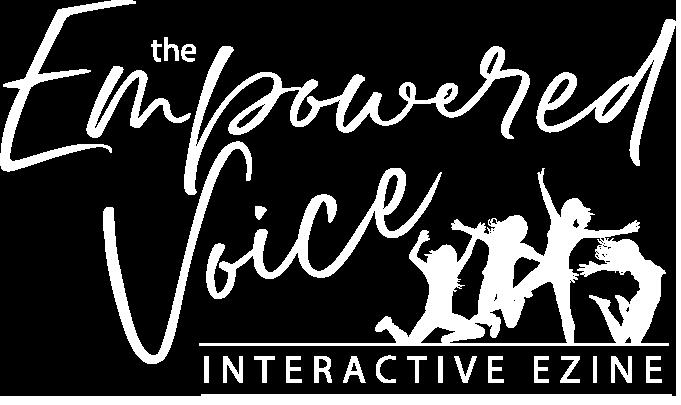
Voices Heard shatters the long held silence of sexual abuse survivors through story-telling and expressive arts.